DIRECTION
![]()
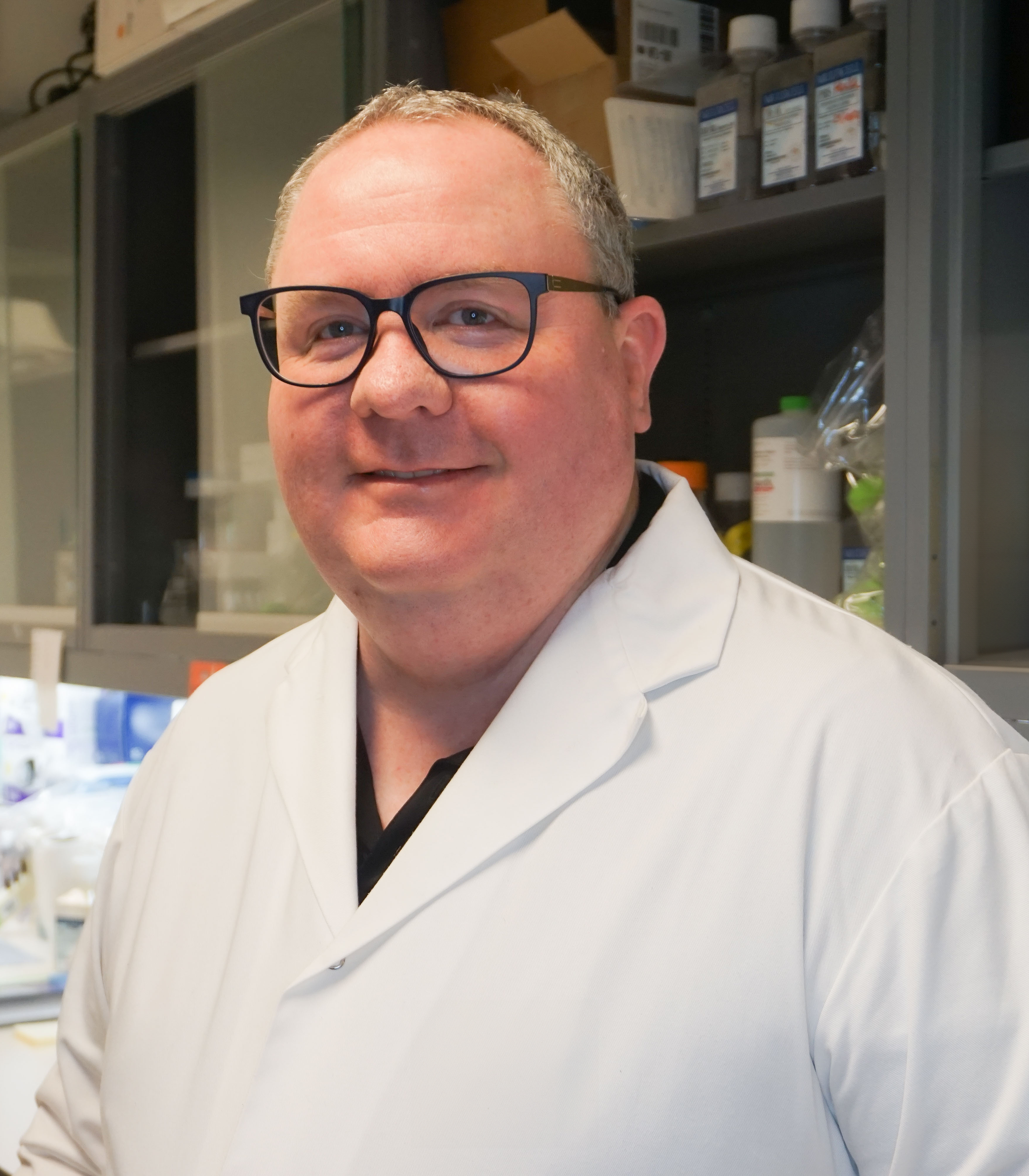 Dr. Thomas Durcan
Dr. Thomas Durcan
Directeur
"Open science goes beyond just being a concept. It means finding ways every day to work with others, to share our work, to hear about the work of others, and to ensure the research we do is of the highest standard to be reproduced anywhere else in the world. By opening ourselves up, it forces us to be better and to do better. For too long, scientists have been afraid to engage with the wider community and open science forces us to move outside of our comfort zone. Open science affords us this chance to get people to tune in and to engage with everyone working at the Neuro, so that by 2030 we will have finally turned the corner and have new therapies for so many of these brain disorders."
Communiquez avec Dr Durcan sur sa page LinkedIn.
Lisez la biographie de Dr. Durcan
Originaire de Dublin, en Irlande, je travaille à l’Institut-Hôpital Neurologique de Montréal (Le Neuro) depuis bientôt 14 ans et cet endroit est devenu pour moi comme une deuxième maison. En tant que professeur agrégé au Neuro et à l’Université McGill (ResearchFest Platform Pitch), mes recherches portent sur l’utilisation de cellules souches dérivées de patients pour réussir à développer des essais de découverte phénotypique et des modèles 3D d'organoïdes cérébraux (Brains on a Dish: Revolutionizing Parkinson’s Disease research with brain organoids) pour mieux étudier les troubles neurodégénératifs et neurodéveloppementaux. En tant que directeur de la Plateforme de découverte de médicaments en phase précoce (PDMPP) du Neuro, je supervise une équipe de plus de 30 chercheurs et étudiants, déterminés à appliquer la nouvelle technologie des cellules souches, combinée à l’édition du génome CRISPR, aux modèles d'organoïdes et aux nouvelles technologies microfluidiques pour élucider les causes sous-jacentes de ces troubles neurologiques complexes. Combinée aux nouvelles approches du groupe visant à créer des profils MultiOmics sur les iPSC dérivées de patients, la stratégie à long terme consiste à identifier de nouvelles thérapies de précision personnalisées pouvant être appliquées à la création d’essais cliniques sur cellules de laboratoire.
Publications sélectionnées
URL to list of published work (Durcan TM / Durcan T; 69 publications 2007-2023): https://pubmed.ncbi.nlm.nih.gov/?term=durcan+t&filter=years.2007-2023
- Lépine S, Nauleau-Javaudin A, Deneault E, Chen CX, Abdian N, Franco-Flores AK, Haghi G, Castellanos-Montiel MJ, Maussion G, Chaineau M, Durcan TM. Homozygous ALS-linked mutations in TARDBP/TDP-43 lead to hypoactivity and synaptic abnormalities in human iPSC-derived motor neurons. iScience. 2024 Feb 9;27(3):109166. doi: 10.1016/j.isci.2024.109166.
- Dorion MF, Yaqubi M, Senkevich K, Kieran NW, MacDonald A, Chen CXQ, Luo W, Wallis A, Shlaifer I, Hall JA, Dudley RWR, Glass IA; Birth Defects Research Laboratory; Stratton JA, Fon EA, Bartels T, Antel JP, Gan-Or Z, Durcan TM, Healy LM. MerTK is a mediator of alpha-synuclein fibril uptake by human microglia. Brain. 2024 Feb 1;147(2):427-443. doi: 10.1093/brain/awad298.
- Thiry L, Sirois J, Durcan TM, Stifani S. Generation of human iPSC-derived phrenic-like motor neurons to model respiratory motor neuron degeneration in ALS. Commun Biol. 2024 Feb 28;7(1):238. doi: 10.1038/s42003-024-05925-z.
- Piscopo VEC, Chapleau A, Blaszczyk GJ, Sirois J, You Z, Soubannier V, Chen CX, Bernard G, Antel JP, Durcan TM. The use of a SOX10 reporter toward ameliorating oligodendrocyte lineage differentiation from human induced pluripotent stem cells. Glia. 2024 Mar 18. doi: 10.1002/glia.24524.
- Dorion MF, Casas D, Shlaifer I, Yaqubi M, Fleming P, Karpilovsky N, Chen CX, Nicouleau M, Piscopo VEC, MacDougall EJ, Alluli A, Goldsmith TM, Schneider A, Dorion S, Aprahamian N, MacDonald A, Thomas RA, Dudley RWR, Hall JA, Fon EA, Antel JP, Stratton JA, Durcan TM, La Piana R, Healy LM. An adapted protocol to derive microglia from stem cells and its application in the study of CSF1R-related disorders. Mol Neurodegener. 2024 Apr 5;19(1):31. doi: 10.1186/s13024-024-00723-x.
Pré-publications récentes
- Rhalena A. Thomas, Julien M. Sirois, Shuming Li, Alex Gestin, Valerio E. Piscopo, Paula Lépine, Meghna Mathur, Carol X.Q. Chen, Vincent Soubannier, Taylor M. Goldsmith, Lama Fawaz, Thomas M. Durcan, Edward A. Fon. CelltypeR: A framework to identify and characterize cell types in human midbrain organoids using flow cytometry. bioRxiv 2022.11.11.516066; doi: https://doi.org/10.1101/2022.11.11.516066.
- Armin Bayati, Riham Ayoubi, Cornelia E. Zorca, Adriana Aguila, Chanshuai Han, Emily Banks, Emmanuelle Nguyen-Renou, Wen Luo, Irina Shlaifer, Esther Del Cid-Pellitero, Moein Yaqubi, Edward A. Fon, Jo Anne Stratton, Thomas M. Durcan, Patrick Nahirney, Peter S. McPherson. A dual hit of α-synuclein internalization and immune challenge leads to formation and maintenance of Lewy body-like inclusions in human dopaminergic neurons. bioRxiv 2023.05.29.542776; doi: https://doi.org/10.1101/2023.05.29.542776
- C. Sahara Khademullah, Julien Bourbonnais, Mathilde M. Chaineau, María José Castellanos-Montiel, Iason Keramidis, Alexandra Legault, Marie-Ève Paquet, Agessandro Abrahao, Lorne Zinman, Janice Robertson, Thomas M. Durcan, Melanie A. Woodin, Antoine G. Godin, Yves De Koninck. KCC2 as a novel biomarker and therapeutic target for motoneuron degenerative disease. bioRxiv 2023.08.24.554410; doi: https://doi.org/10.1101/2023.08.24.554410
- B. Vanderperre, A. Muraleedharan, M.-F. Dorion, F. Larroquette, E. Del Cid Pellitero, N. Rajakulendran, C. X.-Q. Chen, R. Larivière, C. Michaud-Tardif, R. Chidiac, D. Lipuma, G. MacLeod, R. Thomas, Z. Wang, W.E. Reintsch, W. Luo, I. Shlaifer, Z. Fuming, K. Xia, L Yan., Z. Steinhart, R.J. Linhardt, J.-F. Trempe, J. Liu, T.M. Durcan, S. Angers, E.A. Fon. A genome-wide CRISPR/Cas9 screen identifies genes that regulate the cellular uptake of α-synuclein fibrils by modulating heparan sulfate proteoglycans. bioRxiv 2023.09.29.560170; doi: https://doi.org/10.1101/2023.09.29.560170
- Vincent Soubannier, Mathilde Chaineau, Lale Gursu, Sarah Lepine, David Kalaydjian, Ghazal Haghi, Guy Rouleau, Thomas Durcan, Stefano Stifani. Early nuclear phenotypes and reactive transformation in human iPSC-derived astrocytes from ALS patients with SOD1 mutations. bioRxiv 2023.10.05.561079; doi: https://doi.org/10.1101/2023.10.05.561079
- Jace Jones-Tabah, Kathy He, Konstantin Senkevich, Nathan Karpilovsky, Ghislaine Deyab, Yuting Cousineau, Daria Nikanorova, Taylor Goldsmith, Esther del Cid Pellitero, Carol X-Q. Chen, Wen Luo, Zhipeng You, Narges Abdian, Isabella Pietrantonio, Thomas Goiran, Jamil Ahmad, Jennifer A. Ruskey, Farnaz Asayesh, Dan Spiegelman, Cheryl Waters, Oury Monchi, Yves Dauvilliers, Nicolas Dupré, Irina Miliukhina, Alla Timofeeva, Anton Emelyanov, Sofya Pchelina, Lior Greenbaum, Sharon Hassin-Baer, Roy N. Alcalay, Austen Milnerwood, Thomas M. Durcan, Ziv Gan-Or, Edward A. Fon. The Parkinson’s disease risk gene cathepsin B promotes fibrillar alpha-synuclein clearance, lysosomal function and glucocerebrosidase activity in dopaminergic neurons. bioRxiv 2023.11.11.566693; doi: https://doi.org/10.1101/2023.11.11.566693
- Rhalena A Thomas, Eddie Cai, Wolfgang Reintsch, Chanshuai Han, Sneha Shinde, Roxanne Lariviere, Andrea Krahn, Carol X.Q. Chen, Emmanuelle Nguyen-Renou, Eric Deneault, Zhipeng You, Thomas M Durcan, Edward A. Fon. A deep learning convolutional neural network distinguishes neuronal models of Parkinson's disease from matched controls. bioRxiv 2023.11.23.568499; doi: https://doi.org/10.1101/2023.11.23.568499
- Sarah Lépine, Gilles Maussion, Alexandria Schneider, Angela Nauleau-Javaudin, María José Castellanos-Montiel, Georgina Jiménez Ambriz, Dan Spiegelman, Narges Abdian, Anna Krystina Franco-Flores, Ghazal Haghi, Lale Gursu, Mathilde Chaineau, Thomas Durcan. Transcriptome-based screening in TARDBP/TDP-43 knock-in motor neurons identifies the NEDD8-activating enzyme inhibitor MLN4924. bioRxiv 2024.01.30.578100; doi:https://doi.org/10.1101/2024.01.30.578100
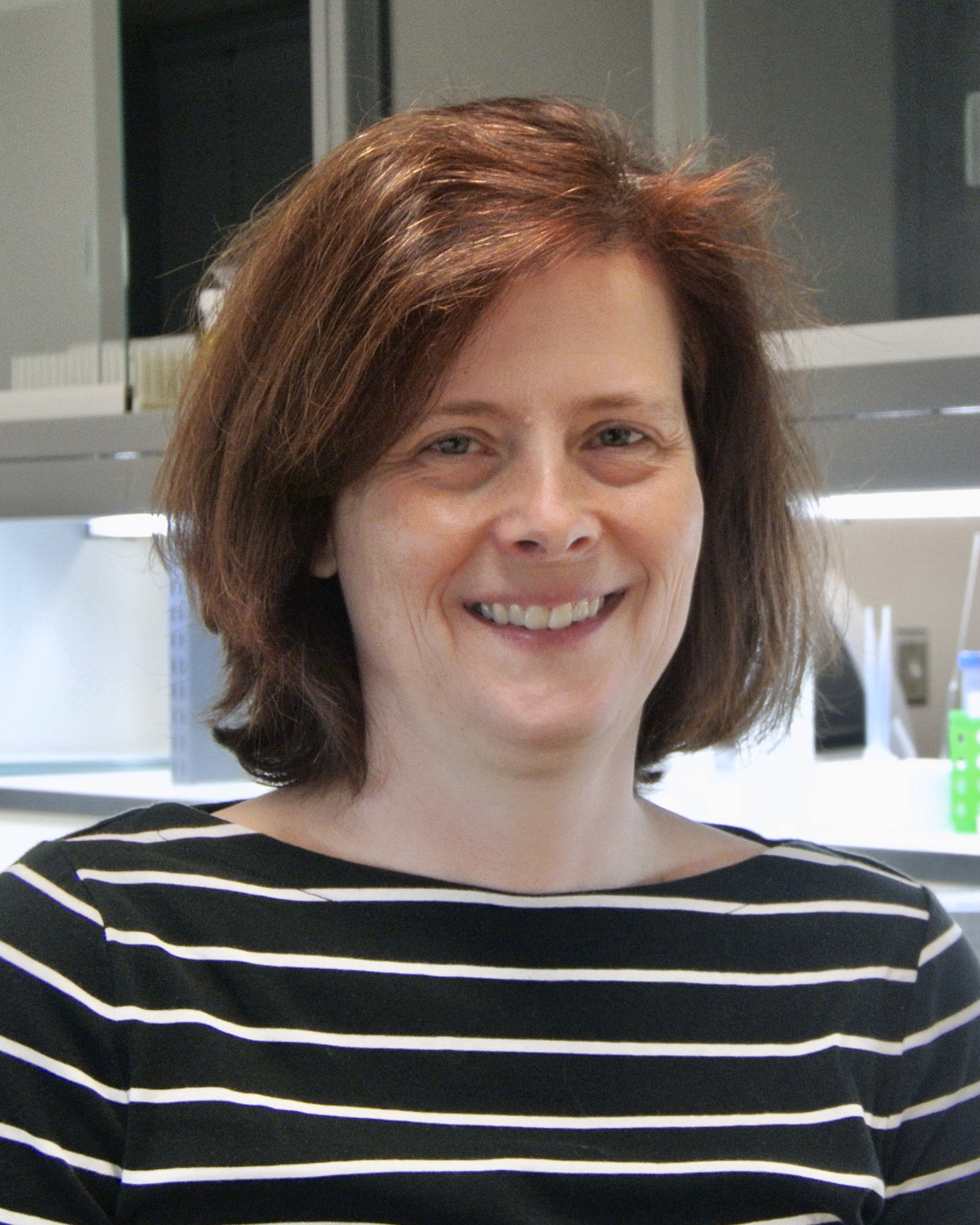 Genevieve.dorval [at] mcgill.ca (Genevieve Dorval)
Genevieve.dorval [at] mcgill.ca (Genevieve Dorval)
Directrice associée/Gestionnaire des opérations
"The Neuro offers a challenging and exciting environment where smart, positive and open-minded people all work together for the advancement of science."
"Le Neuro est un institut connu des Montréalais pour son prestige. En tant qu’employée, j’y trouve également un endroit où les gens partagent des valeurs d’entraide et d’intégrité. L’avancement de la science s’y fait dans un environnent positif et ouvert d’esprit."
Lisez la biographie de Genevieve
J'ai commencé à travailler au Neuro en avril 2000 après avoir terminé ma maîtrise à Montréal. J'ai travaillé comme assistante de recherche dans un laboratoire de signalisation cellulaire dirigé par le Dr Phil Barker. Mes fonctions comprenaient des travaux de biologie moléculaire comme le clonage et la purification de virus, mais aussi la gestion de laboratoire. Début 2016, j'ai rejoint l'équipe du Dr Durcan où j'ai eu l'opportunité de me familiariser avec la culture d’iPSC et l'édition du génome par CRISPR. Je suis maintenant gestionnaire des opérations et m'assure que tous les scientifiques de notre groupe peuvent mener leurs expériences efficacement.
Publications sélectionnées
- Unsain N, Dorval G, Sheen JH, Barker PA. Generation and characterization of mice bearing null alleles of nradd/Nrh2. Genesis. 2016 Dec;54(12):605-612. doi: 10.1002/dvg.22989. Epub 2016 Nov 12.
- McLelland GL, Goiran T, Yi W, Dorval G, Chen CX, Lauinger ND, Krahn AI, Valimehr S, Rakovic A, Rouiller I, Durcan TM, Trempe JF, Fon EA. Mfn2 ubiquitination by PINK1/parkin gates the p97-dependent release of ER from mitochondria to drive mitophagy. Elife. 2018 Apr 20;7. pii: e32866. doi: 10.7554/eLife.32866.
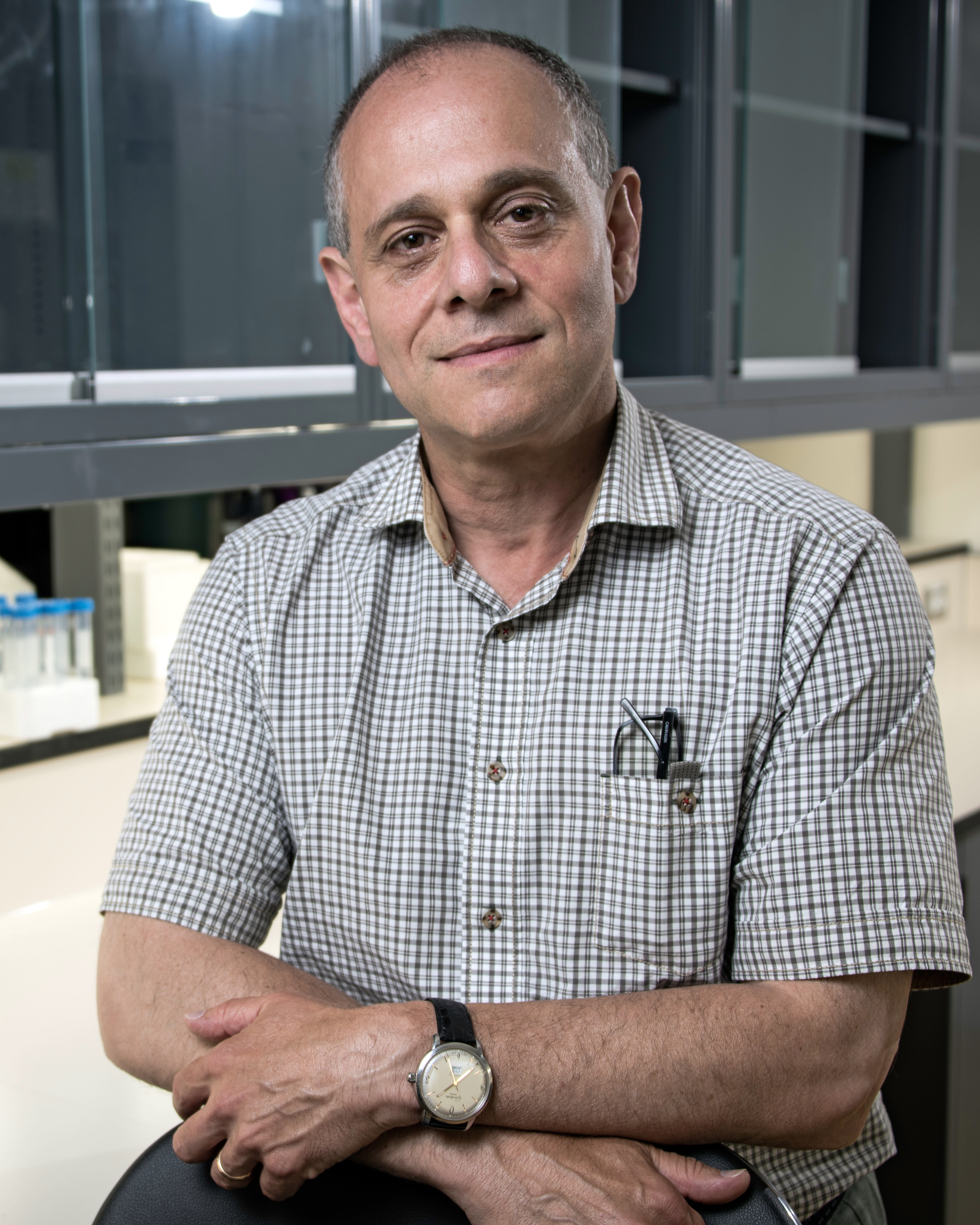 Dr. Edward Fon
Dr. Edward Fon
Conseiller scientifique
"I have the good fortune of being able to work both as a clinician and a scientist. I am reminded on a daily basis of the affliction of patients with Parkinson's disease. In my lab, we are striving to find out how the disease develops on a cellular and molecular level."
Learn more about The Fon Lab.
Dr. Fon's research focuses on the molecular events leading to the degeneration of dopamine neurons in Parkinson's disease. He is particularly interested in α-synuclein, parkin, and PINK1, all genes known to cause familial forms of the disease.
Lisez la biographie de Dr. Fon
Le Dr Edward Fon, MD, FRCP(C) est neurologue et scientifique à l'Institut-Hôpital neurologique de Montréal ((Le Neuro). Il est professeur à l'Université McGill, titulaire d'une chaire de recherche du Canada (niveau 1) sur la maladie de Parkinson et directeur du programme Parkinson de McGill, un centre d'excellence national de la Fondation Parkinson. Ses recherches portent sur les événements moléculaires conduisant à la dégénérescence neuronale dans la maladie de Parkinson (MP). Au cours de la dernière décennie, certains gènes responsables de formes familiales de la maladie ont été identifiés. Le Dr Fon s'intéresse particulièrement à la façon dont ces gènes s'unissent et interagissent pour provoquer la MP. Ses travaux dans ce domaine pourraient fournir des indices importants sur les mécanismes de la mort neuronale dans la maladie de Parkinson et potentiellement conduire à de nouvelles stratégies thérapeutiques innovantes. Le Dr Fon est actuellement directeur du FRQS - Réseau Parkinson Québec (RPQ) et codirecteur du Parkinson Canada/Brain Canada - Canadian Open Parkinson Network (C-OPN). Il a reçu plusieurs prix au cours de sa carrière tels que les prix de clinicien-chercheur des IRSC, de boursier national du FRQS et de Chercheur-Boursier (Senior) du FRSQ et le Prix de Jeune Chercheur Blaise Pascal. Les recherches du Dr Fon sont soutenues par les IRSC (subvention de la Fondation), le CQDM, Brain Canada, Parkinson Canada, le CCNA et la Fondation Michael J. Fox.
Publications sélectionnées
- Tavassoly, O., Del Cid Pellitero, E., Larroquette, F., Cai, E., Thomas, R. A., Soubannier, V., Luo, W., Durcan, T. M., & Fon, E. A. (2021). Pharmacological Inhibition of Brain EGFR Activation By a BBB-penetrating Inhibitor, AZD3759, Attenuates α-synuclein Pathology in a Mouse Model of α-Synuclein Propagation. Neurotherapeutics : the journal of the American Society for Experimental NeuroTherapeutics, 10.1007/s13311-021-01017-6. Advance online publication. https://doi.org/10.1007/s13311-021-01017-6
- Eldeeb, M. A., Bayne, A. N., Trempe, J. F., & Fon, E. A. (2020). Fine-Tuning TOM-Mitochondrial Import via Ubiquitin. Trends in cell biology, 30(6), 425–427. https://doi.org/10.1016/j.tcb.2020.04.007
- Roberts, R. F., Bayne, A. N., Goiran, T., Lévesque, D., Boisvert, F. M., Trempe, J. F., & Fon, E. A. (2021). Proteomic Profiling of Mitochondrial-Derived Vesicles in Brain Reveals Enrichment of Respiratory Complex Sub-assemblies and Small TIM Chaperones. Journal of proteome research, 20(1), 506–517. https://doi.org/10.1021/acs.jproteome.0c00506
- Gan-Or, Z., Rao, T., Leveille, E., Degroot, C., Chouinard, S., Cicchetti, F., Dagher, A., Das, S., Desautels, A., Drouin-Ouellet, J., Durcan, T., Gagnon, J. F., Genge, A., Karamchandani, J., Lafontaine, A. L., Sun, S., Langlois, M., Levesque, M., Melmed, C., Panisset, M., … Fon, E. A. (2020). The Quebec Parkinson Network: A Researcher-Patient Matching Platform and Multimodal Biorepository. Journal of Parkinson's disease, 10(1), 301–313. https://doi.org/10.3233/JPD-191775
- Mohamed, N. V., Lépine, P., Lacalle-Aurioles, M., Sirois, J., Mathur, M., Reintsch, W., Beitel, L. K., Fon, E. A., & Durcan, T. M. (2021). Microfabricated disk technology: rapid scale up in midbrain organoid generation. Methods (San Diego, Calif.), S1046-2023(21)00195-X. Advance online publication. https://doi.org/10.1016/j.ymeth.2021.07.008
- Chen, C. X., Abdian, N., Maussion, G., Thomas, R. A., Demirova, I., Cai, E., Tabatabaei, M., Beitel, L. K., Karamchandani, J., Fon, E. A., & Durcan, T. M. (2021). A Multistep Workflow to Evaluate Newly Generated iPSCs and Their Ability to Generate Different Cell Types. Methods and protocols, 4(3), 50. https://doi.org/10.3390/mps4030050
- Jin, J. W., Fan, X., Del Cid-Pellitero, E., Liu, X. X., Zhou, L., Dai, C., Gibbs, E., He, W., Li, H., Wu, X., Hill, A., Leavitt, B. R., Cashman, N., Liu, L., Lu, J., Durcan, T. M., Dong, Z., Fon, E. A., & Wang, Y. T. (2021). Development of an α-synuclein knockdown peptide and evaluation of its efficacy in Parkinson's disease models. Communications biology, 4(1), 232. https://doi.org/10.1038/s42003-021-01746-6
- Ji, S., Wang, C., Qiao, H., Gu, Z., Gan-Or, Z., Fon, E. A., & Chan, P. (2020). Decreased Penetrance of Parkinson's Disease in Elderly Carriers of Glucocerebrosidase Gene L444P/R Mutations: A Community-Based 10-Year Longitudinal Study. Movement disorders : official journal of the Movement Disorder Society, 35(4), 672–678. https://doi.org/10.1002/mds.27971
- Pilliod, J., Desjardins, A., Pernègre, C., Jamann, H., Larochelle, C., Fon, E. A., & Leclerc, N. (2020). Clearance of intracellular tau protein from neuronal cells via VAMP8-induced secretion. The Journal of biological chemistry, 295(51), 17827–17841. https://doi.org/10.1074/jbc.RA120.013553
- Yu, E., Rudakou, U., Krohn, L., Mufti, K., Ruskey, J. A., Asayesh, F., Estiar, M. A., Spiegelman, D., Surface, M., Fahn, S., Waters, C. H., Greenbaum, L., Espay, A. J., Dauvilliers, Y., Dupré, N., Rouleau, G. A., Hassin-Baer, S., Fon, E. A., Alcalay, R. N., & Gan-Or, Z. (2021). Analysis of Heterozygous PRKN Variants and Copy-Number Variations in Parkinson's Disease. Movement disorders : official journal of the Movement Disorder Society, 36(1), 178–187. https://doi.org/10.1002/mds.28299
 Carl Ernst
Carl Ernst
Conseiller scientifique - IPSC et troubles du développement neurologique
Expert en génie génétique et en biologie des cellules souches, Carl Ernst dirige le laboratoire des troubles rares du développement neurologique au Neuro.
Lisez la biographie de Carl Ernst
C’est à titre d’aide-soignant que le professeur Ernst a commencé sa carrière parmi les enfants handicapés dans les écoles. L’intervention auprès des enfants et le contact avec les familles continuent d’inspirer ses travaux actuels au sein du Groupe des troubles rares du développement neurologique à l’Université McGill. Ce groupe collabore activement avec les familles, pour modéliser les maladies, détecter les phénotypes cellulaires, sélectionner les molécules pour des utilisations thérapeutiques potentielles et les amener jusqu’à la phase 1 des essais cliniques. Disposant d’une expertise approfondie dans la fabrication de cellules cérébrales et le génie génétique, son groupe fait progresser les connaissances sur les maladies rares. Carl Ernst s’efforce de créer un contexte de formation remarquable pour les stagiaires, y compris les étudiants de premier et deuxième cycles. Lauréat du Prix d’excellence de l’enseignement supérieur du Département de génétique humaine, il occupe une chaire de recherche du Canada depuis dix ans, et il est actuellement chercheur principal du Fonds de recherche du Québec. Le professeur Ernst parle le français et l’anglais.
Publications sélectionnées
- Kabuki syndrome stem cell models reveal locus specificity of histone methyltransferase 2D (KMT2D/MLL4). Jefri M, Zhang X, Stumpf PS, Zhang L, Peng H, Hettige N, Theroux JF, Aouabed Z, Wilson K, Deshmukh S, Antonyan L, Ni A, Alsuwaidi S, Zhang Y, Jabado N, Garcia BA, Schuppert A, Bjornsson HT, Ernst C. Hum Mol Genet. 2022 May 28
- FOXG1 dose tunes cell proliferation dynamics in human forebrain progenitor cells. Hettige NC, Peng H, Wu H, Zhang X, Yerko V, Zhang Y, Jefri M, Soubannier V, Maussion G, Alsuwaidi S, Ni A, Rocha C, Krishnan J, McCarty V, Antonyan L, Schuppert A, Turecki G, Fon EA, Durcan TM, Ernst C. Stem Cell Reports. 2022, March 8
- Epigenetic priming in neurodevelopmental disorders. Ernst C, Jefri M. Trends Mol Med. 2021 Oct 21:S1471-4914(21)00253-7. doi: 10.1016/j.molmed.2021.09.005.
- Lesch-Nyhan disease causes impaired energy metabolism and reduced developmental potential in midbrain dopaminergic cells. Bell S, McCarty V, Peng H, Jefri M, Hettige N, Antonyan L, Crapper L, O'Leary LA, Zhang X, Zhang Y, Wu H, Sutcliffe D, Kolobova I, Rosenberger TA, Moquin L, Gratton A, Popic J, Gantois I, Stumpf PS, Schuppert AA, Mechawar N, Sonenberg N, Tremblay ML, Jinnah HA, Ernst C. Stem Cell Reports. 2021 Jul 13;16(7):1749-1762.
- Mutations in ACTL6B cause neurodevelopmental deficits and epilepsy and and lead to loss of dendrites in human neurons. Bell S, Rousseau J, Peng H, Aouabed Z, Priam P, Theroux JF, Jefri M, Tanti A, Wu H, Kolobova I, Silviera H, Manzano-Vargas K, Ehresmann S, Hamdan FF, Hettige N, Zhang X, Antonyan L, Nassif C, Ghaloul-Gonzalez L, Sebastian J, Vockley J, Begtrup AG, Wentzensen IM, Crunk A, Nicholls RD, Herman KC, Deignan JL, Al-Hertani W, Efthymiou S, Salpietro V, Miyake N, Makita Y, Matsumoto N, Østern R, Houge G, Hafström M, Fassi E, Houlden H, Klein Wassink-Ruiter JS, Nelson D, Goldstein A, Dabir T, van Gils J, Bourgeron T, Delorme R, Cooper GM, Martinez JE, Finnila CR, Carmant L, Lortie A, Oegema R, van Gassen K, Mehta SG, Huhle D, Abou Jamra R, Martin S, Brunner HG, Lindhout D, Au M, Graham JM Jr, Coubes C, Turecki G, Gravel S, Mechawar N, Rossignol E, Michaud JL, Lessard J, Ernst C*, Campeau PM*. Am J Hum Genet. May 2019
- Disruption of GRIN2B Impairs Differentiation in Human Neurons. Scott Bell, Gilles Maussion, Malvin Jefri, Huashan Peng, Jean-Francois Theroux, Heika Silveira, Vincent Soubannier, Hanrong Wu, Peng Hu, Ekaterina Galat, S. Gabriela Torres-Platas, Camille Boudreau-Pinsonneault, Liam A. O'Leary, Vasiliy Galat, Gustavo Turecki, Thomas M. Durcan, Edward A. Fon, Naguib Mechawar, Carl Ernst. Stem Cell Reports,2018 Jul 10;11(1):183-196 (Cover)
- Proliferation and differentiation deficits in neural stem cells are a major convergence point for neurodevelopmental disorders. Ernst C. Trends in Neurosciences. 2016 May;39(5):290-9
- Molecular Convergence of Neurodevelopmental Disorders. Chen ES, Gigek CO, Rosenfeld JA, Diallo AB, Maussion G, Chen GG, Vaillancourt K, Lopez JP, Crapper L, Poujol R, Shaffer LG, Bourque G, Ernst C. American Journal of Human Genetics, 2014 Nov 6;95(5):490-508
- Ernst C, Marshall CR, Shen Y, Metcalfe K, Rosenfeld J, Hodge JC, Torres A, Blumenthal I, Chiang C, Pillalamarri V, Crapper L, Diallo AB, Ruderfer D, Pereira S, Sklar P, Purcell S, Wildin RS, Spencer AC, Quade BF, Harris DJ, Lemyre E, Wu BL, Stavropoulos DJ, Geraghty MT, Shaffer LG, Morton CC, Scherer SW, Gusella JF, Talkowski ME. Highly Penetrant Alterations of a Critical Region Including BDNF in Human Psychopathology and Obesity. JAMA Psychiatry. 2012 Oct 8:1-9.
 Ziv Gan-Or
Ziv Gan-Or
Conseiller scientifique - Maladie de Parkinson et neurogénétique
Le Dr Ziv Gan-Or, professeur adjoint au Neuro, codirige l’unité de recherche clinique et il est chef du Groupe de recherche sur les maladies neurodégénératives.
Lisez la biographie de Dr. Ziv Gan-Or
Après des études de médecine et un doctorat à l’Université de Tel-Aviv, il s’intéresse particulièrement aux gènes liés aux lysosomes et à leur rôle dans la pathogenèse et la progression de la maladie de Parkinson et d’autres troubles similaires. Dans le Laboratoire de neurogénomique et de médecine de précision qu’il occupe au Neuro, le Dr Gan-Or et son équipe adoptent des approches multiomiques avancées pour étudier les effets de la génétique sur le risque, la progression et la réponse aux médicaments dans les maladies neurodégénératives. Le laboratoire du Dr Gan-Or s’intéresse tout particulièrement à la génétique du trouble du comportement en sommeil paradoxal (TCSP) et joue un rôle de premier plan dans le Consortium international de génomique du TCSP, qui dispose de la plus grande cohorte au monde de patients souffrant de ce trouble. Il est fort probable que les personnes qui en sont atteintes développent une maladie dégénérative, c’est-à-dire la maladie de Parkinson, la démence à corps de Lewy ou l’atrophie multisystématisée. En observant le contexte génétique du TCSP et sa progression vers l’une de ces pathologies, le Dr Gan-Or recherche des voies et des mécanismes inexplorés susceptibles de mener à la mise au point de traitements. Le laboratoire, qui a établi une cinquantaine de collaborations partout dans le monde, offre un environnement unique, motivant et stimulant pour les stagiaires.
Publications sélectionnées
- Farazi Fard MA, Rebelo AP, Buglo B, Nemati H, Dastsooz H, Gehweiler I, Reich S, Reichbauer J, Quintáns B, Ordóñez-Ugalde A, Cortese A, Courel S, Abreu L, Powell E, Danzi M, Martuscelli NB, Bis-Brewer DM, Tao F, Zarei F, Habibzadeh P, Yavarian M, Modarresi F, Silawi M, Tabatabaei Z, Yousefi M, Farpour HR, Kessler C, Mangold E, Kobeleva X, Mueller AJ, Haack TB, Tarnopolsky M, Gan-Or Z, Rouleau GA, Synofzik M, Sobrido MJ, Jordanova A, Schüle R, Zuchner S and Faghihi MA. Truncating Mutations in UBAP1 Cause Hereditary Spastic Paraplegia. American Journal of Human Genetics. 2019. 4;104(4):767-773. PubMed
- Schormair B, Zhao C, Bell S, Tilch E, Salminen AV, Pütz B, Dauvilliers Y, Stefani A, Högl B, Poewe W, Kemlink D, Sonka K, Bachmann CG, Paulus W, Trenkwalder C, Oertel WH, Hornyak M, Teder-Laving M, Metspalu A, Hadjigeorgiou GM, Polo O, Fietze I, Ross OA Wszolek Z, Butterworth AS, Soranzo N, Ouwehand WH, Roberts DJ, Danesh J, Allen RP, Earley CJ, Ondo WG, Xiong L, Montplaisir J, Gan-Or Z, Perola M, Vodicka P, Dina C, Franke A, Tittmann L, Stewart AF, Shah SH, Gieger C, Peters A, Rouleau GA, Berger K, Oexle K, Di Angelantonio E, Hinds DA, Müller-Myhsok B and Winkelmann J. Identification of novel risk loci for restless legs syndrome in genome-wide association studies in individuals of European ancestry: a meta-analysis. Lancet Neurology. 2017;16 898-907. PubMed
- Gan-Or Z, Bouslam N, Birouk N, Lissouba A, Chambers DB, Vérièpe J, Androschuck A, Laurent SB, Rochefort D, Spiegelman D, Dionne-Laporte A, Szuto A, Liao M, Figlewicz DA, Bouhouche A, Benomar A, Yahyaoui M, Ouazzani R, Yoon G, Dupré N, Suchowersky O, Bolduc F, Parker JA, Dion PA, Drapeau P, Rouleau GA, Ouled Amar Bencheikh B. Mutations in CAPN1 cause autosomal recessive Hereditary Spastic Paraplegia. American Journal of Human Genetics. 2016;98(5):1038-1046. PubMed
- Gan-Or Z, Ozelius LJ, Bar-Shira A, Saunders-Pullman R, Mirelman A, Kornreich R, Gana-Weisz M, Raymond D, Rozenkrantz L, Deik A, Gurevich T, Gross SJ, Schreiber-Agus N, Giladi N, Bressman SB, and Orr-Urtreger A. The p.L302P mutation in the lysosomal enzyme gene SMPD1 is a risk factor for Parkinson disease. Neurology 2013;80(17):1606-1610. PubMed
- Gan-Or Z, Bar-Shira A, Dahary D, Mirelman A, Kedmi M, Gurevich T, Giladi N, Orr-Urtreger A. Sequence alterations in the putative promoter of RAB7L1 are associated with a reduced Parkinson disease risk. JAMA Neurology, 2012;69(1):105-10. PubMed
- Sidransky E, Aharon-Peretz J, Annesi G, Barbosa ER, Bar-Shira A, Berg D, Bras J, Brice A, Chen C-M, Clark LN, Condroyer C, De Marco VE, Dürr A, Eblan MJ, Fahn S, Farrer M, Fung H-C, Gan-Or Z, Gasser T, Gershoni R, Giladi N, Griffith A, Gurevich T, Januario C, Kropp P, Lang AE, Lee-Chen G-J, Lesage S, Marder K, Mata IF, Mirelman A, Mitsui J, Mizuta I, Nalls MA, Nicoletti G, Oliveira C, Orr-Urtreger A, Pereira L de Veiga, Quattrone A, Rogaeva E, Rolfs A, Rosenbaum H, Rozenberg R, Samii A, Sammadar T, Schulte C, Manu Sharma M, Singleton A, Spitz M, Tan E-K, Tayebi N, Toda T, Troiano A, Tsuji S, Wolfsburg T, Wu Y-R, Zabetian CP, Ziegler SG. Multicenter analysis of glucocerebrosidase mutations in Parkinson disease. New England Journal of Medicine, 2009;361(17):1651-61. PubMed
- Gan-Or Z, Giladi N, Rozovski U, Shifrin C, Rosner S, Gurevich T, Bar-Shira A, Orr-Urtreger A. Genotype-phenotype correlations between GBA mutations and Parkinson disease risk and onset. Neurology, 2008; 70: 2277–83. PubMed
 Martin Sauvageau
Martin Sauvageau
Conseiller scientifique - Thérapeutique de l'ARN
Martin Sauvageau est directeur du laboratoire ARN et mécanismes non codants de la maladie à l'IRCM.
Lisez la biographie de Martin Sauvageau
Le laboratoire de Martin combine la génomique fonctionnelle, la protéomique et les techniques d'édition du génome basées sur CRISPR pour perturber les fonctions des lncRNA et caractériser leur rôle au niveau cellulaire et physiologique. Nous cherchons également à comprendre la grammaire moléculaire qui sous-tend la fonction des lncRNA et à découvrir de nouveaux mécanismes basés sur les ARN non codants afin de développer de nouveaux outils moléculaires et de nouvelles thérapies. Pour ce faire, nous utilisons une combinaison d'approches biochimiques, informatiques et à haut débit pour identifier les macromolécules interagissant avec l'ARN et les domaines de l'ARN qui médiatisent leur fonction.
 Jo Anne Stratton
Jo Anne Stratton
Conseiller scientifique - Phénotypage de cellules uniques
Le Dr Stratton est professeur adjoint de neuroimmunologie au Neuro de l'Université McGill.
Lisez la biographie de Jo Stratton
La Dre Stratton a été recrutée à l'Institut neurologique de Montréal en 2019 et se spécialise dans l'analyse des interactions neuro-immunes. Elle a obtenu son doctorat en 2013 à l'Université de Melbourne, puis a terminé son stage postdoctoral au Hotchkiss Brain Institute en 2019. Elle s'intéresse depuis longtemps aux maladies neurodégénératives et se concentre sur l'utilisation des technologies de cellules uniques pour comprendre les mécanismes d'action des cellules gliales et immunitaires dans le système nerveux. Son laboratoire utilise des essais in vitro, la modélisation de souris in vivo ainsi que l'analyse de cellules et de tissus humains, y compris l'utilisation d'iPSC.
Publications sélectionnées
 Marc Lussier
Marc Lussier
Conseiller scientifique - Développement et planification des affaires
Marc Lussier est directeur exécutif de l'Alliance Neuro-CERVO pour la découverte de médicaments contre les maladies du cerveau.
Lisez la biographie de Marc Lussier
Entrepreneur, cadre supérieur dans le domaine des opérations, professionnel de l'investissement et du développement commercial, il possède une solide expérience dans le secteur biopharmaceutique et plus de 20 ans d'expérience dans la création d'entreprises, la planification stratégique, l'octroi de licences et la vérification préalable de nouvelles technologies à fort potentiel commercial. Il a fait ses preuves en matière d'octroi de subventions et d'identification d'opportunités d'investissement et travaille activement avec des inventeurs, des institutions universitaires, des entreprises, des investisseurs et des partenaires stratégiques afin de maximiser la valeur des technologies par le biais d'un financement public et privé.
PERSONNEL SÉNIOR
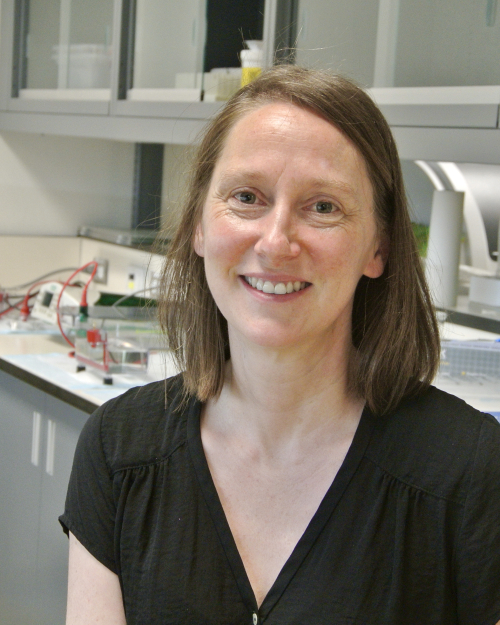 faiza.benaliouad [at] mcgill.ca (Faïza Benaliouad)
faiza.benaliouad [at] mcgill.ca (Faïza Benaliouad)
Chef de projets
"At the Neuro, everything seems possible. There is a plethora of scientists, postdoctoral fellows, and students working together to develop new assays and neurological disease models. Within the platform, challenges scare no one and there are many collaborations with internal and external partners."
"Au Neuro, tout semble possible. Il y a pléthore de scientifiques, de stagiaires postdoctoraux et d’étudiants qui travaillent en équipe afin de développer de nouveaux essais ou modèles de maladies neurologiques. Au sein de la plateforme, les défis ne font peur à personne et il y a plusieurs collaborations avec des partenaires internes, mais également externes au Neuro."
Regardez la page PubMed de Faïza
Lisez la biographie de Faïza
J’ai effectué mon Ph. D. en neurosciences à l’Université de Montréal sous la supervision du Dr Pierre-Paul Rompré, au cours duquel j’ai étudié l’interaction entre les récepteurs dopaminergiques et sérotoninergiques sur la modulation de la récompense induite par la stimulation du faisceau médian prosencéphalique. J’ai poursuivi ma recherche sur les circuits neuraux associés à la récompense comme stagiaire postdoctorale au National Institute on Drug Abuse à Baltimore dans le laboratoire du Dr Roy Wise. De retour à Montréal, j’ai intégré le laboratoire du Dr. Terry Hébert à l’Université McGill pour développer des essais in vivo avec des biosenseurs FRET dans des cultures primaires de neurones et chez le rongeur, et ce, afin d’étudier le biais de signalisation de récepteurs couplés aux protéines G et en particulier, des récepteur dopaminergiques. En 2017, j’ai joint la PDMPP et j’ai travaillé au sein du groupe d’automatisation et de criblage à haut débit pour développer des essais sur des cellules neuronales issues des cellules souches pluripotentes induites (iPSC). Maintenant, je dirige l’équipe qui se penche sur l’aspect plus systémique de la maladie de Parkinson en développant des essais sur la communication intestin-cerveau à l’aide d’organoïdes intestinaux et cérébraux dérivés des iPSC.
 martin.berryer [at] mcgill.ca (Martin Berryer)
martin.berryer [at] mcgill.ca (Martin Berryer)
Manager de Projets - Modèles Cellulaires Avancés et Essais Phénotypiques
"The communication of scientific knowledge through diverse trainings, sharing discoveries via Open Science, the collaboration with researchers and physicians, with other academic institutions and industries through translational research, the use of cutting-edge technologies such as iPSCs derived cells or automation and high-content screening… Those are few points which inspired me to work at the EDDU who combine it all to accelerate the development of new therapies to improve the life of patients affected by neurodegenerative disorders."
"La propagation de nos connaissances scientifiques par l’enseignement, la communication des avancées scientifiques par l’Open Science, la collaboration entre chercheurs, médecins, avec d’autres instituts académiques et des industries notamment par la recherche translationelle, l’utilisation de technologies de pointe comme les iPSCs, l’automatisation, le dépistage de molécules candidates…sont quelques arguments m’inspirant à travailler à l’EDDU dont la mission est la découverte et le développement de nouvelles thérapies vers l’amélioration de la vie des patients affectés de maladie neurodégénérative."
Regardez la page LinkedIn de Martin
Lisez la biographie de Martin
Lors de ma maîtrise réalisée à l'Université de Rouen en France, j’ai étudié le comportement des souris Weaver et l'architecture de leur cervelet. A l’Université de Montréal au Canada sous les supervisions des Drs J.Michaud & G.Di Cristo, mon doctorat s’attela à investiger l'impact des mutations dans le gène Syngap1 sur le développement des synapses GABAergiques chez la souris et leurs effets comportementaux. Ceci m’amena à m'intéresser aux mécanismes cellulaires et moléculaires impliqués dans le développement des circuits neuronaux. Ainsi lors de mon post-doctorat au Broad Institute à Cambridge (USA) effectué sous la supervision des Drs L.Barrett & L.Rubin, j’ai établi une plateforme pour la découverte de drogues affectant la synapse dans les neurones humains induits. Dorénavant, je suis un associé de recherche à l l’Unité de Découverte de Médicaments en Phase Précoce à l'Université McGill où j'utilise des cellules pluripotentes dans le but de comprendre les mécanismes associés aux maladies neurodégénératives et potentiellement découvrir de nouvelles ou améliorer les thérapies existantes.
Publications sélectionnées
-
Martin H. Berryer, Matthew Tegtmeyer, Loic Binan, Vera Valakh, Anna Nathanson, Darina Trendafilova, Ethan Crouse, Jenny Klein, Daniel Meyer, Olli Pietilainen, Francesca Rapino, Samouil L. Farhi, Lee L. Rubin, Steven A. McCarroll, Ralda Nehme and Lindy Barrett. Robust induction of functional astrocytes using NGN2 expression in human pluripotent stem cells. (2023). iScience. https://doi.org/10.1016/j.isci.2023.106995
-
Martin H. Berryer, Gizem Rizki, Sara G. Susco, Daisy Lam, Angelica Messana, Darina Trendafilova, Anna Nathanson, Kyle W. Karhohs, Beth A. Cimini, Kathleen Pfaff, Anne E. Carpenter, Lee L. Rubin, and Lindy E. Barrett. A fully automated high-content synaptic screen in human neurons and astrocytes reveals a role for BET proteins in synapse assembly. (2023). eLife. PMID: 37083703.
-
Khlaifia A, Jadhav V, Danik M, Badra T, Berryer MH, Dionne-Laporte A, Chattopadhyaya B, Di Cristo G, Lacaille JC, Michaud JL. Syngap1 disruption induced by recombination between inverted loxP sites is associated with hippocampal interneuron dysfunction. (2023). eNeuro. PMID: 37072176.
-
Sara G. Susco, Sulagna Ghosh, Patrizia Mazzucato, Gabriella Angelini, Amanda Beccard, Victor Barrera, Martin H Berryer, Angelica Messana, Daisy Lam, Dane Z. Hazelbaker, Lindy E. Barrett. Molecular convergence between Down syndrome and Fragile X syndrome identified using human pluripotent stem cell models. (2022) Cell Reports. PMID: 36070702.
-
Clara A.Amegandjin, Mayukh Choudhury, Vidya Jadhav, Josianne Nunes Carrico, Arianne Quintal, Martin H Berryer , Marina Snapyan, Bidisha Chattopadhyaya, Armen Saghatelyan, Graziella Di Cristo. Inhibition of mTOR during a postnatal critical sensitive window rescues deficit in GABAergic Pv cell connectivity and social behavior caused by loss of Tsc1. (2021). Nature Communications. PMID: 34135323.
-
Martin H Berryer, Sara G Kosmaczewski, Lindy E Barrett. (2019). Fly Model sheds light on brain disease. Elife. PMID: 31808420. (Insight article).
-
Mathieu Nadeau-Vallée, Peck-Yin Chin, Lydia Belarbi, Marie-Ève Brien, Sheetal Pundir, Martin H Berryer, Alexandra Beaudry-Richard, Ankush Madaan, David J Sharkey, Alexis Lupien-Meilleur, Xin Hou, Christiane Quiniou, Alexandre Beaulac, Ines Boufaied, Amarilys Boudreault, Adriana Carbonaro, Ngoc-Duc Doan, Jean-Sebastien Joyal, William D Lubell, David M Olson, Sarah A Robertson, Sylvie Girard, Sylvain Chemtob. (2017). Antenatal suppression of IL-1 protects against inflammation-induced fetal injury and improves neonatal and developmental outcomes in mice. Journal of Immunology. PMID: 28148737.
-
Martin H. Berryer, Bidisha Chattopadhyaya, Paul Xing, Ilse Riebe, Ciprian Bosoi, Nathalie Sanon, Judith Antoine-Bertrand, Maxime Lévesque, Massimo Avoli, Fadi F. Hamdan, Lionel Carmant, Nathalie Lamarche-Vane, Jean-Claude Lacaille, Jacques L. Michaud, Graziella Di Cristo. (2016). Decrease of Syngap1 in GABAergic cells impairs inhibitory synapse development, synaptic inhibition and cognitive function. Nature Communications. PMID: 27827368.
-
Martin H. Berryer, Fadi F. Hamdan, Laura L. Klitten, Rikke S. Møller, Lionel Carmant, Jeremy Schwartzentruber, Lysanne Patry, Sylvia Dobrzeniecka, Daniel Rochefort, Mathilde Neugnot‐Cerioli, Jean‐Claude Lacaille, Zhiyv Niu, Christine M. Eng, Yaping Yang, Sylvain Palardy, Céline Belhumeur, Guy A. Rouleau, Niels Tommerup, LaDonna Immken, Miriam H. Beauchamp, Gayle Simpson Patel, Jacek Majewski, Mark A. Tarnopolsky, Klaus Scheffzek, Helle Hjalgrim, Jacques L. Michaud, Graziella Di Cristo. (2012). Mutations in SYNGAP1 cause intellectual disability, autism, and a specific form of epilepsy by inducing haploinsufficiency. Human Mutation. PMID: 23161826.
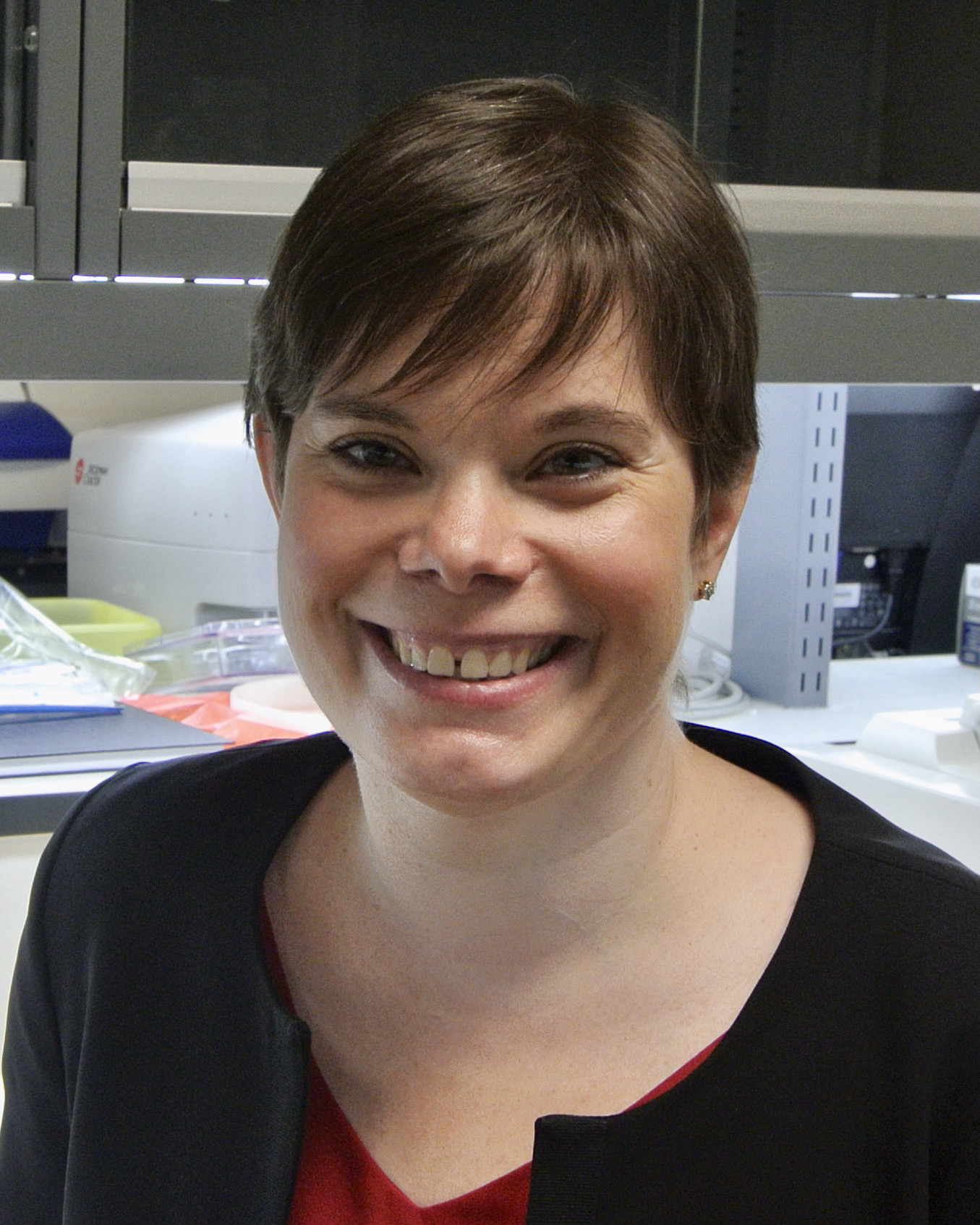 mathilde.chaineau [at] mcgill.ca (Mathilde Chaineau)
mathilde.chaineau [at] mcgill.ca (Mathilde Chaineau)
Gestionnaire des partenariats
"Working at the Neuro means the chance to work in a dynamic, collaborative, and innovative environment that benefits not only patients’ treatments and care, but also the quality of the scientific research conducted here."
"Travailler au Neuro, c’est avoir la chance de travailler dans un environnement dynamique, collaboratif et innovant, favorisant non seulement la qualité des soins et traitements offerts aux patients, mais également celle de la recherche scientifique qui y est menée."
Regarder notre vidéo soulignant le travail de Mathilde
Lisez la biographie de Mathilde
J’ai étudié la biologie cellulaire et obtenu mon doctorat de l’université Pierre et Marie Curie à Paris, durant lequel je me suis spécialisée dans l’étude du transport vésiculaire et me suis intéressée plus spécifiquement aux mécanismes d’exocytose faisant intervenir les protéines SNARE. Après l’obtention de mon diplôme, j’ai déménagé à Montréal en 2009 pour rejoindre le Neuro afin de me consacrer à la recherche en neurosciences. Ma décision de traverser l’océan Atlantique n’a surpris personne car je suis tombée amoureuse du Canada très tôt. En effet, à l’âge de sept ou huit ans, j’ai tenté de convaincre mes parents de déménager toute la famille au Québec! Durant mes études postdoctorales, dans le laboratoire du Dr McPherson, j’ai étudié le rôle de petites protéines Rab dans des cellules issues de glioblastome, et j’ai commencé à m’intéresser à l’étude de C9Orf72, une protéine dont la mutation est associée à la sclérose latérale amyotrophique (SLA). J’ai joint la PDMPP et le SGC (Structural Genomic Consortium) en tant qu’associée de recherche en 2017. Je dirige aujourd’hui l’équipe SLA de la PDMPP et je suis également impliquée dans le développement de partenariats avec l’industrie. Notre recherche consiste à développer des essais à l’aide de cellules dérivées d’IPSC provenant de patients avec la SLA, dans le but d’identifier des molécules d’intérêt pouvant mener au développement de nouvelles thérapies. Nos efforts portent également sur la modélisation de la maladie en 3D à l’aide de cellules neuronales et gliales dérivées d’iPSC, afin de mieux comprendre comment certaines voies de signalisation cellulaires sont affectées dans la SLA.
Publications sélectionnées
- Deneault, E., Chaineau, M., Castellanos-Montiel, M. J., Flores, A. K. F., Haghi, G., Chen, C. X. Q., ... & Durcan, T. M. (2021). A streamlined CRISPR workflow to introduce mutations and generate isogenic iPSCs for modeling amyotrophic lateral sclerosis. bioRxiv.
- Castellanos-Montiel MJ, Chaineau M, Durcan TM. (2020) The Neglected Genes of ALS: Cytoskeletal Dynamics Impact Synaptic Degeneration in ALS. Front Cell Neurosci.
- Soubannier V, Maussion G, Chaineau M, Sigutova V, Rouleau G, Durcan TM, Stifani (2020) Characterization of human iPSC-derived astrocytes with potential for disease modeling and drug discovery. Neurosci Lett.
- Semmler S, Gagné M, Garg P, Pickles SR, Baudouin C, Hamon-Keromen E, Destroismaisons L, Khalfallah Y, Chaineau M, Caron E, Bayne AN, Trempe JF, Cashman NR, Star AT, Haqqani AS, Durcan TM, Meiering EM, Robertson J, Grandvaux N, Plotkin SS, McBride HM, Vande Velde C. (2020) TNF receptor-associated factor 6 interacts with ALS-linked misfolded superoxide dismutase 1 and promotes aggregation. J Biol Chem
- Han C*, Chaineau M*, Chen CX, Beitel LK, Durcan TM. (2018) Open Science Meets Stem Cells: A New Drug Discovery Approach for Neurodegenerative Disorders. Front Neurosci.
* Equal contribution from authors
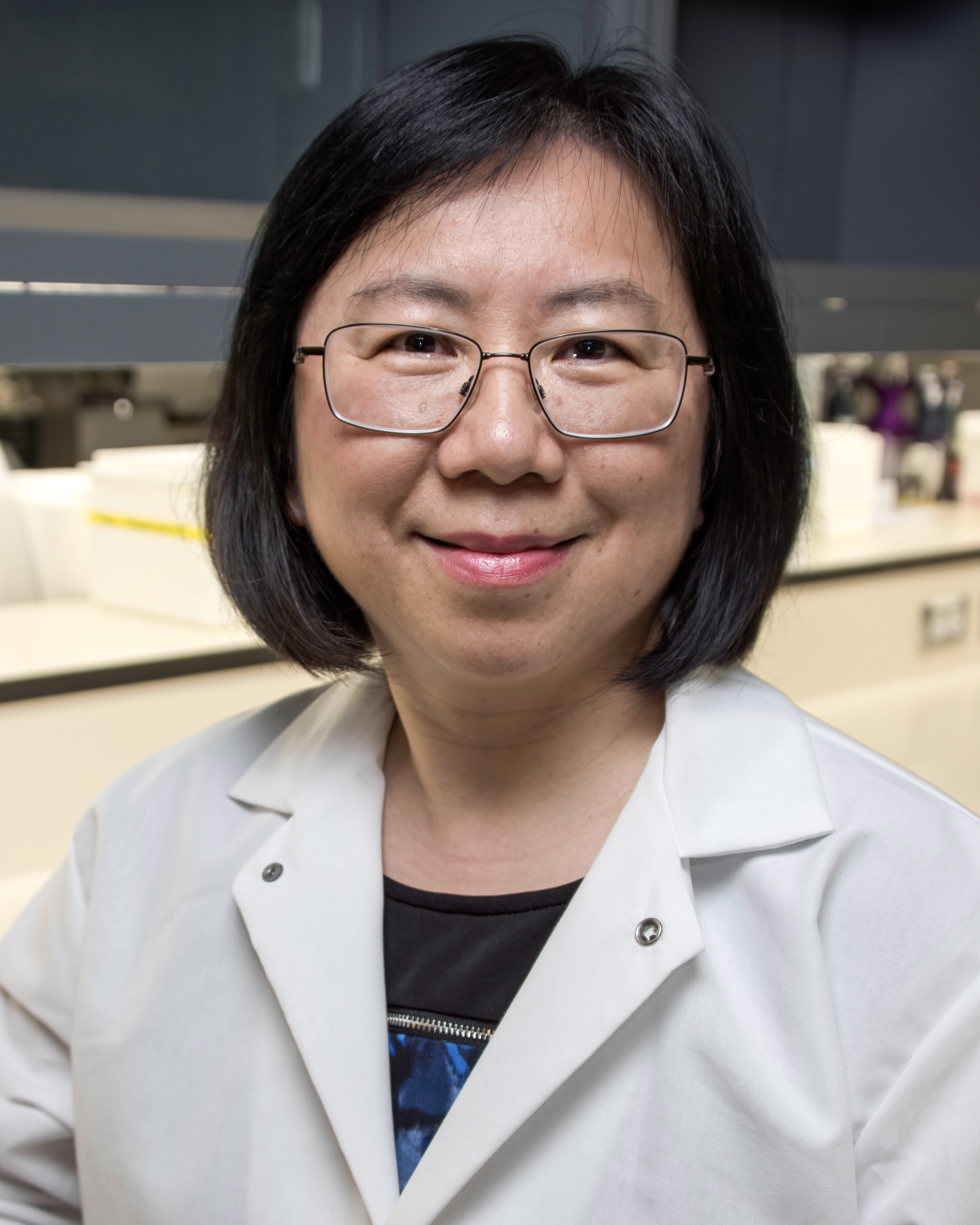 xiuqing.chen [at] mcgill.ca (Xiuqing (Carol) Chen)
xiuqing.chen [at] mcgill.ca (Xiuqing (Carol) Chen)
Gestionnaire de colonies iPSC
"iPSC-derived neurons and brain organoids have given us new opportunities to model and investigate neurodegenerative diseases, as well as to develop new tools for drug discovery."
"蒙特利尔神经科学研究所是世界顶尖的神经科学中心, 我为能成为Neuro的一员感到非常自豪。"
Lisez la biographie de Carol
Je suis assistante de recherche à la Plateforme de découverte de médicaments en phase précoce (PDMPP). J'ai obtenu mon doctorat en neurobiologie en 1999. Au cours de ma formation postdoctorale à l'Université de Pittsburgh et à l'Université McGill, je me suis concentrée sur l'identification des mécanismes moléculaires sous-jacents à la transmission synaptique et leur implication dans la maladie de Parkinson (MP). En 2006, j'ai rejoint le laboratoire du Dr Edward Fon au Neuro. J’y ai identifié diverses fonctions de l'ubiquitine au niveau du système nerveux et j’ai également étudié comment les défauts de la parkine, une ubiquitine ligase E3, pouvent entraîner la MP. En 2015, j'ai rejoint la PDMPP en tant que responsable des iPSC, où j'étais en charge de la mise en place du laboratoire, du développement de protocoles et de la gestion des lignées cellulaires. Par la suite, j'ai participé davantage au développement de projets des clients, fournissant des services de haute qualité aux utilisateurs académiques des neurones dérivés d'iPSC. En 2017, je suis devenue coordinatrice de formation, dispensant des formations sur les iPSC et l’induction neuronale et faisant le soutien technique de la plateforme. En 2019, je suis devenue coordinatrice du groupe de phénotypage des iPSC et de l’édition par CRISPR, responsable de la reprogrammation des iPSC, de la banque d’iPSC et du contrôle qualité.
Publications sélectionnées
- X-Q Chen, C., Deneault, E., Abdian, N., You, Z., Sirois, J., Nicouleau, M., Shlaifer, I., Villegas, L., Boivin, M. N., Gaborieau, L., Karamchandani, J., Beitel, L. K., Fon, E. A., & Durcan, T. M. (2022). Generation of patient-derived pluripotent stem cell-lines and CRISPR modified isogenic controls with mutations in the Parkinson's associated GBA gene. Stem cell research, 64, 102919. https://doi.org/10.1016/j.scr.2022.102919
- Chen, C. X., You, Z., Abdian, N., Sirois, J., Shlaifer, I., Tabatabaei, M., Boivin, M. N., Gaborieau, L., Karamchandani, J., Beitel, L. K., Fon, E. A., & Durcan, T. M. (2022). Generation of homozygous PRKN, PINK1 and double PINK1/PRKN knockout cell lines from healthy induced pluripotent stem cells using CRISPR/Cas9 editing. Stem cell research, 62, 102806. https://doi.org/10.1016/j.scr.2022.102806
- Chen CX, Abdian N, Maussion G, Thomas RA, Demirova I, Cai E, Tabatabaei M, Beitel LK, Karamchandani J, Fon EA, Durcan TM. A Multistep Workflow to Evaluate Newly Generated iPSCs and Their Ability to Generate Different Cell Types. (2021) Methods Protocols.
- Thomas, R. A., Gibon, J., Chen, C., Chierzi, S., Soubannier, V. G., Baulac, S., Séguéla, P., Murai, K., & Barker, P. A. (2018). The Nogo Receptor Ligand LGI1 Regulates Synapse Number and Synaptic Activity in Hippocampal and Cortical Neurons. eNeuro, doi: https://doi.org/10.1523/ENEURO.0185-18.2018
- McLelland, G. L., Goiran, T., Yi, W., Dorval, G., Chen, C. X., Lauinger, N. D., Krahn, A. I., Valimehr, S., Rakovic, A., Rouiller, I., Durcan, T. M., Trempe, J. F., & Fon, E. A. (2018). Mfn2 ubiquitination by PINK1/parkin gates the p97-dependent release of ER from mitochondria to drive mitophagy. eLife, doi: https://doi.org/10.7554/eLife.32866
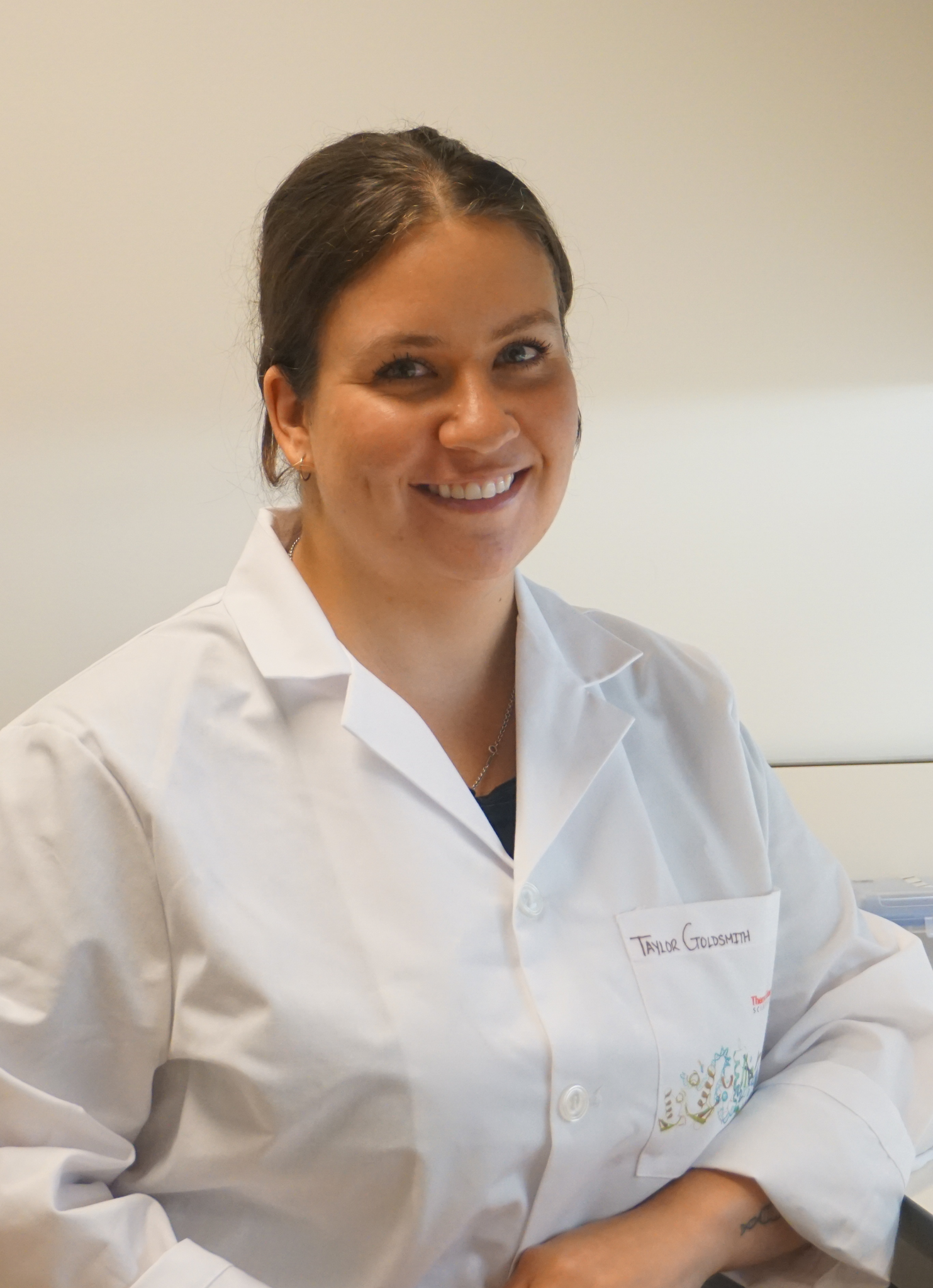 goldsmith.taylor [at] gmail.com (Taylor Goldsmith)
goldsmith.taylor [at] gmail.com (Taylor Goldsmith)
Gestionnaire des demandes iPSC et des activités de rapprochement avec la communauté
"Equal to the important and groundbreaking work that The Neuro achieves in regards to Parkinson’s, ALS, and other neurological diseases is it’s drive for Open Science. I am thrilled to work at a place that shares knowledge, collaborates, and takes the time to teach and inform others. Science should be made accessible to everyone and The Neuro really champions this principle."
Regardez la page LinkedIn de Taylor
Lisez la biographie de Taylor
J'ai obtenu mon baccalauréat ès Sciences de l'Université de Calgary en biologie cellulaire et moléculaire. Après un stage passionnant en Espagne en travaillant avec la bio-impression 3D, j'ai su que je voulais rester dans le domaine de la science. J'ai ensuite fait ma maîtrise en Sciences à l'Université de Calgary en étudiant les cellules de l'appareil reproducteur masculin et en apprenant les principes de l'édition génétique à l'aide de CRISPR-Cas9. Le potentiel de CRISPR en thérapeutique et en médecine personnalisée est immense et je voulais appliquer mes compétences dans ce domaine. J'ai déménagé au Minnesota pour travailler dans une start-up biotechnologique axée sur l'édition de gènes. Là-bas, j'ai développée des iPSCs humaines et porcines génétiquement modifiées pour générer des organes humains transplantables, dans le but d'aider à remédier à la pénurie d’organes disponibles pour les greffes. Je suis impatiente d'appliquer mes connaissances et mes compétences en édition de gènes et en cellules souches au Neuro!
Publications sélectionnées
- Ruiz-Estevez M, Crane AT, Rodriguez-Villamil P, Ongaratto FL, You Y, Steevens AR, Hill C, Goldsmith T, Webster DA, Sherry L, Lim S, Denman N, Low WC, Carlson DF, Dutton JR, Steer CJ, Gafni O. Liver development is restored by blastocyst complementation of HHEX knockout in mice and pigs. Stem Cell Res Ther. 2021 May 19;12(1):292
- Goldsmith T, Bondareva A, Webster D, Voigt LA, Su L, Carlson DF, Dobrinski I. Targeted gene editing in porcine germ cells. In: Verna PJ, Liu J & Sumer H (eds). Springer Nature, Methods in Molecular Biology, Applications of Genome Modulation and Editing. Humana Press, NY. 2022.
- Shin W, Alpaugh W, Hallihan LJ, Sinha S, Crowther E, Martin GR, Scheidl-Yee T, Yang X, Yoon G, Goldsmith T, Berger ND, de Almeida LG, Dufour A, Dobrinski I, Weinfeld M, Jirik FR, Biernaskie J. PNKP is required for maintaining the integrity of progenitor cell populations in adult mice. Life Sci Alliance. 2021 Jul 5;4(9):e202000790
- Goldsmith TM, Sakib S, Webster D, Carlson DF, Van der Hoorn F, Dobrinski I. A reduction of primary cilia but not hedgehog signaling disrupts morphogenesis in testicular organoids. Cell Tissue Res. 2020 Apr;380(1):191-200
- Webster D, Bondareva A, Solin S, Goldsmith T, Su L, Lara NLEM, Carlson DF, Dobrinski I. Targeted Gene Editing in Porcine Spermatogonia. Front Genet. 2021 Jan 28;11:627673
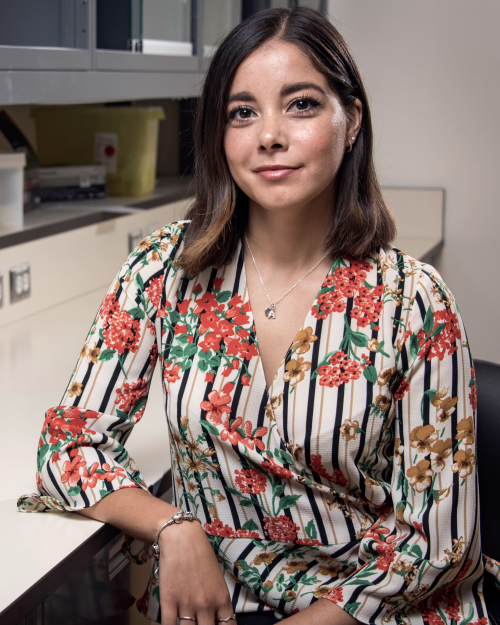 anna.francoflores [at] mcgill.ca (Anna Kristyna Franco Flores)
anna.francoflores [at] mcgill.ca (Anna Kristyna Franco Flores)
Gestionnaire du programme de sensibilisation
"Working at The Neuro is an opportunity to learn and work with the best neuroscientists in the world in a multicultural environment."
"Una de mis mayores motivaciones para trabajar en The Neuro fue el hecho de poder trabajar a lado de los mejores neurocientíficos en el mundo y así poder entender y desarrollar tratamientos efectivos para disminuir los padecimientos de personas con enfermedades neurodegenerativas. La segunda razón es que The Neuro es una institución multicultural que te brinda una experiencia enriquecedora en todos los aspectos."
Regardez la page LinkedIn d'Anna
Lisez la biographie d'Anna
Anna Franco est assistante de recherche à la PDMPP du Neuro. Elle a obtenu son BSc. en Bioingénérie en Basse-Californie, au Mexique. Au cours de ses études de premier cycle, elle a obtenu une bourse de stage de recherche (MITACS) au Centre de recherche du Centre hospitalier de l'Université de Montréal (CRCHUM) dans le groupe neuro-métabolique. Cette expérience a renforcé ses compétences en recherche et sa passion pour la compréhension du fonctionnement interne du cerveau.Poursuivant son rêve, Anna a déménagé à Montréal pour obtenir sa maîtrise en neurosciences de l'Université de Montréal en 2018, tout en travaillant comme stagiaire au CRCHUM. Son travail exceptionnel en neurosciences cellulaires et moléculaires l'a amenée au Neuro en 2019, se joignant à l'équipe de criblage à haut contenu et d'automatisation. Elle travaille actuellement sur des projets spécifiques à la SLA ainsi que sur la génération, la caractérisation et la maintenance des iPSC dérivées de patients avec SLA ou d'individus en bonne santé.
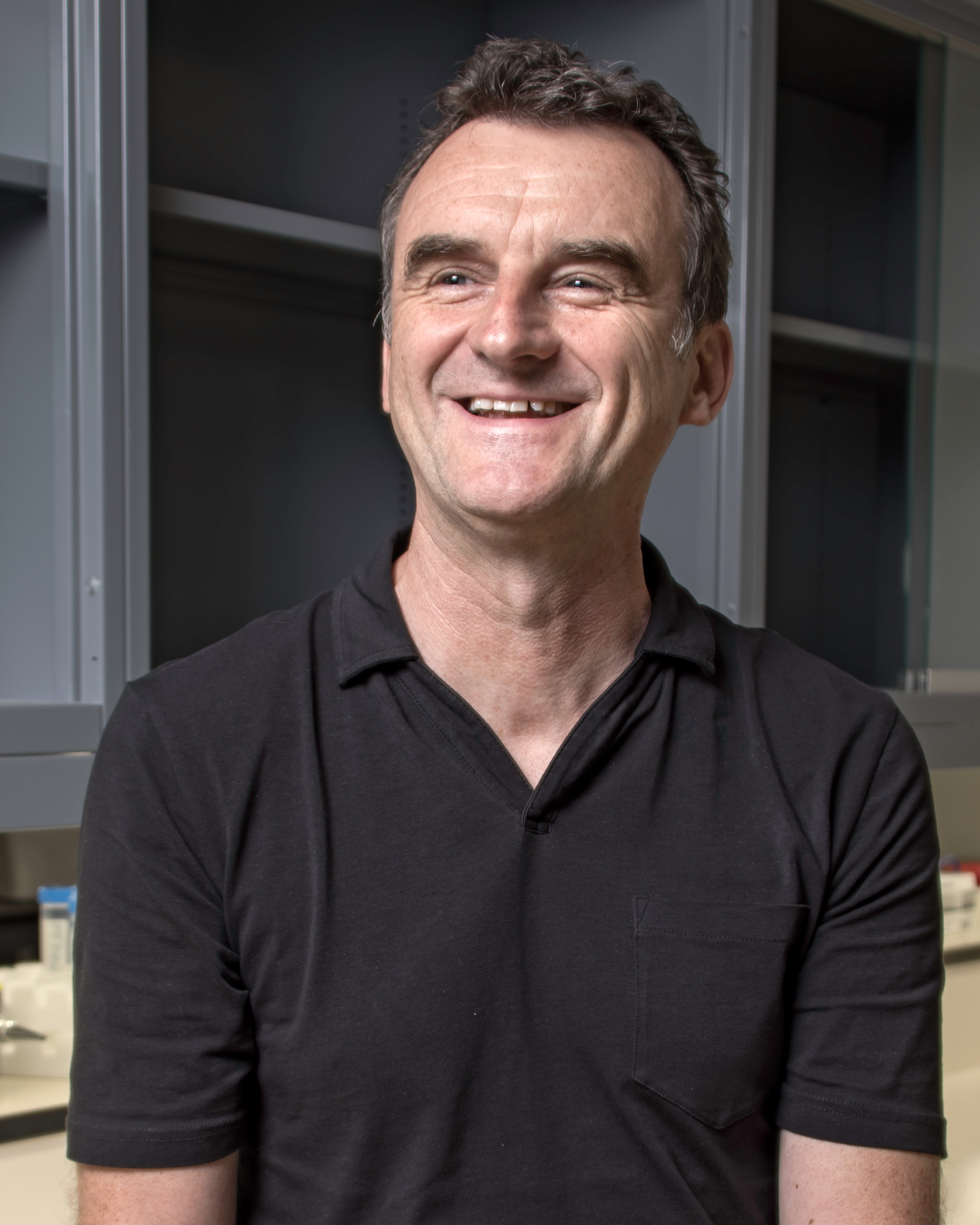 wolfgang.reintsch [at] mcgill.ca (Wolfgang Reintsch)
wolfgang.reintsch [at] mcgill.ca (Wolfgang Reintsch)
Gestionnaire d'automatisation
"I am inspired to work at the Neuro because it is an opportunity to work together with a large and diverse team of bright people to discover new means to battle neurodegenerative diseases."
"Die Gelegenheit zusammen mit einem multidisziplinaeren Team von Wissenschaftlern neue Wege zu finden um neurodegenerative Krankheiten zu bekaempfen."
Regarder notre vidéo soulignant le travail de Wolfgang
Lisez la biographie de Wolfgang
Je fais partie de la PDMPP depuis 2017, où je gère la plateforme d’automatisation et de criblage à haut débit et j’y supervise également le groupe des essais exploratoires. Avant de rejoindre la plateforme, j'ai travaillé pendant 10 ans dans plusieurs laboratoires industriels à Montréal ayant un accent sur l'automatisation, la microscopie à haut contenu et l'analyse d'images. J'ai géré une plateforme de microscopie optique et de biologie moléculaire au département de pharmacologie de l'Université McGill. Je suis né en Allemagne et j'ai obtenu mon doctorat à l'Institut Max Planck de biologie du développement à Tübingen, en Allemagne. Mon travail là-bas, et plus tard au cours de mon post-doctorat à l'Université McGill, portait sur les mécanismes cellulaires qui façonnent l'embryon en développement. C’est à cette époque que j'ai déjà commencé à développer des outils de microscopie et des approches automatisées pour mes recherches, et j'ai maintenu un fort intérêt pour ce domaine depuis cette expérience.
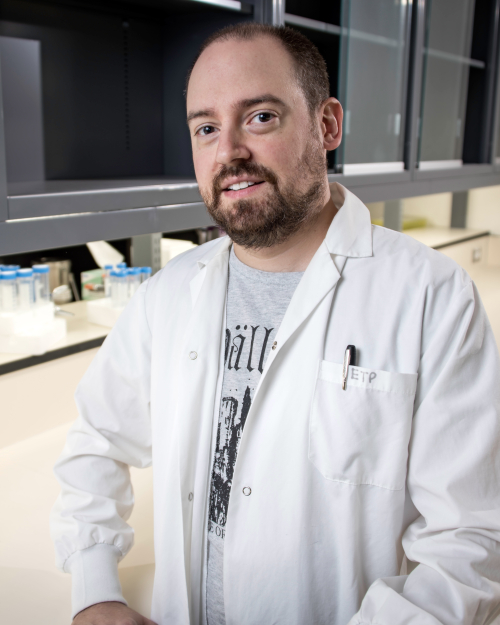 julien.sirois [at] mcgill.ca (Julien Sirois)
julien.sirois [at] mcgill.ca (Julien Sirois)
Responsable des installations de cytométrie en flux
"Initially, I was inspired to work at The Neuro to help the advancement of knowledge of neurological diseases. A couple of years ago, my aunt was diagnosed with MS here at The Neuro. This gave me a boost to find a cure for this disease."
"Initialement, j'ai été inspiré pour travailler au Neuro pour aider à l'avancement des connaissances sur les maladies neurologiques. Il y a quelques années, ma tante a reçu un diagnostic de SP ici au Neuro. Cela m'a donné un surplus de motivation pour trouver un traitement pour cette maladie."
Regardez la page ResearchGate de Julien
Lisez la biographie de Julien
Dès mon plus jeune âge, j'ai toujours su que je voulais être scientifique, principalement en raison de personnages de fiction tels qu'Egon Spengler, Donatello, Gandalf, Obi-Wan et le Dr. Beakmann. En 2006, j'ai eu une opportunité lorsque je suis devenu étudiant en immunologie et microbiologie. Ensuite, j'ai poursuivi mes études graduées dans le domaine de l'immunologie au laboratoire de la Dre Nathalie Labrecque à l'Université de Montréal. J'ai appris de nombreuses techniques pendant cette période, mais je me suis surtout concentré sur la cytométrie en flux. C’est ici que ma passion est née. Pendant que je rédigeais ma thèse, j'ai travaillé pour une organisation de recherche contractuelle, mais je manquais le côté académique de la science. Après des mois de recherche, une opportunité s'est présentée au Programme de thérapeutique expérimentale du Neuro, dirigé par le Dr Amit Bar-Or. J'ai apporté beaucoup de mon expertise de cytométrie en flux à ma nouvelle équipe. À cette époque, j'ignorais que ma curiosité croissante pour le domaine de la neuroscience m'aiderait à créer de nouvelles façons d'aborder la cytométrie en flux en général. Au début de l'année 2019, j'ai été promu responsable des installations de cytométrie en flux pour la neurologie, ce qui contribuera à rendre la cytométrie en flux plus accessible. Normalement, la cytométrie en flux n'est pas couramment utilisée dans un institut neurologique. Mon objectif ultime est d'enseigner les fondamentaux de la cytométrie en flux à d'autres chercheurs et de les inciter à utiliser cet équipement sous-utilisé. En utilisant la cytométrie en flux dans nos recherches, nous ouvrons les vannes pour obtenir une quantité considérable de nouvelles informations. Finalement, cela aidera les patients car nous pouvons analyser spécifiquement leurs cellules. Au Neuro, nous avons la chance d'avoir accès à des échantillons de patients afin de les intégrer à nos recherches.
Publications sélectionnées
- Mohamed, N. V., Lépine, P., Lacalle-Aurioles, M., Sirois, J., Mathur, M., Reintsch, W., Beitel, L. K., Fon, E. A., & Durcan, T. M. (2021). Microfabricated disk technology: rapid scale up in midbrain organoid generation. Methods (San Diego, Calif.) Preprint available : https://doi.org/10.1016/j.ymeth.2021.07.008
- Mohamed NV, Sirois J, Ramamurthy J, Mathur M, Lepine P, Deneault E, Maussion G, Nicouleau M, Chen CX, Abdian N, Soubannier V, Cai, E, Nami, H., Thomas, RA, Beitel, LK, Dolt, K.S., Karamchandani, J, Kunath, K., Fon, EA, Durcan, TM. (2021) Midbrain organoids with an SNCA gene triplication model key features of synucleinopathy. BrainComm. Preprint available: https://www.biorxiv.org/content/10.1101/2021.04.12.439480v1
- Rostami, J., Fotaki, G., Sirois, J., Mzezewa, R., Bergström, J., Essand, M., Healy, L., & Erlandsson, A. (2020). Astrocytes have the capacity to act as antigen-presenting cells in the Parkinson's disease brain. Journal of neuroinflammation, doi: https://doi.org/10.1186/s12974-020-01776-7
- Sirois J, Daudelin J-F, Boulet S, Marquis M, Meloche S, Labrecque N. 2015. The atypical MAPK ERK3 controls positive selection of thymocytes. Immunology doi: https://doi.org/10.1111/imm.12433.
- Marquis M, Daudelin JF, Boulet S, Sirois J, Crain K, Mathien S, Turgeon B, Rousseau J, Meloche S, Labrecque N. 2014. The catalytic activity of the mitogen-activated protein kinase extracellular signal-regulated kinase 3 is required to sustain CD4+CD8+ thymocyte survival. Mol Cell Bioldoi: https://doi.org/10.1128/MCB.01701-13.
PERSONNEL
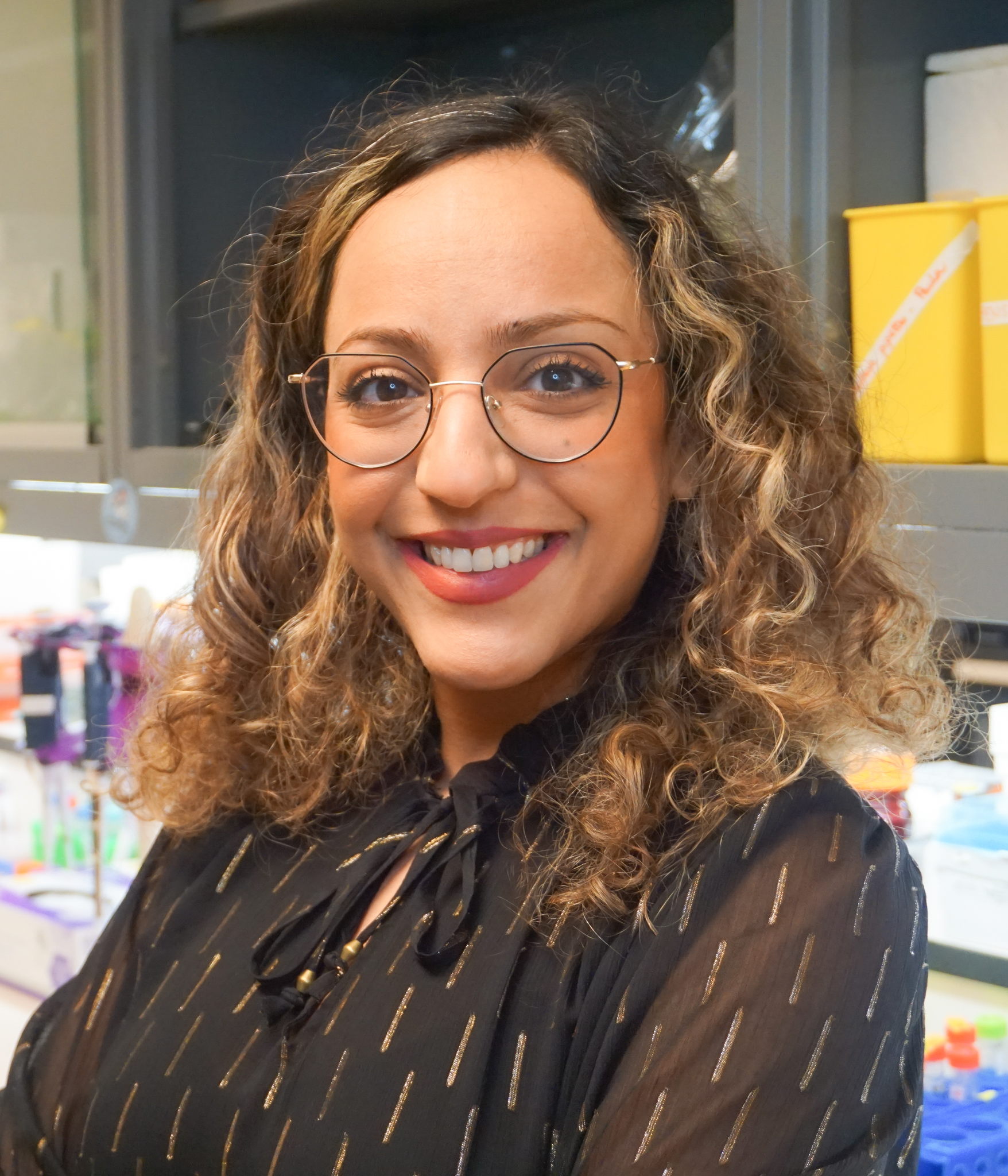 narges.abdian [at] mcgill.ca (Narges Abdian)
narges.abdian [at] mcgill.ca (Narges Abdian)
Assistante de recherche
"Parkinson's disease is the reason that I lost my father. I will make all my efforts so that nobody will lose their father to this disease."
"پارکینسون پدرم را از من گرفت من تلاش می کنم تا روزی که هیچ دختری پدرش رو به خاطر هیچ بیماری از دست نده"
Regardez la page LinkedIn de Narges
Lisez la biographie de Narges
Je suis assistante de recherche à la PDMPP depuis 2018. J'ai obtenu mon doctorat en médecine moléculaire en 2015. Actuellement, je travaille dans le groupe de génération d'iPSC et je suis responsable de la génération et de la différenciation des iPSC en différents types neuronaux. J'interviens également dans la caractérisation, le contrôle de qualité, et la gestion des fiches techniques sur les lignées d’iPSC. De plus, je coordonne les formations sur les iPSC et l’induction neurale. C'est la plus grande joie et motivation pour moi de me réveiller chaque jour avec l'espoir de connaître quelque chose de nouveau en science et de trouver un moyen d'aider les personnes souffrant de maladies neurodégénératives. Je suis vraiment heureuse d'avoir l'opportunité de faire de la recherche en neurosciences; l'un des systèmes parmi les plus complexes et uniques que j'aie jamais vu.
Publications sélectionnées
- Carol X-Q. Chen, Narges Abdian, Gilles Maussion, Rhalena A. Thomas, Iveta Demirova, Eddie Cai, Edward A. Fon, Thomas M. Durcan. Standardized QC workflow foranalyzing the quality and differentiation potential of human iPSCs. ISSCR Annual Meeting 26-29 June 2019, Los Angeles, USA.
- Abdian, N., Ghasemi-Dehkordi, P., Hashemzadeh-Chaleshtori, M., Ganji-Arjenaki, M., Doosti, A., & Amiri, B. (2015). Comparison of human dermal fibroblasts (HDFs) growth rate in culture media supplemented with or without basic fibroblast growth factor (bFGF). Cell and tissue banking, 16(4), 487–495. https://doi.org/10.1007/s10561-015-9494-9
- Narges Abdian, Mehdi Allahbakhshian-Farsani, Somayeh Khosravi-Farsani, Payam Ghasemi-Dehkordi, Sedigheh Kazemi-Sheykhshabani , Mahboubeh Ganji-Arjenaki, Morteza Hashemzadeh-Chaleshtori. Generation of HSC-like Cells from Human Embryonic Stem Cells by Inhibition of TGF-βR2 Signaling. Proc. Natl. Acad. Sci., India, 2015, Sect. B Biol. Sci. DOI 10.1007/s40011-015-0504-2.
- Ghasemi-Dehkordi P, Allahbakhshian-Farsani M, Abdian N, et al. Comparison between the cultures of human induced pluripotent stem cells (hiPSCs) on feeder-and serum-free system (Matrigel matrix), MEF and HDF feeder cell lines. J Cell Commun Signal. 2015;9(3):233-246. doi:10.1007/s12079-015-0289-3
- Abdian, N., Gholami, E., Zahedifard, F., Safaee, N., & Rafati, S. (2011). Evaluation of DNA/DNA and prime-boost vaccination using LPG3 against Leishmania major infection in susceptible BALB/c mice and its antigenic properties in human leishmaniasis. Experimental parasitology, 127(3), 627–636. https://doi.org/10.1016/j.exppara.2010.12.007
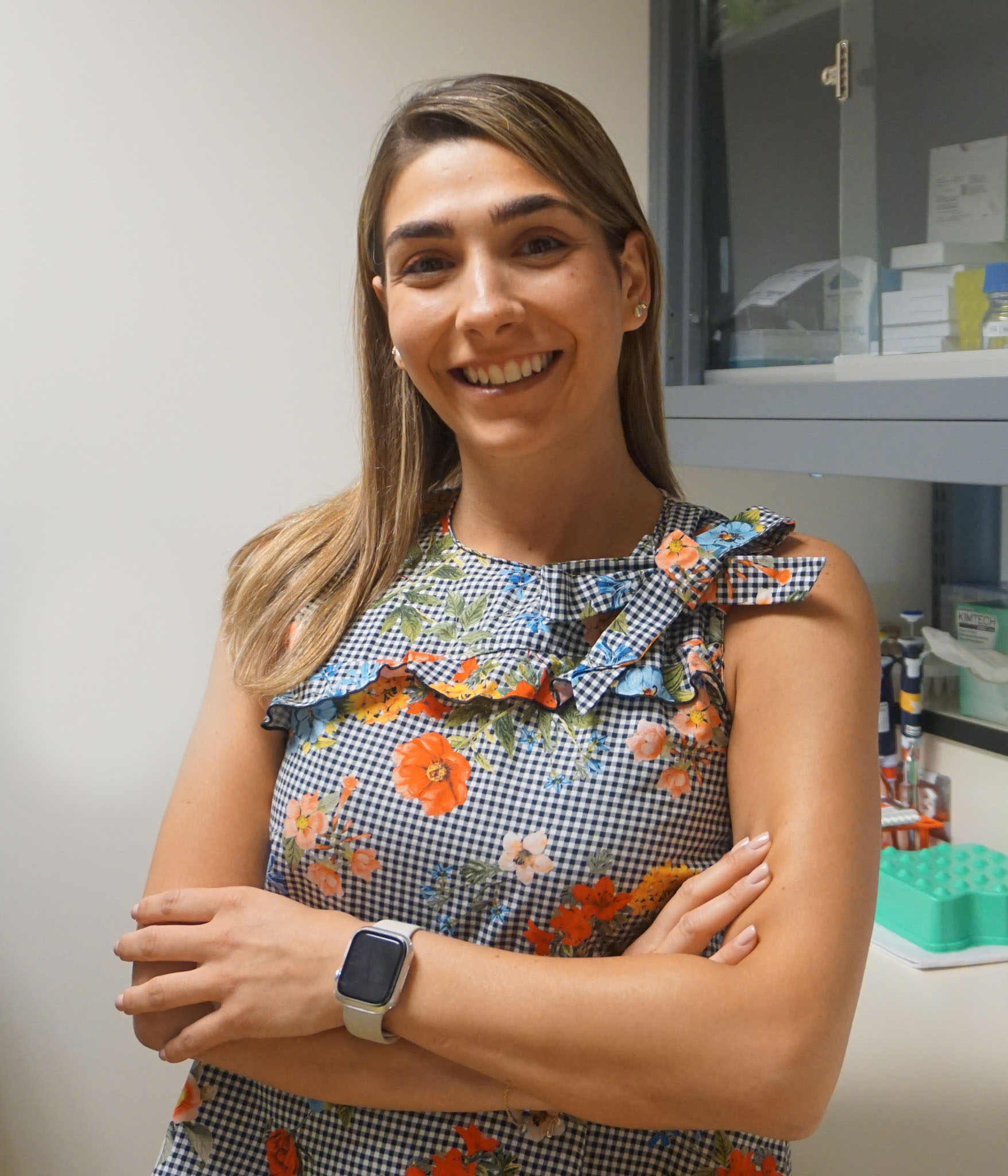 Nathalia.aprahamian [at] mcgill.ca (Nathalia Aprahamian)
Nathalia.aprahamian [at] mcgill.ca (Nathalia Aprahamian)
Assistante de Recherche
"The Neuro grants me the opportunity to impact advancement of science and medicine and to touch the lives of patients. As a strong advocate of innovation and shared knowledge, I believe that critical breakthroughs are achieved when scientists collaborate and share knowledge. As such, the Open Science is a valuable and promising platform where bright minds intersect and work together to improve the quality of human life."
"Neuro կեդրոնը ինձ կու տայ հնարաւորութիւն մասնակից դառնալու գիտութեան եւ բժշկութեան զարգացման: Իբրեւ նորարարութեան եւ գիտութեան հանրայնացման ջատագով, ես կը հաւատամ որ գիտական կարեւոր նուաճումներ կ'արձանագրուին երբ գիտնականներ կը համագործակցին եւ իրենց տեղեկութիւնները կը փոխանակեն: Այս իմաստով, «Open Science»-ը արժէքաւոր եւ յուսալի հարթակ մըն է, ուր գիտական փայլուն մտքեր կը հանդիպին ու կը գործակցին յանուն մարդկային կեանքի բարելաւման:
، أتطلع إلى العمل مع باحثين وعالمين لتحقيق أهداف Neuro بصفتي مساعدة باحث في
في تعزيز فهمنا للاضطرابات العصبية وتحسين صحة المرضى من خلال علاجات جديدة Neuro"
Regardez la page LinkedIn de Nathalia
Lisez la biographie de Nathalia
Je suis née et j’ai grandit au Liban et dès mon plus jeune âge j'ai été intriguée par la science, en particulier la biologie. J'étais fasciné par le fonctionnement du corps humain. Cette curiosité m'a finalement amené à obtenir mon B.Sc. en Biologie de l'Université Haigazian (Beyrouth) en 2015. J'ai ensuite été recrutée par le Centre Médical de l'Université Américaine de Beyrouth (AUB) - Unité de Génétique Clinique. En tant que technologue de laboratoire médical et plus tard en tant que scientifique clinique, j'ai développé diverses compétences en génétique clinique. Mes tâches comprenaient la réalisation de caryotypes, de FISH et d'autres techniques de diagnostic cytogénétique sur des échantillons de patients dans le contexte de l'oncologie et des maladies prénatales. En 2020, j'ai rejoint l'unité de génétique médicale de l'Université Saint Joseph, où j'ai eu l'opportunité d'étendre mon expertise à un large éventail de techniques de génétique moléculaire diagnostique. L’année 2023 a été un tournant, lorsque j'ai déménagé au Canada et commencé un nouveau chapitre de ma vie. Dans ma quête d'un nouveau défi professionnel, j'ai eu l'opportunité de me joindre à l'équipe du Dr Durcan au Neuro. Je reconnais l'importance du travail de pointe effectué dans le domaine des neurosciences au Neuro, j'ai hâte de me développer davantage en tant que scientifique et d'avoir un impact positif sur les efforts ciblant les troubles neurodégénératifs. Je crois que les stratégies et la philosophie de la science ouverte sont les mieux adaptées pour relever les défis de la médecine moderne et fournir un excellent modèle d'approche centrée sur le patient.
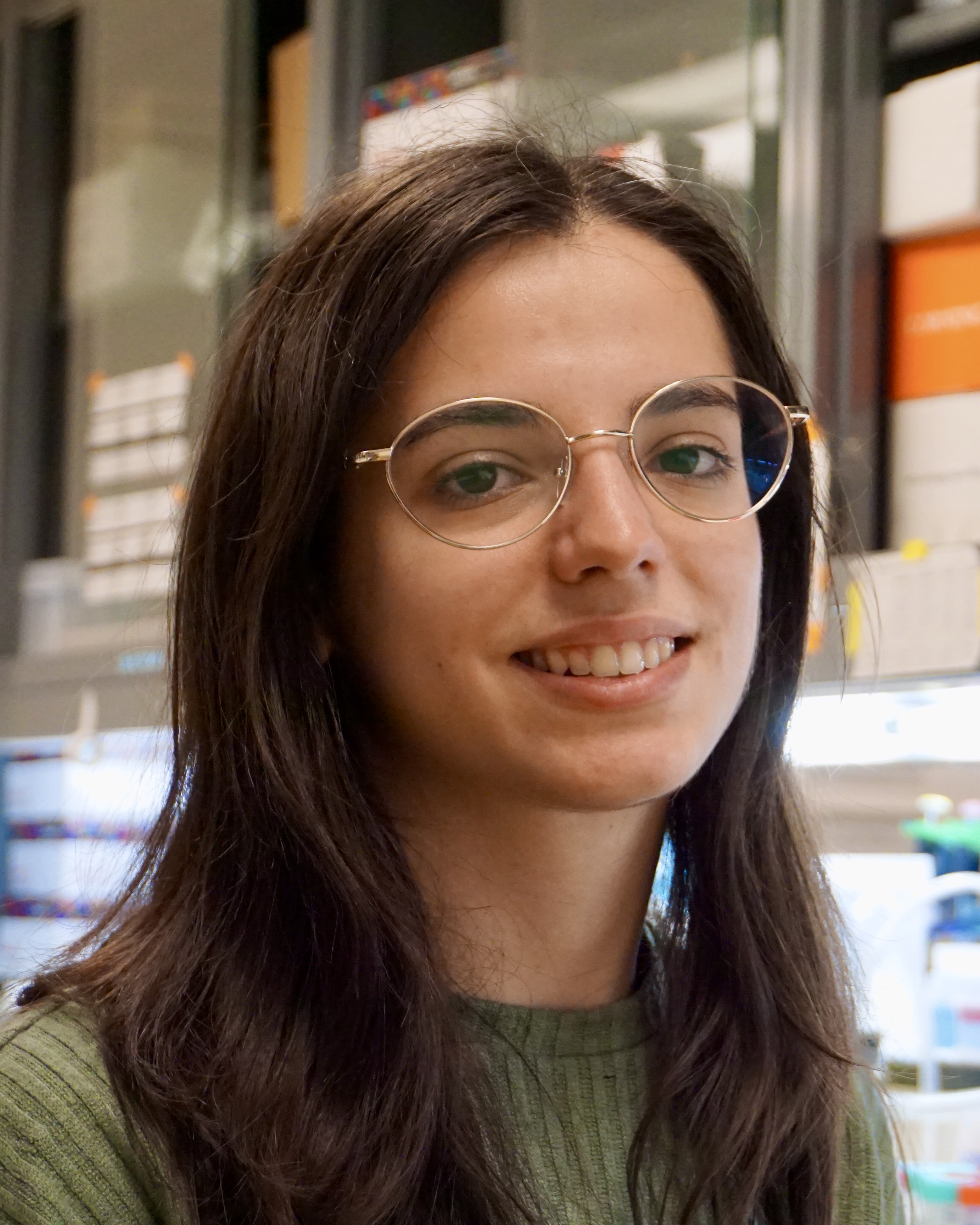 maria.baezatrallero [at] mcgill.ca (María Belén Baeza Trallero)
maria.baezatrallero [at] mcgill.ca (María Belén Baeza Trallero)
Assistante de recherche
"I’m an active, curious, science-passionate person; I’m always willing to learn from new techniques, different approaches and procedures within an international environment. Working at The Neuro gives me not only that, but also the chance of supporting a team and performing tasks that I truly believe would lead to develop significant new knowledge in neurodegenerative diseases and treatments for patients suffering from them."
"Soy una persona activa, curiosa, apasionada por la ciencia, siempre estoy dispuesta a aprender nuevas técnicas, diferentes enfoques y procedimientos dentro de un entorno internacional. Trabajar en The Neuro me brinda no solo eso, sino también la oportunidad de apoyar a un equipo y realizar tareas que realmente creo que conducirán a desarrollar nuevos conocimientos significativos sobre enfermedades neurodegenerativas así como tratamientos para los pacientes que las padecen, lo cual es extraordinario."
Regardez la page LinkedIn de María
Lisez la biographie de María
Né et élevé à Saragosse, en Espagne, j'ai obtenu mon BSc en Biotechnologie de l'Université de Saragosse et mon MSc en Génétique et Biologie Cellulaire de l'Universidad Autónoma de Madrid. Au cours des dernières années, j'ai travaillé pour différentes équipes de recherche, notamment dans les techniques de biologie moléculaire et cellulaire telles que l'extraction d'ARN et d'ADN, la PCR quantitative ou le western blot. J'ai également travaillé comme assistante de recherche à l'Hôpital Clinique Universitaire Lozano Blesa et pour une entreprise afin de mettre en place des dispositifs d'immunochromatographie à flux latéral pour le diagnostic de maladies humaines. C'est à ce moment-là que j'ai vraiment réalisé l'impact que notre travail pouvait avoir pour de vrais patients et l'importance de la recherche. J'ai obtenu une bourse et je suis d'abord venue à Montréal en 2018 pour accomplir la dernière année de mon BSc dans un contexte d'échange interuniversitaire. Au cours de cette année, j'ai eu l'opportunité de faire un stage à l'UQAM. J'ai rejoint une équipe formidable où j'ai exploré la différenciation des cellules souches hématopoïétiques (CSH) en utilisant la cytométrie en flux. Je suis tombée amoureuse de cette ville alors j'ai décidé d'y revenir en 2022, à la recherche de nouvelles opportunités stimulantes qui me permettent de continuer à développer mes compétences.J'ai finalement rejoint l'équipe du Dr Durcan et la PDMPP du Neuro en 2023.
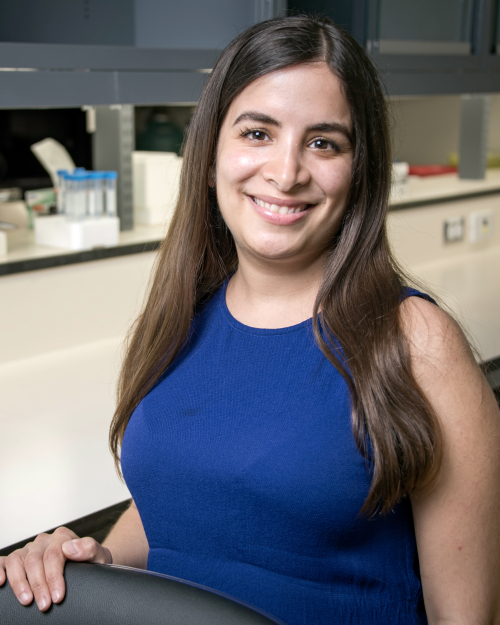 ghazal.haghi [at] mcgill.ca (Ghazal Haghi)
ghazal.haghi [at] mcgill.ca (Ghazal Haghi)
Assistante de recherche
"I believe that stem cell research is one of the best ways to find treatments for neuro-degenerative diseases. By working in this field at The Neuro I hope to take a step, even though small, towards finding a treatment for patients."
"من باور دارم که کار در زمینه سلول های بنیادی یکی از بهترین راه های پیدا کردن درمان برای بیماریهای عصبی است. با کار کردن در این زمینه و در این مرکز، امیدوارم که قدم حتی کوچکی برای کمک به بیماران برداشته شو"
Lisez la biographie de Ghazal
J'ai commencé mon parcours en tant que scientifique avec un baccalauréat en Génétique en Iran. Pour continuer mes études, j'ai déménagé au Royaume-Uni. Après avoir complété une maîtrise en biologie de la reproduction et me concentrant principalement sur les cellules souches humaines, j'ai rejoint le Centre des maladies de neurodégénérescence à Édimbourg en tant qu'assistante de recherche pendant quelques années. Déménager au Canada et retrouver ma voie était un nouveau défi. Après avoir travaillé dans quelques entreprises et élargi mon expertise en génétique reproductive, je suis retournée dans le milieu universitaire et je suis ravie de travailler à nouveau avec des iPSC humaines.
Publications sélectionnées
- Qiu J, McQueen J, Bilican B, Dando O, Magnani D, Punovuori K, Selvaraj BT, Livesey M, Haghi G, Heron S, Burr K, Patani R, Rajan R, Sheppard O, Kind PC, Simpson TI, Tybulewicz VL, Wyllie DJ, Fisher EM, Lowell S, Chandran S, Hardingham GE. (2016) Evidence for evolutionary divergence of activity-dependent gene expression in developing neurons. Elife doi: 10.7554/eLife.20337.
- Bilican B, Livesey MR, Haghi G, Qiu J, Burr K, Siller R, Hardingham GE, Wyllie DJ, Chandran S. PLoS One. (2014) Physiological normoxia and absence of EGF is required for the long-term propagation of anterior neural precursors from human pluripotent cells. PLOS ONE doi: 10.1371/journal.pone.0085932.
- James OT, Livesey MR, Qiu J, Dando O, Bilican B, Haghi G, Rajan R, Burr K, Hardingham GE, Chandran S, Kind PC, Wyllie DJ. (2014) Ionotropic GABA and glycine receptor subunit composition in human pluripotent stem cell-derived excitatory cortical neurones. J Physiol. doi: 10.1113/jphysiol.2014.278994.
- Livesey MR, Bilican B, Qiu J, Rzechorzek NM, Haghi G, Burr K, Hardingham GE, Chandran S, Wyllie DJ. (2014) Maturation of AMPAR composition and the GABAAR reversal potential in hPSC-derived cortical neurons. J Neurosci.. doi: 10.1523/JNEUROSCI.5410-13.2014.
- Serio A, Bilican B, Barmada SJ, Ando DM, Zhao C, Siller R, Burr K, Haghi G, Story D, Nishimura AL, Carrasco MA, Phatnani HP, Shum C, Wilmut I, Maniatis T, Shaw CE, Finkbeiner S, Chandran S. (2013) Astrocyte pathology and the absence of non-cell autonomy in an induced pluripotent stem cell model of TDP-43 proteinopathy. Proc Natl Acad Sci U S A. doi: 10.1073/pnas.1300398110.
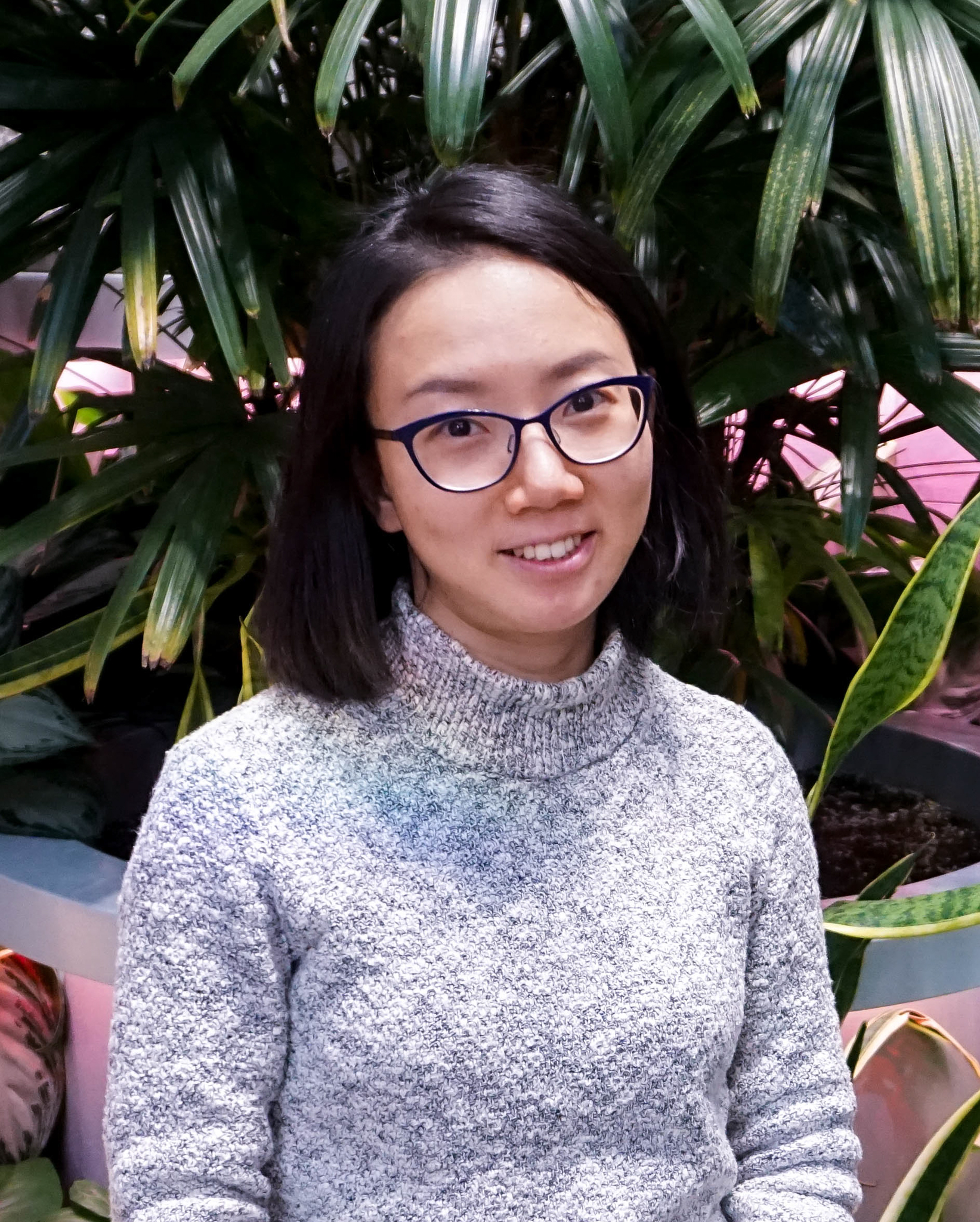 bing.han [at] mcgill.ca (Bing Han)
bing.han [at] mcgill.ca (Bing Han)
Assistante de recherche
"Here in the Neuro we embrace Open Science which promotes collaboration and innovation. Seeing patients in the Neuro reminds me about our mutual goal of finding treatments and is what makes my work and my life meaningful everyday. "
"蒙特利尔神经科学研究医院是世界最好的神经科学研究中心之一。能和来自全球各国的科学家和研究人员一起工作,能成为这个高度协调的团队的一员,共同为人类的健康做贡献,我感到非常幸运,在这里工作我非常开心。"
Regardez la page LinkedIn de Bing
Lisez la biographie de Bing
J’ai obtenu un bachelor en Biochimie et Neurosciences à l’Université de Toronto puis j’ai déménagé à Montréal où j’ai toujours été fasciné par cette belle ville multiculturelle. C’est un honneur pour moi de faire partie de l’équipe EDDU au Neuro, où les chercheurs sont très engagés et travaillent ensemble pour un but commun (trouver de meilleurs traitements pour les patients). Voilà ce qui me motive chaque jour. Je pense que l’Open Science est primordiale pour améliorer la santé humaine; en partageant plus, nous ouvrons plus de portes à de nouvelles découvertes.
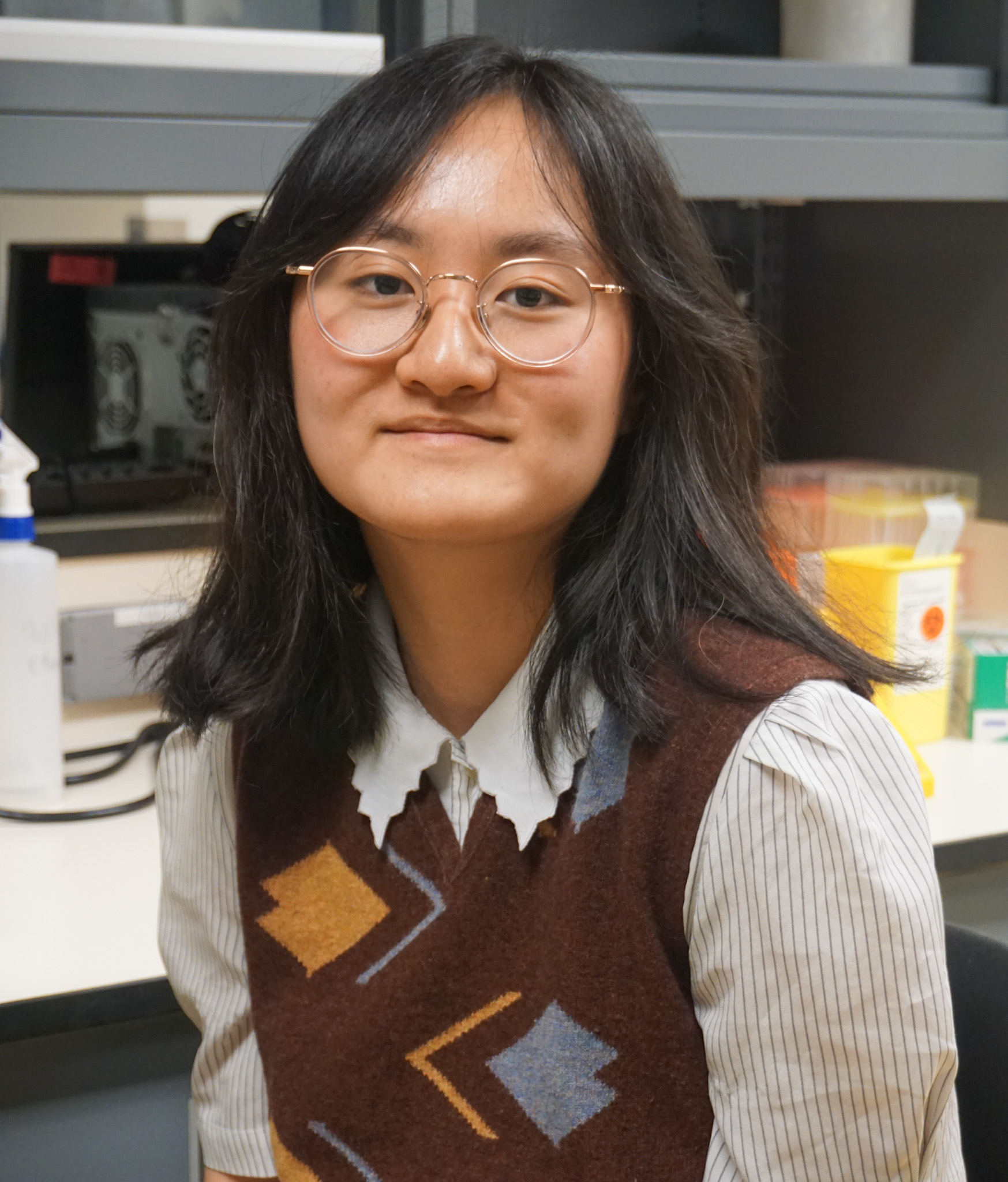 doris.hua [at] mail.mcgill.ca (Doris Hua)
doris.hua [at] mail.mcgill.ca (Doris Hua)
Assistante de projet: Formation et sensibilisation
"As I learn from the incredible scientists here at the EDDU, I am continually inspired in our pursuit of Open Science to advance the discovery of therapies to treat neurological disease. Working alongside Luisa Pimentel in our Outreach Team has enriched my undergraduate education immensely, and I am grateful for the opportunity to widely share the work done here at the EDDU with others."
Regardez la page LinkedIn de Doris
Lisez la biographie de Doris
Né en Chine, ma maison est rapidement devenue la banlieue de la région du Grand Toronto, où ma passion pour les sciences et l'écriture a grandi. Déterminé à poursuivre les deux, je me spécialise actuellement en Biologie et en Anglais à McGill, découvrant chaque jour des intersections instructives entre les deux domaines. L'une des plus grandes opportunités d'appliquer ces deux compétences a été ici à la PDMPP, où je travaille sur la création de protocoles de laboratoire et de vidéos de formation. Mon travail porte aussi sur la gestion de notre siteweb, de notre portail de données et de nos médias sociaux. Je crois que le partage des connaisances et la communication efficace des nouvelles recherches sont à la fine pointe du progrès, en particulier à une époque où l'information est si facilement accessible. Avec ma formidable collègue, Luisa Pimentel, notre équipe de formation continue de contribuer à la science ouverte en partageant au niveau internatinal le travail incroyable effectué ici à la PDMPP.
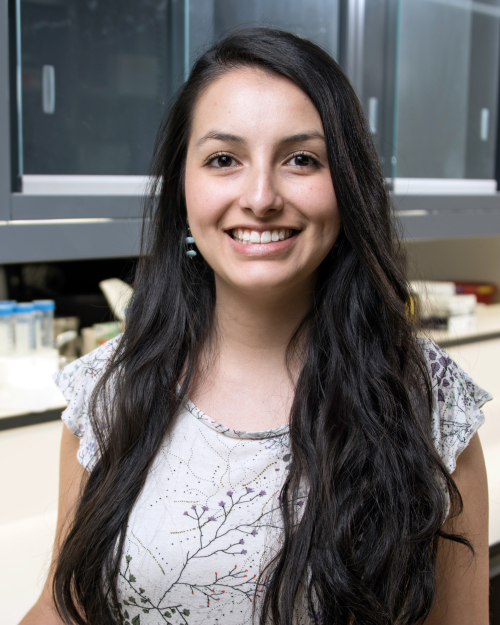 andrea.krahnroldan [at] mail.mcgill.ca (Andrea Krahn)
andrea.krahnroldan [at] mail.mcgill.ca (Andrea Krahn)
Assistante de recherche
"Working at the first Open Science Institute in the world, where scientists like Wilder Penfield, Donald Hebb, and Brenda Milner made their most famous discoveries is truly an honour."
"Ser parte de un instituto en el cual científicos como Wilder Penfield, Donald Hebb y Brenda Milner hicieron sus descubrimientos más famosos, es realmente un honor."
Regarder notre vidéo soulignant le travail d'Andrea
Lisez la biographie d'Andrea
Andrea est née à Mexico et a ensuite grandi dans la petite ville de Niagara on the Lake. Elle a fréquenté l'Université Brock, où elle a obtenu son baccalauréat en Neurosciences. Elle a ensuite travaillé comme analyste chimique au Centre Canadien des Eaux Intérieures avant de déménager à Montréal pour poursuivre une maîtrise en neurosciences à McGill. Elle est maintenant assistante de recherche à la PDMPP du Neuro, son travail porte sur l'automatisation des tests de dépistage à haut contenu utlisant les neurones dérivés d'iPSC.
Publications sélectionnées
- Tang, M.Y., M. Vranas, A.I. Krahn, S. Pundlik, J.F. Trempe, and E.A. Fon. 2017. Structure-guided mutagenesis reveals a hierarchical mechanism of Parkin activation. Nat Commun. 8:14697.
- McLelland, G.L., T. Goiran, W. Yi, G. Dorval, C.X. Chen, N.D. Lauinger, A.I. Krahn, S. Valimehr, A. Rakovic, I. Rouiller, T.M. Durcan, J.F. Trempe, and E.A. Fon. 2018. Mfn2 ubiquitination by PINK1/parkin gates the p97-dependent release of ER from mitochondria to drive mitophagy. eLife. 7. DOI: 10.7554/eLife.32866
- Yi, W., E.J. MacDougall, M.Y. Tang, A.I. Krahn, Z. Gan-Or, J.F. Trempe, E.A. Fon. 2019. The landscape of Parkin variants reveals pathogenic mechanisms and therapeutic targets in Parkinson’s disease. Hum Mol Genet. DOI: 10.1093/hmg/ddz080
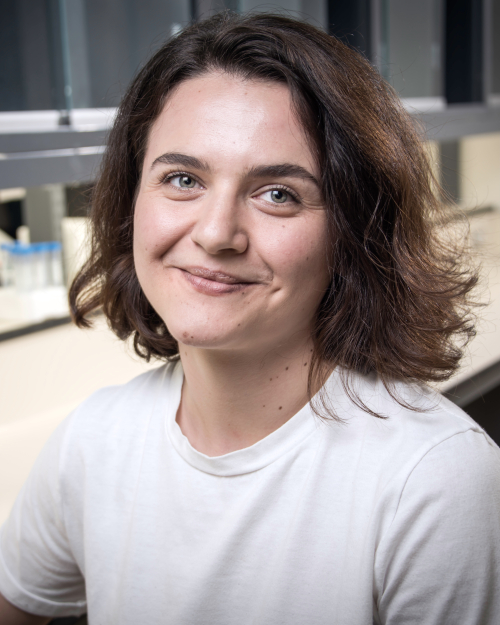 paula.lepine [at] mcgill.ca (Paula Lépine)
paula.lepine [at] mcgill.ca (Paula Lépine)
Assistante de recherche
"I feel lucky to be part of a great team of researchers coming from different backgrounds and who all work towards the same goal: finding new solutions to improve patients’ quality of life."
"J’apprécie beaucoup faire partie d’une communauté scientifique exceptionnellement riche formée par des chercheurs et chercheuses venant du monde entier."
Lisez la biographie de Paula
J'ai obtenu un diplôme de maîtrise à l'Université de Montréal en neurosciences avec une spécialisation en neuro-immunologie. Après l'obtention de mon diplôme, j'ai commencé à travailler au CRCHUM où j'ai approfondi mes connaissances en histologie, en culture cellulaire et en cytométrie en flux. Plus tard, j'ai rejoint la PDMPP du Neuro où j'aide d'autres chercheurs à analyser leurs organoïdes. Je fais également partie de l'équipe de génération d'organoïdes, où je supervise la production de nombreux organoïdes cérébraux.
Publications sélectionnées
- Mohamed NV, Sirois J, Ramamurthy J, Mathur M, Lépine P, Deneault E, Maussion G, Nicouleau M, Chen CXQ, Abdian N, Soubannier V, Cai E, Nami H, Thomas RA, Tabatabaei M, Beitel LK, Singh Dolt K, Karamchandani J, Kunath T, Fon EA, Durcan TM (2021) Midbrain organoids with an SNCA gene triplication model key features of synucleinopathy. In press in Brain Communications. Preprint available: https://doi.org/10.1101/2021.04.12.439480
- Imanbekova M, Suarasan S, Rojalin T, Mizenko R, Hilt S, Mathur M, Lépine P, Nicouleau M, Mohamed NV, Durcan TM, Carney RP, Voss JC, and Wachsmann-Hogiu S. (2021) Identification of amyloid beta in small extracellular vesicles via Raman spectroscopy. Nanoscale Advances, doi: http://doi.org/10.1039/D1NA00330E.
- Mohamed NV, Lépine P, Lacalle-Aurioles M, Sirois J, Mathur M, Reintsch W, Beitel LK, Fon EA, Durcan TM.( 2021) Microfabricated disk technology: rapid scale up in midbrain organoid generation. Methods, doi: https://doi.org/10.1016/j.ymeth.2021.07.008
- Zhang I, Lépine P, Han C, Lacalle-Aurioles M, Chen CX, Haag R, Durcan TM, Maysinger D. (2020) Nanotherapeutic Modulation of Human Neural Cells and Glioblastoma in Organoids and Monocultures. Cells, doi: https://doi.org/10.3390/cells9112434
- Masaki K, Sonobe Y, Ghadge G, Pytel P, Lépine P, Pernin F, Cui QL, Antel JP, Zandee S, Prat A, Roos RP. (2020) RNA-binding protein altered expression and mislocalization in MS. Neurol Neuroimmunol Neuroinflamm. doi: https://doi.org/10.1212/NXI.0000000000000704
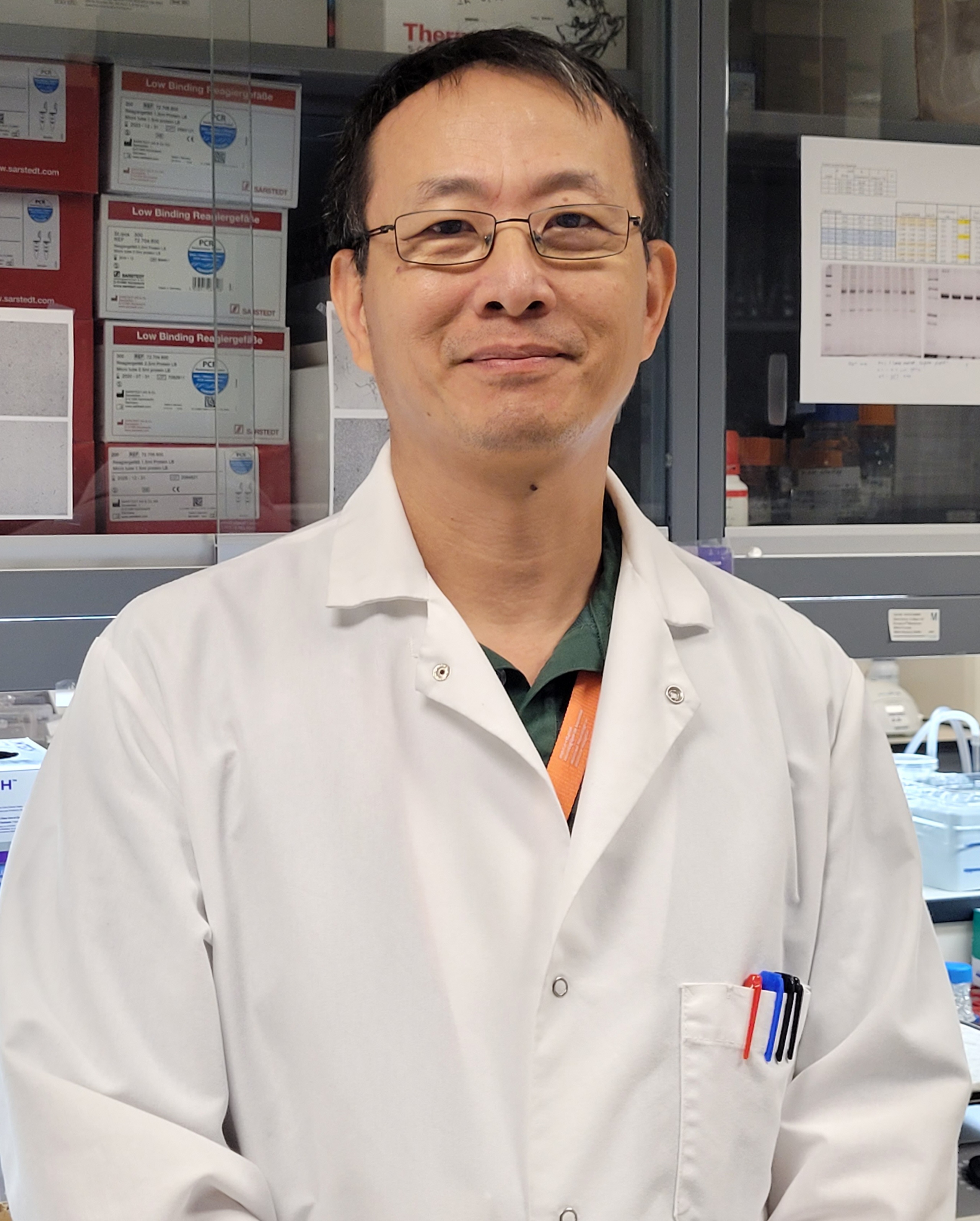 wen.luo2 [at] mcgill.ca (Wen Luo)
wen.luo2 [at] mcgill.ca (Wen Luo)
Assistant de recherche
"Finding new drugs for treating neural degeneration still remains a challenge even after four decades. I am proud of working at The Neuro with my expertise to support the PD research, and to facilitate drug discovery through providing high quality proteins to our research team and collaborative partners in Canada and abroad."
"过去四十年没能找到治疗神经退行性疾病的新药,是人类的一大挑战。在这个开放平台,通过我提供的纯化蛋白,促进基础研究和加快药物开发,我就倍感荣幸。"
Lisez la biographie de Wen
Avant de me joindre au Neuro en février 2017, j'avais plus de deux décennies d'expérience de travail en laboratoire dans la purification et la caractérisation de protéines/enzymes d'origines diverses (pour la bioconversion des lignocelluloses, la surveillance des allergènes aéroportés à l'intérieur, la génération d'anticorps et la découverte de médicaments pour le traitement du cancer), ainsi que dans le développement et l'optimisation d'immunoessais basée sur Taguchi (pour la quantification d'allergènes fongiques de milieu intérieur ou de biomarqueurs de cancer à l'aide d'ELISA, de puces à haut débit, etc.). Au cours des vingt dernières années, bien que l'alpha-synucléine anormale ait été impliquée dans le développement de la maladie de Parkinson (MP), il existe encore des lacunes dans nos connaissances et des défis dans la recherche de produits pharmaceutiques pour traiter les maladies neurodégénératives. Fournir des protéines purifiées de haute qualité est ma tâche essentielle et un soutien efficace pour notre équipe de recherche et nos partenaires dans la lutte contre la MP et autres maladies.
Publications sélectionnées
- Benjamin Feller, Aurélie Fallon, Wen Luo, Phuong Trang Nguyen, Irina Shlaifer, Alfred Kihoon Lee, Samer Karkout, Steve Bourgault, Thomas M Durcan, Hideto Takahashi (2023). α-synuclein preformed fibrils bind to β-neurexins and impair β-neurexin-mediated presynaptic organization. bioRxiv 2023.01.28.526024; doi: https://doi.org/10.1101/2023.01.28.526024
- Omid Tavassoly, Esther del Cid Pellitero, Frederique Larroquette, Eddie Cai, Rhalena A. Thomas, Vincent Soubannier, Wen Luo, Thomas M. Durcan, Edward A. Fon (2021) Pharmacological Inhibition of Brain EGFR Activation By a BBB-penetrating Inhibitor, AZD3759, Attenuates α-synuclein Pathology in a Mouse Model of α-Synuclein Propagation. Neurotherapeutics (IF7.62), DOI: 10.1007/s13311-021-01017-6
- Wen Luo, Mateu Pla-Roca and David Juncker. (2011) Taguchi design-based optimization of sandwich immunoassay microarrays for detecting breast cancer biomarkers. Analytical Chemistry. 83:5767-5774.
- Wen Luo, Aaron M. Wilson and J. David Miller (2010) Characterization of a 52 kDa exoantigen of Penicillium chrysogenum and monoclonal antibodies suitable for its detection. Mycopathologia 169:15-26.
- Aaron M. Wilson, Wen Luo and J. David Miller (2009) Using human sera to identify a 52-kDa exoantigen of Penicillium chrysogenum and implications of polyphasic taxonomy of anamorphic Ascomycetes in the study of antigenic proteins. Mycopathologia 168:213-226.
 gilles.maussion [at] mcgill.ca (Gilles Maussion)
gilles.maussion [at] mcgill.ca (Gilles Maussion)
Associé de recherche
"I am convinced that combining clinical and fundamental research as we do at The Neuro will allow researchers to improve our current understanding of neurological and psychiatric diseases toward better healthcare and treatments for patients."
"Travaillant dans un lieu qui combinent des services de soins et laboratoires de recherche, j’espère faire avancer notre compréhension des maladies du neurodéveloppement afin que l’on puisse proposer aux patients et à leur proches un traitement et une meilleure qualité de vie."
Regardez la page PubMed de Gilles
Lisez la biographie de Gilles
Au cours des quinze dernières années j’ai étudié les causes moléculaires et cellulaires de maladies neurologiques et psychiatriques. J’ai obtenu mon doctorat de sciences en 2008 à l’université René Descartes, Paris, France. Mon projet de recherche portait sur l’analyse de changements d’expression génique observés dans le cerveau post mortem de patients autistes et sur l’étude des mécanismes subcellulaires potentiellement affectés par ces dérégulations. En 2009, j’ai rejoint, en tant que chercheur post-doctorant, le groupe McGill d’études sur le suicide. J’y ai étudié, à partir d’échantillons de cerveaux post-mortem, les modifications épigénétques de l’ADN ainsi que les changements d’expression de microARNs et d’ARNs non codants potentiellement associés au comportement suicidaire. Depuis le mois de janvier 2012, dans le cadre de travaux de recherche effectués menés au sein du Groupe McGill de génétique appliquée à la psychiatrie, je me suis intéressé au champ d’études des cellules souches pluripotentes induites comme outils visant à élucider les causes moléculaires et cellulaires de maladies du neurodéveloppement. Au moyen de ces cellules souches, j’ai étudié les processus qui, se déroulant très tôt dans le développement, sont nécessaires à une différentiation adéquate des neurones. Depuis le mois de janvier 2017, en tant qu’associé de recherche au Neuro dans le laboratoire du Dr Durcan, je coordonne et contribue à des projets de recherche portant sur les maladies neurodeveloppementales et neurologiques tout en me spécialisant dans la génération et la caractérisation de neurones et d’astrocytes dérivées de cellules IPSCs ainsi que dans les approches de transcriptomiques.
Publications sélectionnées
-
Maussion, G*., Thomas, RA.*, Demirova, I., Gu, G., Cai, E., Chen, C. X., Abdian, N., Strauss, T., Kelaï, S., Nauleau-Javaudin, A., Beitel, L. K., Ramoz, N., Gorwood, P., Durcan, T. M. Auto-qPCR; a python-based web app for automated and reproducible analysis of qPCR data. Sci Rep 11, 21293 (2021). https://doi.org/10.1038/s41598-021-99727-6
-
Maussion G, Rocha C, Beitel L.K., Durcan T.M. (2019) Patient-derived stem cells, another in vitro model or the missing link towards novel therapies for Autism Spectrum Disorders? Mini-review Front Pediatr. Jun 6;7:225.
-
Bell S*, Maussion G*, Jefri M, Peng H, Theroux JF, Silveira H, Soubannier V, Wu H, Hu P, Galat E, Torres-Platas SG, Boudreau-Pinsonneault C, O'Leary LA, Galat V, Turecki G, Durcan TM, Fon EA, Mechawar N, Ernst C (2018) Disruption of GRIN2B Impairs Differentiation in Human Neurons. Stem Cell Reports 11:183-196.
-
Maussion G*, Diallo AB*, Gigek CO, Chen ES, Crapper L, Theroux JF, Chen GG, Vasuta C, Ernst C (2015) Investigation of genes important in neurodevelopment disorders in adult human brain. Hum Genet 134:1037-1053.
-
Maussion G, Yang J, Suderman M, Diallo A, Nagy C, Arnovitz M, Mechawar N, Turecki G (2014) Functional DNA methylation in a transcript specific 3'UTR region of TrkB associates with suicide. Epigenetics 9:1061-1070.
-
Labonte B, Suderman M, Maussion G, Navaro L, Yerko V, Mahar I, Bureau A, Mechawar N, Szyf M, Meaney MJ, Turecki G (2012) Genome-wide epigenetic regulation by early-life trauma. Arch Gen Psychiatry 69:722-731.
*These authors contributed equally.
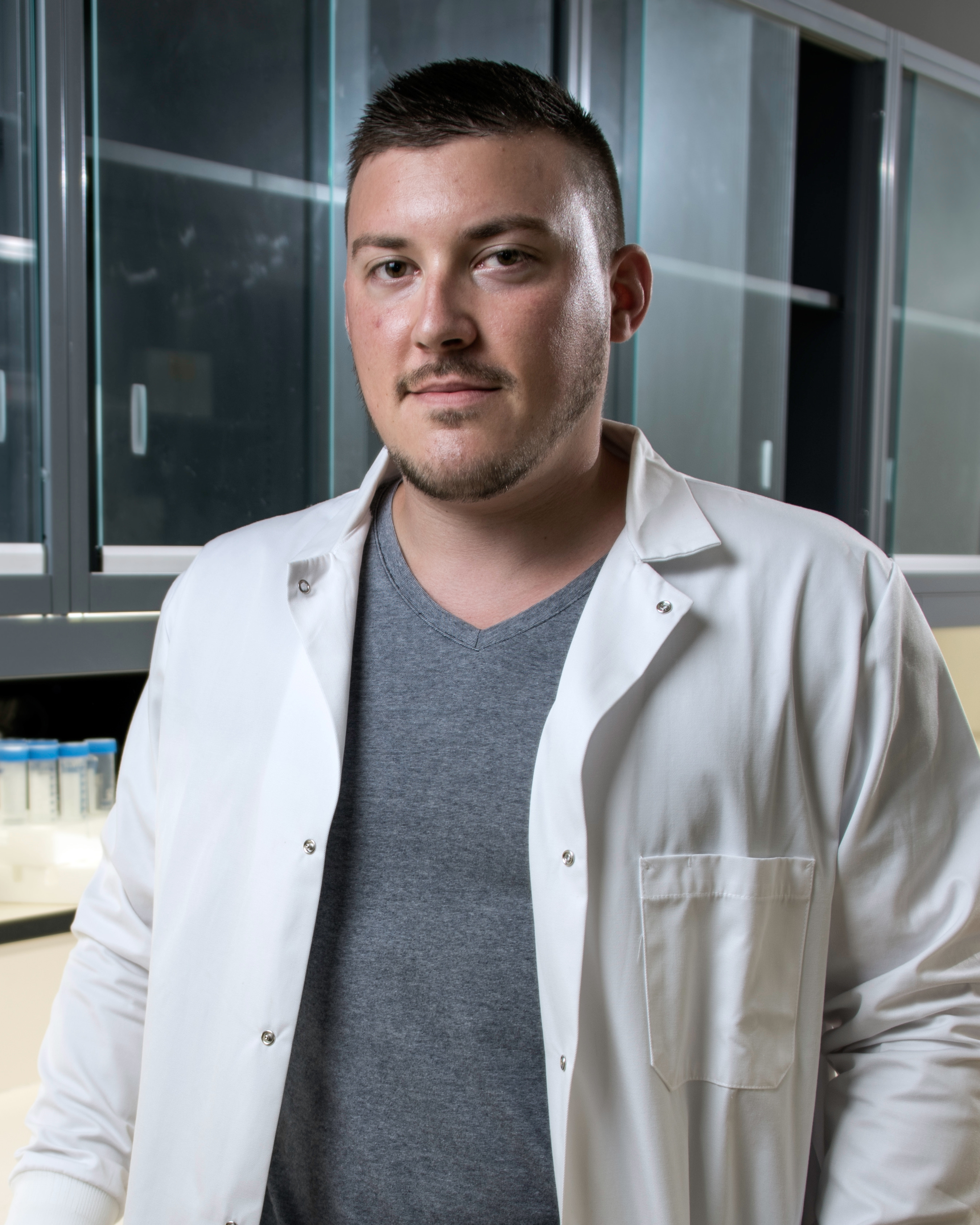 michael.nicouleau [at] mcgill.ca (Michael Nicouleau)
michael.nicouleau [at] mcgill.ca (Michael Nicouleau)
Technicien de recherche
"The Neuro is an exceptional place allowing interaction between patients, physicians, and researchers. Such synergy between research and clinical practice help to better understand diseases and lead to the emergence of new treatments."
"The Neuro est un lieu exceptionnel qui permet une interaction entre patients, médecins et chercheurs. Cette synergie entre recherche et clinique favorise la compréhension des maladies et l’émergence de nouveau traitements."
Regarder notre vidéo soulignant le travail de Michael
Lisez la biographie de Michael
Je suis un Technicien de Recherche dont le travail principal porte sur le côté génétique : créer, valider et caractériser de nouvelles lignées cellulaires qui constituent la première étape de l'étude des troubles neurodégénératifs grâce à la génération de nouveaux modèles. Avant de rejoindre la Plateforme de Découverte de Médicaments en Phase Précoce, j'ai passé 9 ans dans plusieurs groupes de recherche en France et aux États-Unis où j'ai étudié différentes maladies humaines, de la néphrologie à l'ophtalmologie en passant par les malformations cérébelleuses. En utilisant une approche récente de séquençage à haut débit, j'ai participé à l'identification et à la caractérisation de nouveaux gènes et mutations associés à des maladies génétiques rares. Au cours des 10 dernières années, je me suis concentré sur les pathologies cérébrales en utilisant plusieurs modèles tels que la souris, les cellules souches humaines et les organoïdes 3D dérivés de cellules souches pluripotentes induites (iPSC). Lorsque je ne voyage pas, j'aime partir en randonnée, faire de la moto et rêver de ma prochaine aventure.
Publications sélectionnées
- Chemin J, Siquier-Pernet K, Nicouleau M, et al. De novo mutation screening in childhood-onset cerebellar atrophy identifies gain-of-function mutations in the CACNA1G calcium channel gene. Brain. 2018;141(7):1998-2013. doi:10.1093/brain/awy145
- Medina-Cano, D., Ucuncu, E., Nguyen, L. S., Nicouleau, M., Lipecka, J., Bizot, J. C., Thiel, C., Foulquier, F., Lefort, N., Faivre-Sarrailh, C., Colleaux, L., Guerrera, I. C., & Cantagrel, V. (2018). High N-glycan multiplicity is critical for neuronal adhesion and sensitizes the developing cerebellum to N-glycosylation defect. eLife, 7, e38309. https://doi.org/10.7554/eLife.38309
- Stessman, Holly A F et al. “Disruption of POGZ Is Associated with Intellectual Disability and Autism Spectrum Disorders.” American journal of human genetics vol. 98,3 (2016): 541-552. doi:10.1016/j.ajhg.2016.02.004
- Megahed H, Nicouleau M, Barcia G, et al. Utility of whole exome sequencing for the early diagnosis of pediatric-onset cerebellar atrophy associated with developmental delay in an inbred population. Orphanet J Rare Dis. 2016;11(1):57. Published 2016 May 4. doi:10.1186/s13023-016-0436-9
- Perrault, I., Hanein, S., Zanlonghi, X., Serre, V., Nicouleau, M., Defoort-Delhemmes, S., Delphin, N., Fares-Taie, L., Gerber, S., Xerri, O., Edelson, C., Goldenberg, A., Duncombe, A., Le Meur, G., Hamel, C., Silva, E., Nitschke, P., Calvas, P., Munnich, A., Roche, O., … Rozet, J. M. (2012). Mutations in NMNAT1 cause Leber congenital amaurosis with early-onset severe macular and optic atrophy. Nature genetics, 44(9), 975–977. https://doi.org/10.1038/ng.2357
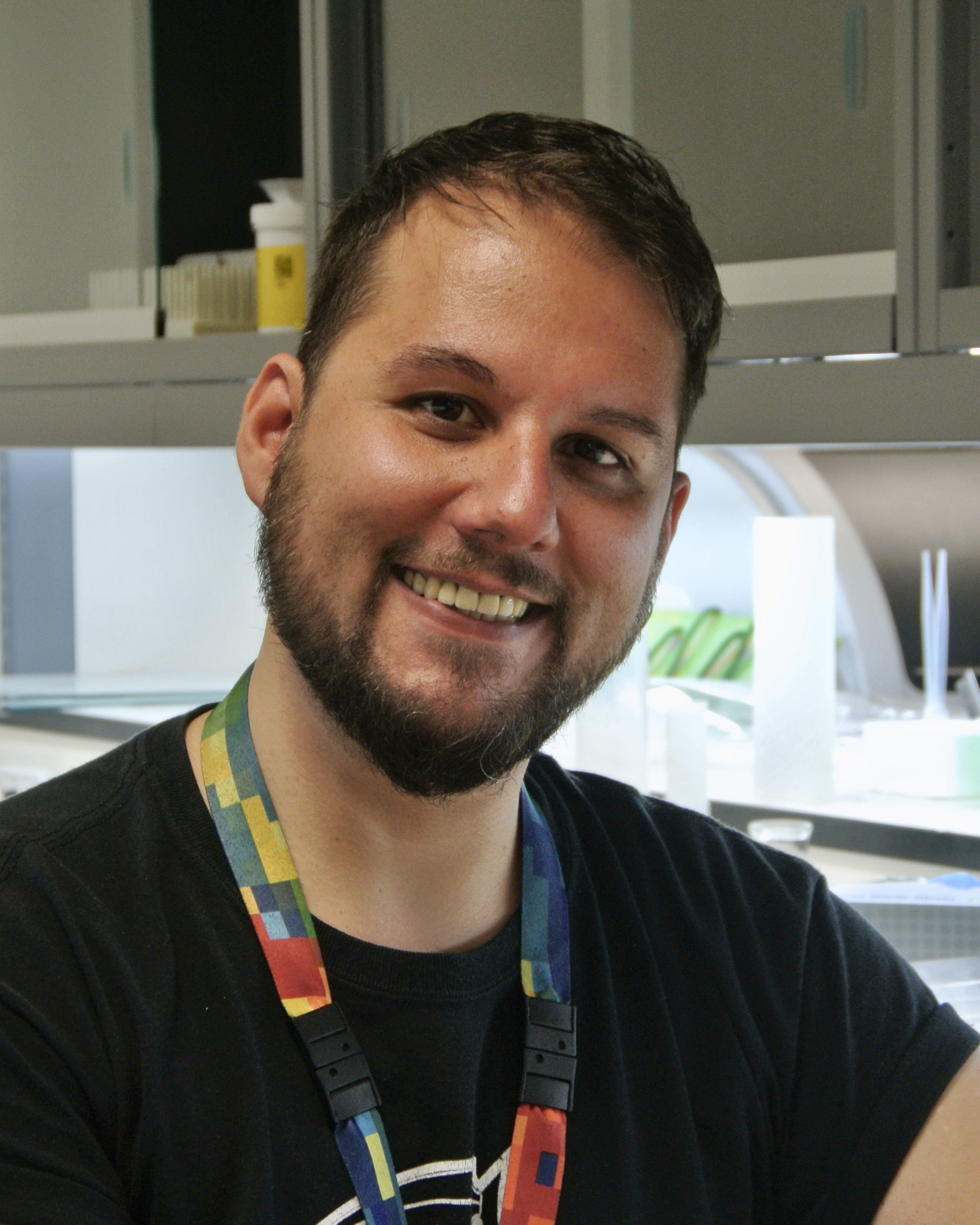 valerio.piscopo [at] mcgill.ca (Valerio Piscopo)
valerio.piscopo [at] mcgill.ca (Valerio Piscopo)
Associé de recherche
"I am proud of being a part of one of the world’s leading centres in Neuroscience. This institute is a stimulating environment and the people working here are a big family."
"Il cervello umano è una macchina affascinante e comprendere il suo funzionamento è di vitale importanza per l’avanzamento della Scienza. Il Neuro è senza dubbio uno dei principali centri a livello mondiale di Neuroscienze e per questo motivo sono fiero di esserne parte."
Regardez la page ResearchGate de Valerio
Regarder notre vidéo soulignant le travail de Valerio
Lisez la biographie de Valerio
J'ai obtenu mon diplôme à Naples, en Italie, en Biotechnologie Médicale. J'ai immédiatement rejoint le programme de physiologie du cours de doctorat en Biologie Appliquée, travaillant au Conseil national de la recherche où je me suis intéressé à la neurobiologie du développement qui reste encore mon intérêt principal. Après mon doctorat, j'ai déménagé à Montréal où j’ai rejoint l'Institut-hôpital neurologique de Montréal (Le Neuro) pour travailler sur la biologie des cellules souches du glioblastome avec le Dr Stefano Stifani. Enfin, j'ai rejoint la PDMPP du Neuro où je me concentre principalement sur la différenciation des oligodendrocytes à partir des iPSC humaines.
Publications sélectionnées
- Kulasekaran G., Chaineau M., Piscopo V., Verginelli F., Fotouhi M., Girard M., Tang Y., Dali R., Lo R., Stifani S. and McPherson P.(2021) An Arf/Rab cascade controls the growth and invasiveness of glioblastoma J Cell Biol. doi: 10.1083/jcb.202004229.
- Rosmaninho P., Mükusch S., Piscopo V., Teixeira V., Raposo A.A., Warta R., Bennewitz R., Tang Y., Herold-Mende C., Stifani S., Momma S., Castro D.S. (2018) Zeb1 potentiates genome-wide gene transcription with Lef1 to promote glioblastoma cell invasion. EMBO Journal 10.15252/embj.201797115
- Bellenchi G., Volpicelli F., Piscopo V., Perrone-Capano C. and di Porzio U. (2012) Adult neural stem cells: an endogenous tool to repair brain injury? Journal of Neurochemistry (2012) 10.1111/jnc. 1208
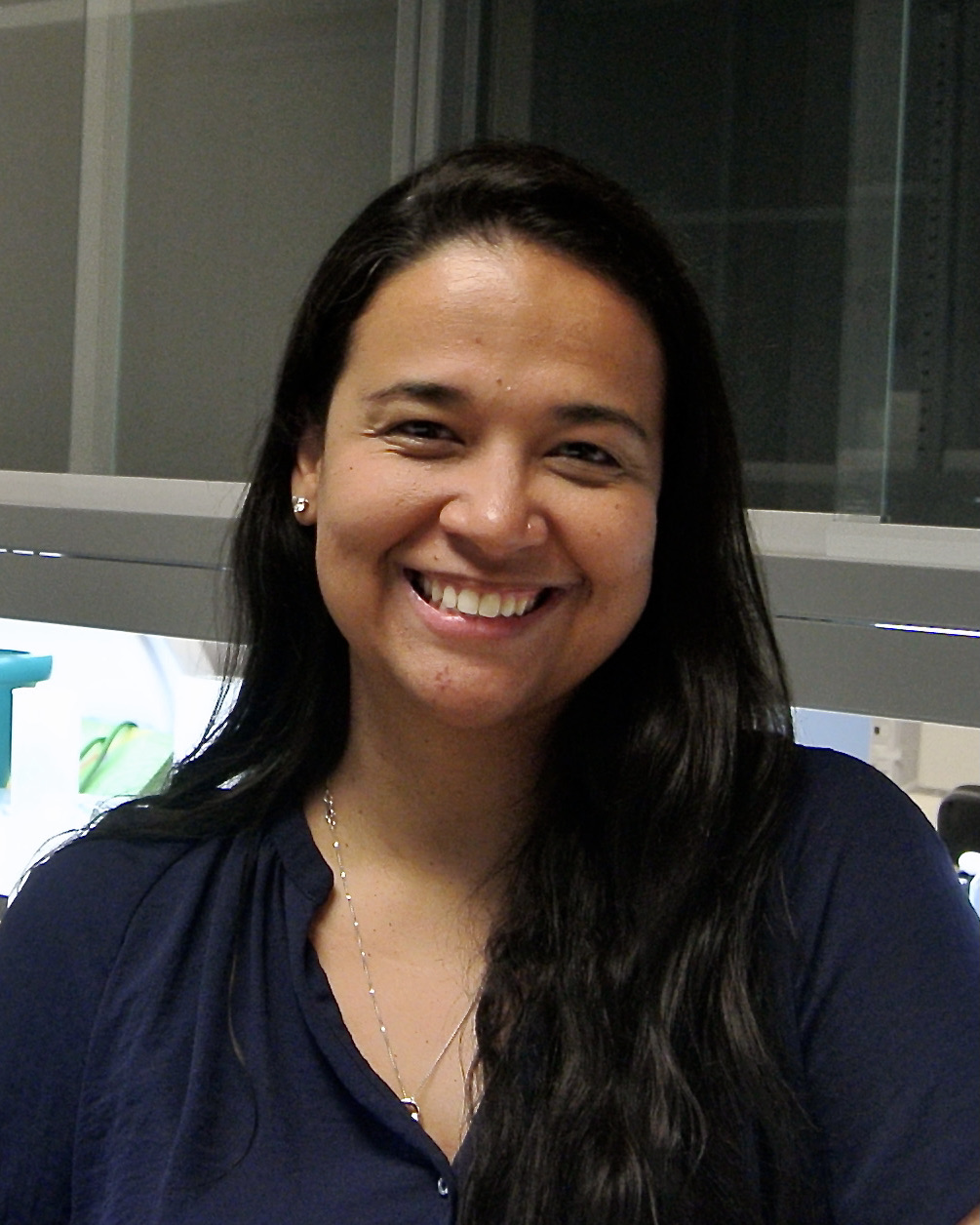 cecilia.rocha [at] mcgill.ca (Cecilia Rocha)
cecilia.rocha [at] mcgill.ca (Cecilia Rocha)
Assistante de recherche
"I am fascinated by the Nervous System, so it is great to be able to work at the Neuro where I have the opportunity to collaborate with neuroscientists from all over the globe offering expertise and learning new techniques to produce groundbreaking work."
"Estudar o Sistema Nervoso sempre me fascinou, entao é uma enorme satisfacao poder trabalhar no Neuro com pesquisadores de todas as partes do mundo onde eu posso contribuir com a minha experiencia e continuar aprendendo novas tecnicas produzindo ciencia de alta qualidade."
Regardez la page LinkedIn de Cecilia
Regarder notre vidéo soulignant le travail de Cecilia
Lisez la biographie de Cecilia
Je suis née au Brésil, à Rio de Janeiro et j'ai grandi juste de l'autre côté du pont dans la plus belle ville du monde, Niteroi. J'ai toujours aimé la science et les voyages, j'ai donc naturellement déménagé dans la deuxième plus belle ville du monde, Paris, pour faire mon doctorat sur les altérations du cytosquelette cellulaire dans les cellules cancéreuses. Mais j'ai toujours été très intrigué par la morphologie neuronale et les températures glaciales,je suis donc venue à Montréal pour travailler en recherche sur le développement du cerveau et pour profiter des merveilles hivernales.
Publications sélectionnées
- Maussion et al., 2019. Patient-Derived Stem Cells, Another in vitro Model, or the Missing Link Toward Novel Therapies for Autism Spectrum Disorders? Front. Pediatri: 6;7:225.
- Bosch Grau M et al., 2017. Alterations in the balance of tubulin glycylation and glutamylation in photoreceptors leads to retinal degeneration. J Cell Sci: 30: 938-949.
- Wieczorek M et al., 2016. The synthetic diazonamide DZ-2384 has distinct effects on microtubule curvature and dynamics without neurotoxicity. Sci Transl Med: 365ra159
- Rocha C et al., 2014. Tubulin glycylases are required for primary cilia, control of cellular proliferation and tumor development in colon. EMBO: 33: 2247-2250.
- Tort et al., 2014. The cytosolic carboxypeptidase family is dedicated to posttranslational removal of acidic amino acids. Mol Cell Biol: 25(19):3017-27.
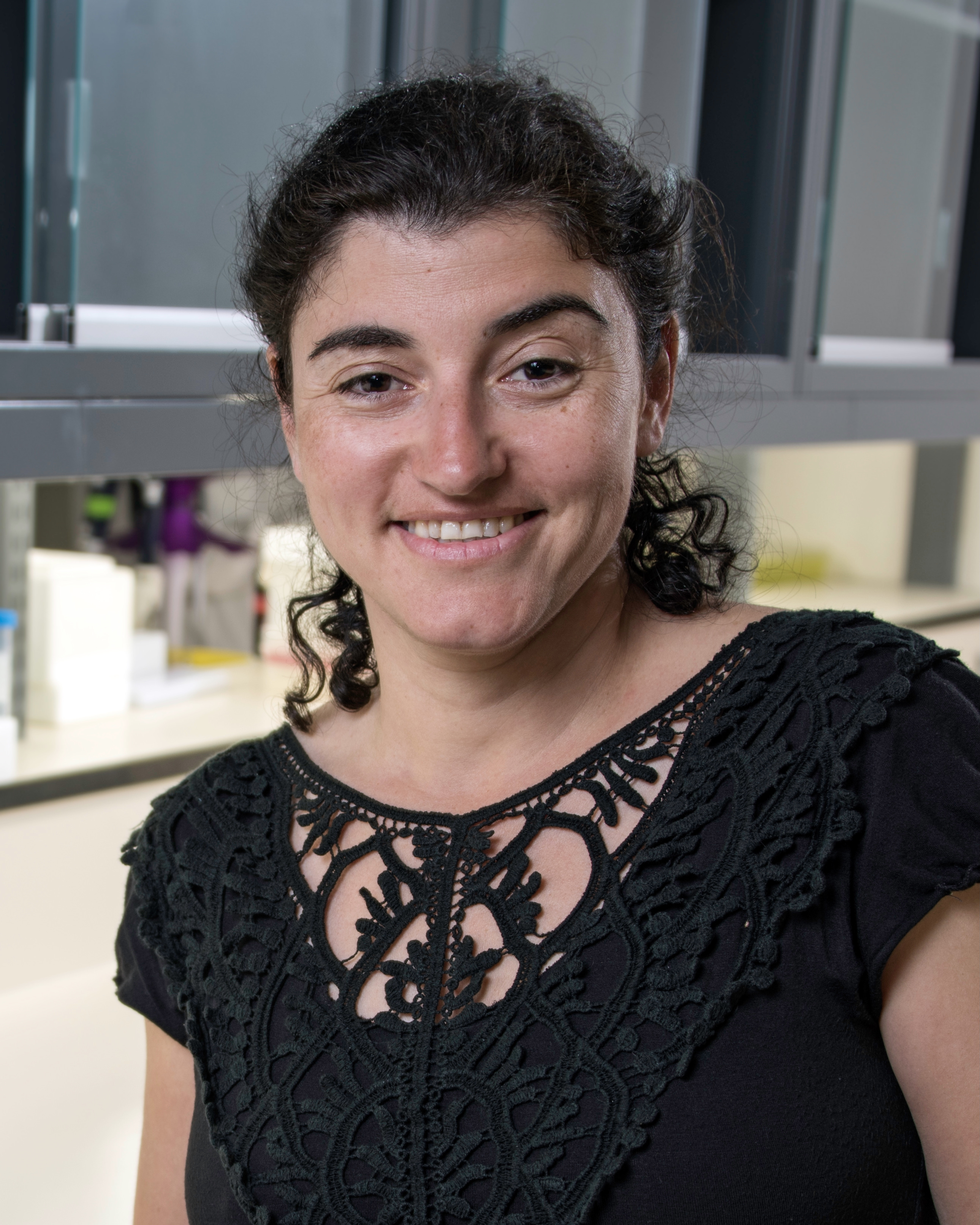 irina.shlaifer [at] mcgill.ca (Irina Shlaifer)
irina.shlaifer [at] mcgill.ca (Irina Shlaifer)
Technicienne de recherche
"I am very pleased and proud to be part of The Neuro research team that provides an excellent opportunity to explore brain’s mysterious nature and helps accelerate the discovery of therapies to treat patients suffering from devastating neurological diseases."
"אני מאוד שמחה וגאה להיות חלק מהצוות מדעי של הנוירו אשר מביא הזדמנות מצוינת לחקור את הטבע המסתורי של המוח ועוזר לקדם את גילוי התרפיות כדי לטפל בחולים אשר סובלים ממחלות נוירולוגיות קשות"
Lisez la biographie d'Irina
Je suis née en Ukraine et ayant grandi dans une famille de médecins et de professeurs de sciences, j'ai toujours eu une passion pour les sciences biomédicales. Suite à l'accident nucléaire de Tchernobyl qui s'est produit près de ma ville natale, j'ai déménagé en Israël.J’y ai terminé mon baccalauréat en sciences de laboratoire médical et ma maîtrise en Biotechnologie à l'Université hébraïque de Jérusalem, en me concentrant sur la délimitation de la structure et de la fonction des transporteurs cérébraux de glutamate. Après avoir travaillé plusieurs années dans des laboratoires de recherche et développement en génétique médicale et en biotechnologie, j'ai décidé de réaliser mon rêve et d'immigrer au Canada avec mon époux et mes deux enfants. Après avoir terminé mon doctorat en Biochimie à l'Université Concordia, j'ai rejoint le Neuro en 2018. À la PDMPP, j'ai travaillé sur la génération et la caractérisation de lignées cellulaires modifiées par CRISPR pour la plateforme de validation des anticorps. De plus, je suis responsable de la génération et de la maintenance des microglies dérivée d'iPSC provenant d’individus en bonne santé et de patients atteints de SLA. Je suis également engagée dans la caractérisation du contrôle de qualité des fibrilles préformées d'alpha-synucléine utilisées dans les études pour modéliser la maladie de Parkinson. Depuis 2019, avec Luisa Pimentel, je coordonne la série de séminaires sur les iPSC qui rassemble des scientifiques travaillant avec la technologie d’iPSC ici à Montréal, ou ailleurs dans le monde, pour partager leurs recherches de pointe. J'espère que tout ce travail passionnant nous permettra de lutter contre les maladies neurodégénératives et d'apporter un changement positif dans notre monde. Outre la science, j'aime la nature, jardiner les fleurs et les baies et explorer de beaux endroits à travers le monde.
Publications sélectionnées
- C. X-Q Chen, E. Deneault, N. Abdian, Z. You, J. Sirois, M. Nicouleau, I. Shlaifer, L. Villegas, M. N. Boivin, L. Gaborieau, J. Karamchandani, L.K. Beitel, E. A. Fon and T. M. Durcan. Generation of patient-derived pluripotent stem cell-lines and CRISPR modified isogenic controls with mutations in the Parkinson's associated GBA gene. Stem cell research (2022), 64, 102919. https://doi.org/10.1016/j.scr.2022.102919
- W. Alshafie, M. Fotouhi, I. Shlaifer, R. Ayoubi, A. M. Edwards, T. M. Durcan, P. S. McPherson and C. Laflamme. Identification of highly specific antibodies for Serine/threonine-protein kinase TBK1 for use in immunoblot, immunoprecipitation and immunofluorescence. (2022) F1000Research. 11, 977. https://doi.org/10.12688/f1000research.124632.2
- A. Bayati, E. Banks, C Han, W. Luo, W. E. Reintsch, C. E. Zorca, I. Shlaifer, E. Del Cid Pellitero, B. Vanderperre, H. M. McBride, E. A. Fon, T. M. Durcan and P. S. McPherson. Rapid macropinocytic transfer of α-synuclein to lysosomes. Cell reports (2022) 40, 3, 111102. https://doi.org/10.1016/j.celrep.2022.111102
- E. Deneault, M. Chaineau, M. Nicouleau, M. José Castellanos Montiel, A. Kristyna Franco Flores, G. Haghi, C. X-Q Chen, N. Abdian, I. Shlaifer, L.K. Beitel, T. M. Durcan. A streamlined CRISPR workflow to introduce mutations and generate isogenic iPSCs for modeling amyotrophic lateral sclerosis, Methods (2021), doi: https://doi.org/10.1016/j.ymeth.2021.09.002
- I. Shlaifer, P. K. Quashie, H. Y. Kim and J. L. Turnbull Biochemical Characterization of TyrA Enzymes From Ignicoccus hospitalis and Haemophilus influenzae: A comparative study of the bifunctional and monofunctional dehydrogenase forms. Biochim. Biophys. Acta (2017) 1856, 312-320.
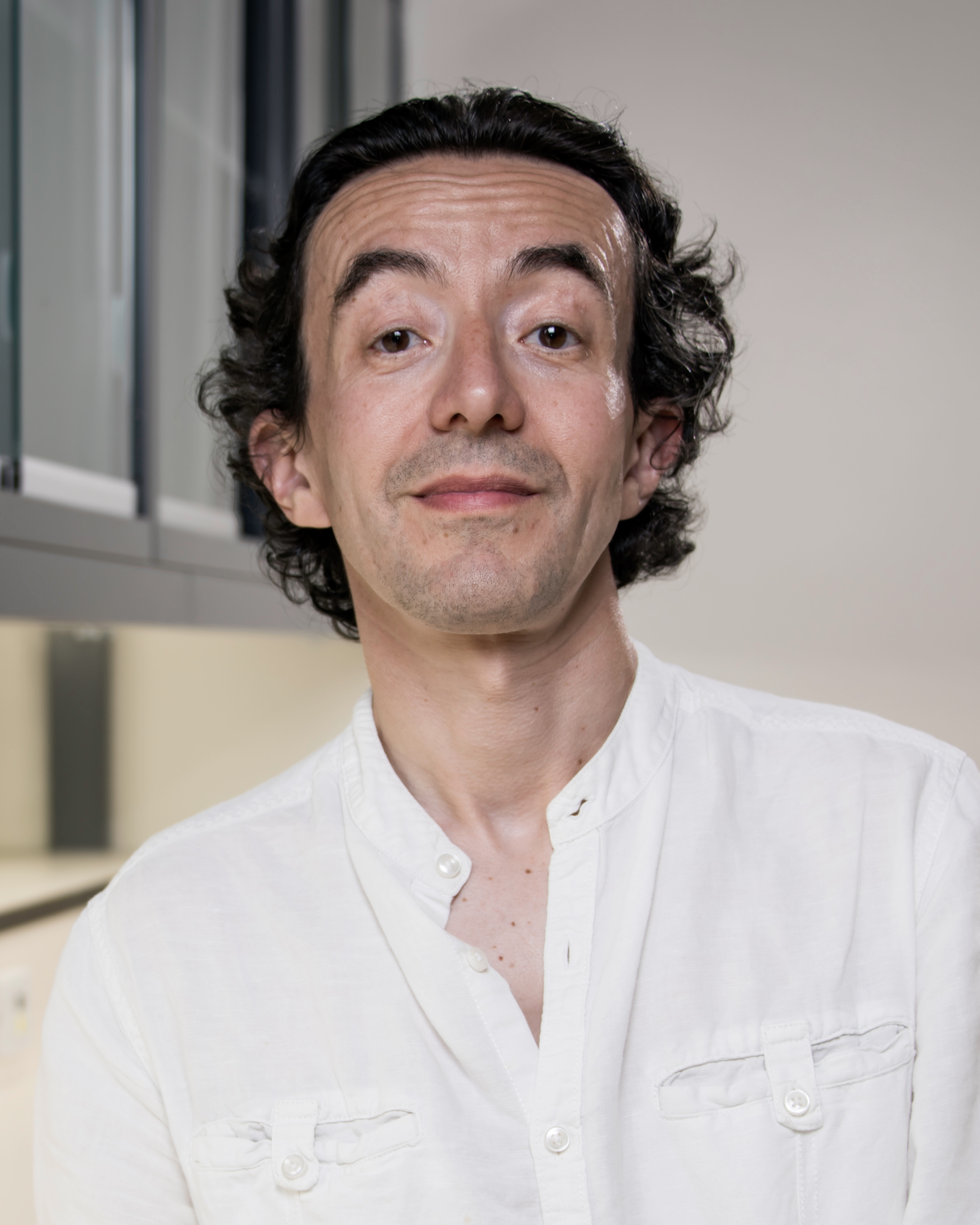 vincent.soubannier [at] mcgill.ca (Vincent Soubannier)
vincent.soubannier [at] mcgill.ca (Vincent Soubannier)
Associé de recherche
"Working at The Neuro gives me the chance to work in an environment of excellence and to use cutting-edge technology to study human diseases. The institute is a perfect place for providing a multitude of learning opportunities, as well as mentoring and coaching others."
"Travailler au Neuro me donne la chance de travailler dans un environnement d'excellence et d'utiliser une technologie de pointe afin d’étudier des maladies humaines. L'institut est un lieu idéal pour offrir une multitude de possibilités d'apprentissage, ainsi que pour enseigner et encadrer les autres."
Regardez la page LinkedIn de Vincent
Lisez la biographie de Vincent
J'ai étudié la biochimie à l'Université de Bordeaux et obtenu un doctorat en sciences biologiques et médicales en 2002. J’ étudiais la structure de l'ATP synthase mitochondriale et nous avons démontré que l'oligomérisation de l'enzyme entraîne la tubulation des membranes internes. J'ai ensuite travaillé en post-doctorat à Munich, en Allemagne, à l'Institut Butenandt, où j'ai identifié le premier composant moléculaire des jonctions de crêtes mitochondriales qui sont les structures présentes à l’embouchure des invaginations de la membrane interne mitochondriale. En 2006, j'ai émigré au Canada, à Ottawa, en tant que post-doctorant pour étudier les vésicules dérivées des mitochondries. Ces vesicules, nouvellement découvertes à l’époque, représentent une nouvelle voie cellulaire dont nous avons montré qu'elle était impliquée dans la maladie de Parkinson. Cette étude a soulevé mon intérêt pour le domaine des neurosciences et, en 2011, j'ai déménagé à Montréal et j'ai commencé à travailler comme associé de recherche à l'Institut neurologique de Montréal. J'ai notamment contribué à clarifier certains mécanismes qui contrôlent le développement normal du système nerveux des mammifères et aujourd'hui, je suis impliqué dans un vaste effort visant à modéliser la sclérose latérale amyotrophique (SLA) à l'aide de cellules neurales dérivées de cellules souches pluripotentes humaines induites (iPSC).
Publications sélectionnées
- Methot L, Soubannier V, Hermann R, Campos E, Li S, Stifani S. Nuclear factor-kappaB regulates multiple steps of gliogenesis in the developing murine cerebral cortex. Glia. 2018 Dec;66(12):2659-2672.
- Soubannier V, Stifani S. Biomedicines. NF-κB Signalling in Glioblastoma. 2017 Jun 9;5(2). pii: E29. doi: 10.3390/biomedicines5020029. Review.
- McLelland GL, Soubannier V, Chen CX, McBride HM, Fon EA. Parkin and PINK1 function in a vesicular trafficking pathway regulating mitochondrial quality control. EMBO J. 2014 Feb 18;33(4):282-95.
- Soubannier V, McLelland GL, Zunino R, Braschi E, Rippstein P, Fon EA, McBride HM. A vesicular transport pathway shuttles cargo from mitochondria to lysosomes. Curr Biol. 2012 Jan 24;22(2):135-41. doi: 10.1016/j.cub.2011.11.057. Epub 2012 Jan 5
- Soubannier V, Rippstein P, Kaufman BA, Shoubridge EA, McBride HM. Reconstitution of mitochondria derived vesicle formation demonstrates selective enrichment of oxidized cargo. PLoS One. 2012;7(12):e52830
 sofiya.tsyplenkova [at] mcgill.ca (Sofiya Tsyplenkova )
sofiya.tsyplenkova [at] mcgill.ca (Sofiya Tsyplenkova )
Assistante de recherche
"Prior to joining the EDDU, Sofiya obtained her BSc and MSc in Microbiology and Immunology from McGill University studying mechanisms of iron uptake in murine hepatocytes at the Lady Davis Institute for Medical Research. Currently, Sofiya works at the IRCM satellite lab to develop iPSC-derived tissues."
"Неврологический институт-госпиталь Монреаля предоставляет молодым учёным уникальную возможность работать бок о бок с ведущими научными сотрудниками ради достижения общей цели. Вместе мы расширяем наше понимание в области неврологических заболеваний для совершенствования новых методов лечения. EDDU способствует сотрудничеству с квалифицированными исследователями и предоставляет доступ к передовым технологиям для ускорения фундаментальных исследований, разработки и оптимизации новых методов. Вносить вклад в нашу научную команду – большая честь для меня."
Regardez la page LinkedIn de Sofiya
Lisez la biographie de Sofiya
Prior to joining the EDDU, Sofiya obtained her BSc and MSc in Microbiology and Immunology from McGill University studying mechanisms of iron uptake in murine hepatocytes at the Lady Davis Institute for Medical Research. Currently, Sofiya works at the IRCM satellite lab to develop iPSC-derived tissues.
Publications sélectionnées
- Tsyplenkova S, Charlebois E, Fillebeen C, Pantopoulos K. Excess of circulating apo-transferrin enhances dietary iron absorption.Blood. 2024; 10.1182/blood.2023022916
- Bigorra Mir M, Charlebois E, Tsyplenkova S, Fillebeen C, Pantopoulos K. Cardiac Hamp mRNA Is Predominantly Expressed in the Right Atrium and Does Not Respond to Iron. International Journal of Molecular Sciences. 2023; 10.3390/ijms24065163.
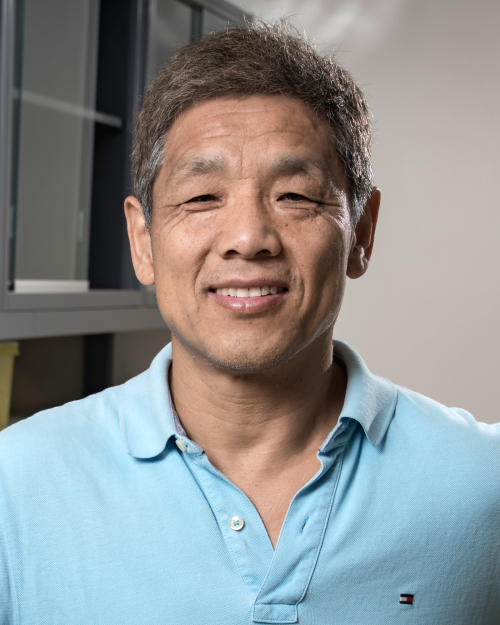 zhipeng.you [at] mcgill.ca (Zhipeng You)
zhipeng.you [at] mcgill.ca (Zhipeng You)
Associé de recherche
"The Neuro is one of the world’s best institutions for research. The inclusion, diversity, fairness, respect, and teamwork make me happy to work here."
"Neuro是世界上最好的研究机构之一,他的包容,多样性,公平,尊重和团队合作让我在这里工作愉快."
Regarder notre vidéo soulignant le travail de Zhipeng
Lisez la biographie de Zhipeng
Je travaille comme associée de recherche depuis 2016 à la PDMPP du Neuro et j'ai participé à la mise en place de la biobanque cellulaire. Ma principale responsabilité est de fournir diverses lignées cellulaires immortelles (lignées cellulaires d’iPSC et lignées cellulaires cancéreuses), dans lesquelles les gènes pertinents pour la maladie ont été modifiés avec l'outil d'édition de gènes CRISPR-Cas9. Parallèlement, je génère des lignées cellulaires d’iPSC de patients et d'individus sains pour la biobanque cellulaire en utilisant des méthodes de reprogrammation d’iPSC.
Publications sélectionnées
- You Z, Al Kindi H, Abdul-Karim A, Barrette PO, Schwertani A. Blocking the urotensin II receptor pathway ameliorates the metabolic syndrome and improves cardiac function in obese mice. FASEB J. 2014 Mar;28(3):1210-20
- You Z, Liao M, Zhang H, Yang H, Pan X, Houghton JE, Sui SF, Tai PC. Phospholipids induce conformational changes of SecA to form membrane-specific domains: AFM structures and implication on protein-conducting channels. PLoS One. 2013 Aug 16;8
- You Z, Genest J Jr, Barrette PO, Hafiane A, Behm DJ, D'Orleans-Juste P, Schwertani AG. Genetic and pharmacological manipulation of urotensin II ameliorate the metabolic and atherosclerosis sequalae in mice. Arterioscler Thromb Vasc Biol. 2012 Aug;32(8)
- Armstrong GA, Liao M, You Z, Lissouba A, Chen BE, Drapeau P. Homology Directed Knockin of Point Mutations in the Zebrafish tardbp and fus Genes in ALS Using the CRISPR/Cas9 System. PLoS One. 2016 Mar 1;11(3)
ÉTUDIANT.E.S/STAGIAIRES
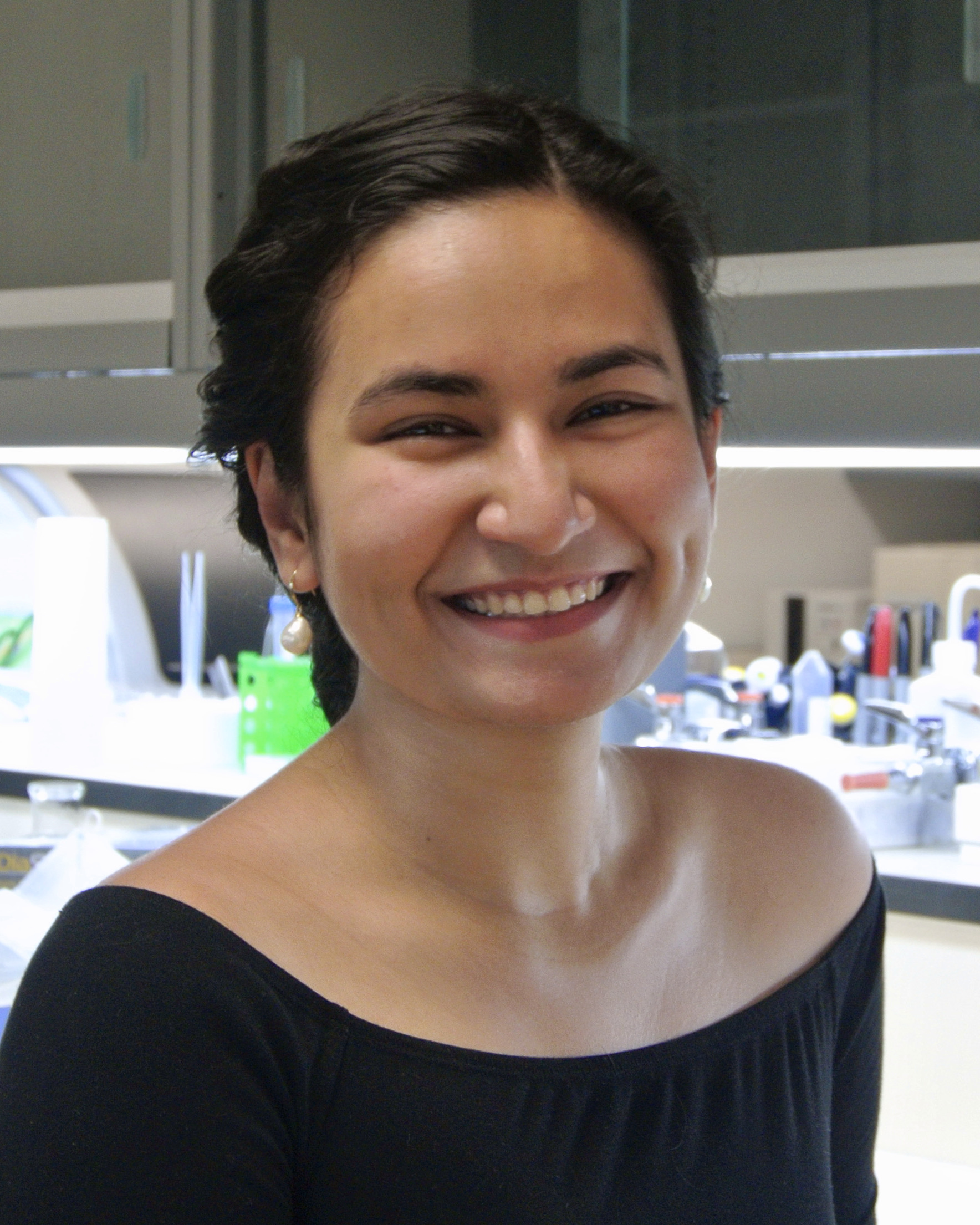 indra.roy [at] mail.mcgill.ca (Indra Roy)
indra.roy [at] mail.mcgill.ca (Indra Roy)
Étudiante au doctorat
"The Neuro is a multidisciplinary team with collaborations throughout Quebec and internationally. The EDDU has a world-class research infrastructure and consistently puts out high-quality research output, and I am proud to belong to the Neuro as an institution. I am inspired by my colleagues who come from a wide variety of backgrounds, both cultural and professional and provide many valuable perspectives according to their expertise."
"আমার Neuro-তে কাজ করতে ভাল লাগে, কারণ এখানে বিভিন্ন দক্ষতার মানুষের থেকে বিভিন্ন দৃষ্টিভঙ্গি পাওয়া যায়।."
Regardez la page LinkedIn et Research Gate d'Indra
Lisez la biographie d'Indra
J'ai un master conjoint en Neurosciences Translationnelles de la Charité Universitätsmedizin Berlin et de la Vrije Universiteit Amsterdam. Précédemment, j'ai également travaillé comme assistante de recherche au Centre for Prion and Protein Misfolding Diseases à Edmonton, Alberta. Plus tôt dans ma carrière, je m'intéressais principalement aux protéopathies dans les maladies neurodégénératives. Au cours de ma maîtrise, mon intérêt s'est élargi pour considérer la neuroimmunologie comme une autre pièce potentielle du puzzle neurodégénératif. Au cours de mon année de thèse, j'ai découvert les cellules souches pluripotentes induites (iPSC) et les organoïdes, et leur potentiel pour modéliser des maladies. Cela m'a amené au Neuro, où j'espère utiliser les iPSCs et les organoïdes comme outils pour développer des modèles de troubles neurodégénératifs afin d'étudier les mécanismes pathologiques et d'identifier de nouvelles cibles thérapeutiques. Je suis investie dans la science ouverte parce qu’une communication ouverte avec des chercheurs du monde entier peut conduire à des avancées dans la recherche. Espérons que cela se traduira par des traitement efficaces et à une amélioration la qualité de vie des patients, de leurs proches et des soignants.
MEMBRES AFFILIÉ.E.S
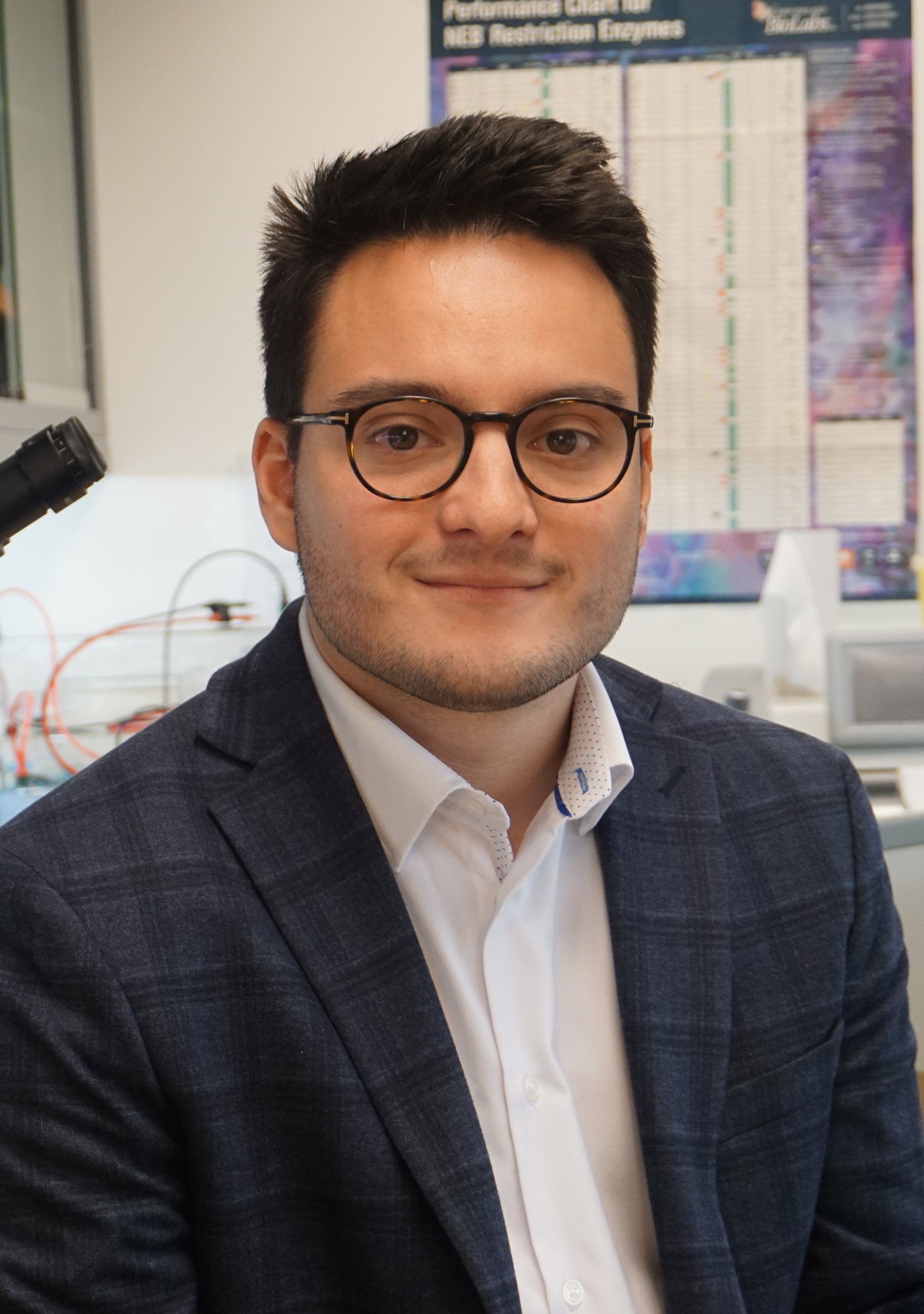 Nicolas Ferry
Nicolas Ferry
C-BIG Gestionnaire de projet
"The Neuro's worldwide influence and its involvement in major scientific discoveries over the decades have had a huge positive impact on my motivation to join in the adventure and ally myself with the researchers and clinicians who work there in harmony. I feel I'm being useful to society by trying to accelerate research, via Open Science, to develop new treatments for neurological disorders and directly benefit patients and their families."
"Le rayonnement mondial du Neuro et son implication dans des découvertes scientifiques majeures depuis des décennies ont eu un énorme impact positif sur ma motivation à participer à l’aventure et à m’allier aux chercheurs et cliniciens qui y travaillent en harmonie. J’ai l’impression d’être utile à la société en tentant d’accélérer la recherche, via la Science Ouverte, pour déveloper de nouveaux traitements des troubles neurologiques et bénéficier directement aux patients et à leur entourage."
Regardez la page LinkedIn de Nicolas
Lisez la biographie de Nicolas
Titulaire d’une maîtrise en sciences intitulée “Biobanking et Management de Données Complexes” de l’Université Côte d’Azur en France, Nicolas a toujours été fasciné par la recherche et les neurosciences. L’envie de mettre en application ses compétences en biobanking et de promouvoir la Science Ouverte l’ont amené à effectuer un stage au sein du C-BIG avant d’y devenir Assistant de Recherche en Janvier 2023. Nicolas est actuellement en charge des demandes d’accès aux échantillons ainsi qu’aux données de la biobanque, et responsable des multiples collaborations avec les différents acteurs internes et externes au Neuro.
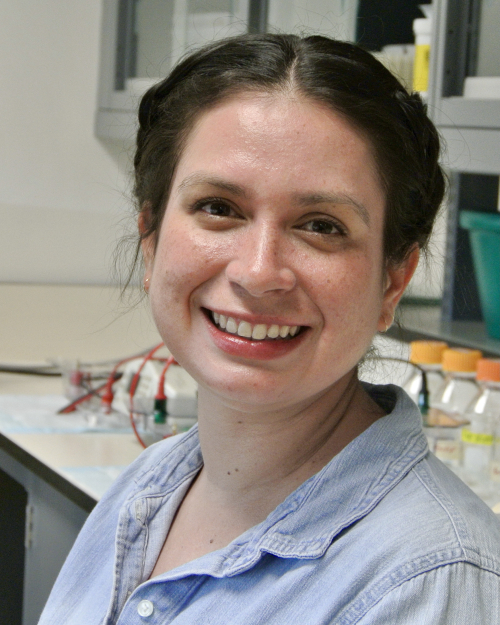 vanessa.omana [at] mcgill.ca (Vanessa Omana)
vanessa.omana [at] mcgill.ca (Vanessa Omana)
Assistante de recherche
"What I love about research is the process of working towards solving a problem and learning unexpected things along the way."
"Lo que me encanta de la investigacion es trabajar para resolver un problema y en el camino aprender cosas inesperadas."
Regardez la page LinkedIn et PubMed de Vanessa
Lisez la biographie de Vanessa
Mon parcours scientifique a commencé par l'étude des lésions de la moelle épinière et des traitements par anticorps pour l'inflammation systémique. J'ai travaillé comme technicienne de recherche à l'Institut de recherche Krembil, University Health Network, à Toronto pendant 8 ans, me concentrant sur l'évaluation de nouveaux traitements et diagnostiques pour la maladie de Parkinson chez les rongeurs et les modèles de primates non humains. J'ai une Maîtrise en Immunologie de l'Université Queen's, où j'ai étudié les marqueurs prédictifs de l'état atopique dans le sang du cordon ombilical. J'ai rejoint l'équipe organoïdes de la PDMPP en mai 2021.
Publications sélectionnées
- Koprich JB, Johnston TH, Reyes G, Omana V, Brotchie JM. (2016). Towards a Non-Human Primate Model of Alpha-Synucleinopathy for Development of Therapeutics for Parkinson's Disease: Optimization of AAV1/2 Delivery Parameters to Drive Sustained Expression of Alpha Synuclein and Dopaminergic Degeneration in Macaque. PLoS One. 2016 Nov 30;11(11).
- Bao, F, Shultz, SR, Hepburn, JD, Omana, V, Weaver, LC, Cain, DP, Brown, A. (2012). A CD11d monoclonal antibody treatment reduces tissue injury and improves neurological outcome after fluid percussion brain injury in rats. J. Neurotrauma. 2012 Sep 20;29(14):2375-92.
- Bao, F, Omana, V, Brown, A, Weaver, LC. (2012). The systemic inflammatory response after spinal cord injury in the rat is decreased by alpha4beta1 integrin blockade. J. Neurotrauma. 2012 May 20;29(8):1626-37.
- Shultz, SR, Bao, F, Omana, V, Chiu, C, Brown, A, Cain, DP. (2012). Repeated mild lateral fluid percussion brain injury in the rat causes cumulative long-term behavioral impairments, neuroinflammation, and cortical loss in an animal model of repeated concussion. J. Neurotrauma. 2012 Jan 20;29(2):281-94.
- Bao, F, Brown, A, Dekaban, GA, Omana, V, Weaver, LC. (2011). CD11d integrin blockade reduces the systemic inflammatory response syndrome after spinal cord injury. Exp. Neurol. 2011 Oct;231(2):272-83.
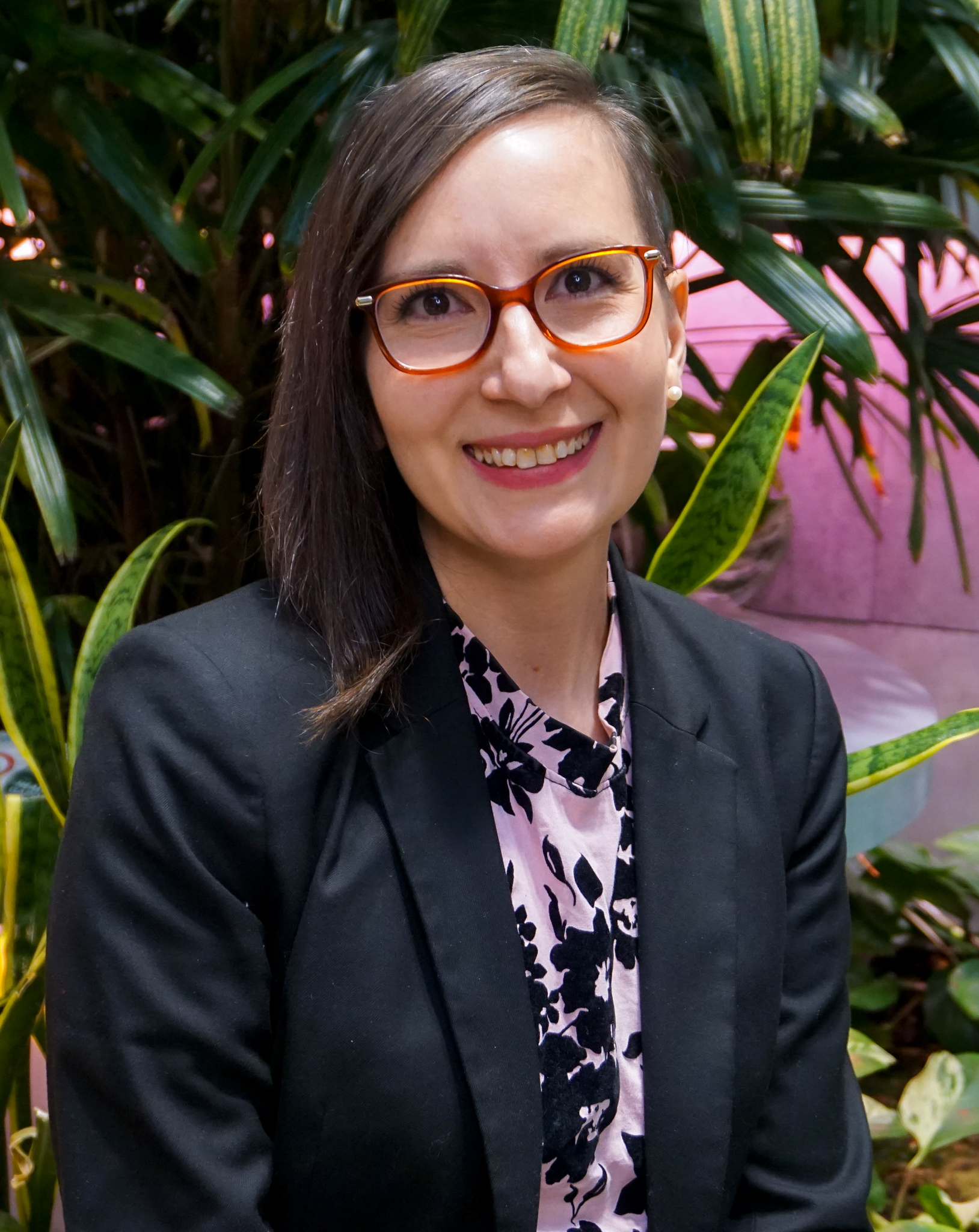 rhalena.thomas [at] mcgill.ca (Rhalena Thomas)
rhalena.thomas [at] mcgill.ca (Rhalena Thomas)
Associée de recherche
"To make progress in a world of ever-increasing scientific specialization, we need to increase our efforts towards open collaboration and the Neuro provides a stage for those collaborations to take place."
Regardez la page Github de Rhalena
Lisez la biographie de Rhalena
J'ai obtenu mon baccalauréat en Biologie Moléculaire et Génétique de l'Université de Guelph, Ontario, Canada en 2004. J'ai étudié la régulation de l'expression génique dans la levure pour mon projet spécialisé à l'Université de Guelph avec le Dr Joseph Yankulov. Après avoir voyagé en Asie et travaillé comme professeur d'anglais, j'ai déménagé à Montréal et j'ai commencé à poursuivre une maîtrise en Neurosciences à l'Université McGill, sous la supervision du Dr Philip Barker. J'ai ensuite transitionné au programme de doctorat que j’ai terminé en 2016. Ma thèse portait sur deux protéines, LGI1 et NgR1 et leurs fonctions dans le développement et la dégénérescence neuronale et leurs liens génétiques avec l'épilepsie et la schizophrénie. J'ai rejoint le labo du Dr Maurice Chacron au Département de Physiologie de McGill en tant que chercheure postdoctoral pour travailler sur les neurosciences systémiques en 2017, acquérant une expertise en analyse computationnelle. J'ai rejoint le groupe du Dr Edward Fon au Neuro en 2018 pour utiliser une combinaison d'analyse informatique des systèmes biologiques, de la génétique et de la signalisation cellulaire pour étudier la maladie de Parkinson. Je travaille actuellement sur l'analyse des profils d'expression génique de cellules individuelles à partir de modèles de tissus humains 3D ("mini-cerveaux") de la maladie de Parkinson.
Publications sélectionnées
- Thomas, RA.*, Maussion, G.*, Demirova, I., Gu, G., Cai, E., Chen, C. X., Abdian, N., Strauss, T., Kelaï, S., Nauleau-Javaudin, A., Beitel, L. K., Ramoz, N., Gorwood, P., Durcan, T. M. Auto-qPCR; a python-based web app for automated and reproducible analysis of qPCR data. Sci Rep 11, 21293 (2021). https://doi.org/10.1038/s41598-021-99727-6
- Mohamed NV, Sirois J, Ramamurthy J, Mathur M, Lepine P, Deneault E, Maussion G, Nicouleau M, Chen CX, Abdian N, Soubannier V, Cai, E, Nami, H., Thomas, RA, Beitel, LK, Dolt, K.S., Karamchandani, J, Kunath, K., Fon, EA, Durcan, TM. (2021) Midbrain organoids with an SNCA gene triplication model key features of synucleinopathy. BrainComm. Preprint available: https://www.biorxiv.org/content/10.1101/2021.04.12.439480v1
- Chen CX, Abdian N, Maussion G, Thomas RA, Demirova I, Cai E, Tabatabaei M, Beitel LK, Karamchandani J, Fon EA, Durcan TM.A Multistep Workflow to Evaluate Newly Generated iPSCs and Their Ability to Generate Different Cell Types. (2021) Methods Protocols.
- Thomas RA, Metzen MG, Chacron MJ. Weakly electric fish distinguish between envelope stimuli arising from different behavioral contexts. (2018) Journal of Experimental Biology.
- Thomas RA, Gibon J, Chen CX, Chierzi S, Soubannier VG, Baulac S, Séguéla P, Murai K, Barker PA. (2018) The Nogo receptor ligand LGI1 regulates synapse number and synaptic activity in hippocampal and cortical neurons. Eneuro.
ANCIENS MEMBRES
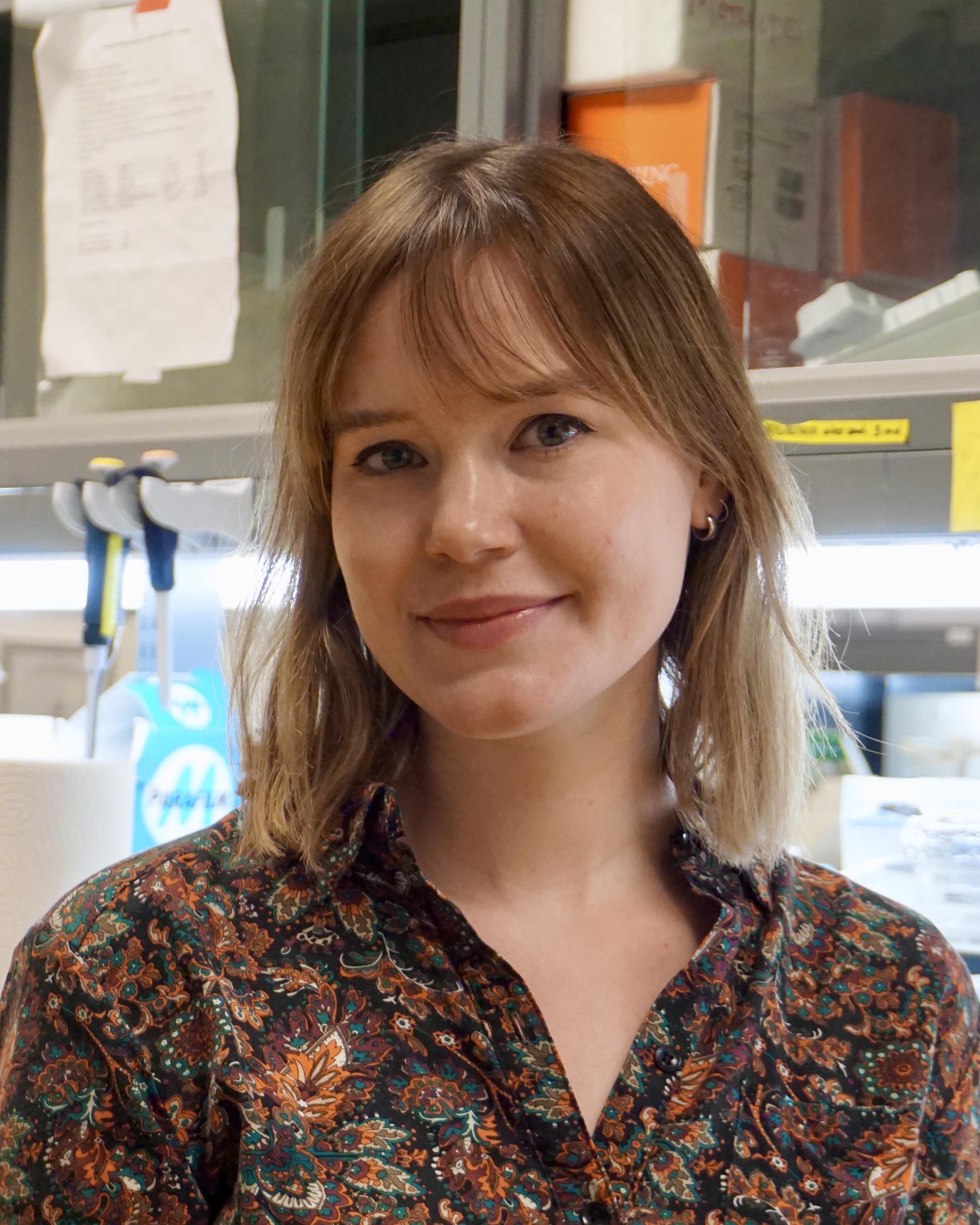 alexandra.chapleau [at] mail.mcgill.ca (Alexandra Chapleau)
alexandra.chapleau [at] mail.mcgill.ca (Alexandra Chapleau)
Étudiante au doctorat
"It is an incredible experience to witness the accelerating progression of neuroscience here at the EDDU. Working in such a collaborative environment has allowed me to improve and hone my skills as a researcher. Together, I believe we can make great strides in elucidating the mechanisms and developing treatments for neurodegenerative disorders."
"C'est une expérience incroyable d'observer la progression accélérée des neurosciences à l'EDDU. Travailler dans un environnement collaboratif a fait de moi un meilleur chercheuse. Ensemble, je crois que nous pouvons progresser dans l'élucidation des mécanismes et le développement de traitements pour les troubles neurodégénératifs."
Regardez la page Linkedin d'Alex
Lisez la biographie d'Alex
Depuis mon plus jeune âge, j'ai toujours eu un profond intérêt pour les neurosciences et la génétique. Ayant grandi dans une famille touchée par une maladie neurodégénérative rare, c'est l'ambition de toute une vie de faire des recherches sur les maladies orphelines et de mieux faire le pont entre le labo et le chevet du patient. Avant de commencer mon doctorat à McGill, j'ai obtenu un baccalauréat en biologie de l'Université Queen's. Mon projet de doctorat consiste à étudier la physiopathologie des leucodystrophies hypomyélinisantes à l'aide de modèles cellulaires élaborés à partir d’iPSC dérivés de patients.
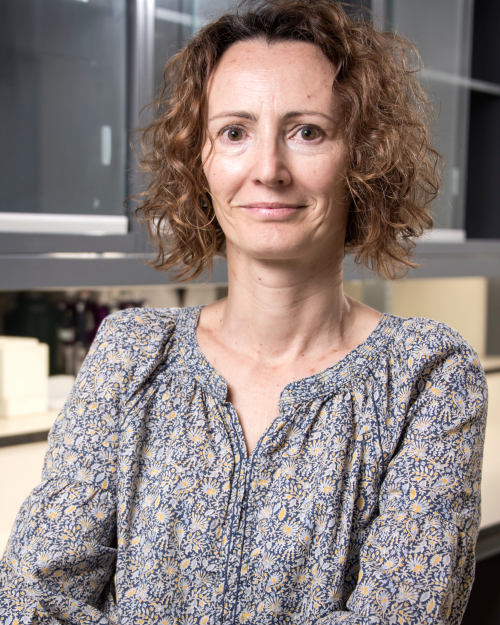 emmanuelle.nguyen-renou [at] mcgill.ca (Emmanuelle Nguyen-Renou)
emmanuelle.nguyen-renou [at] mcgill.ca (Emmanuelle Nguyen-Renou)
Assistante de Recherche
"Working at The Neuro is a privilege because we work directly with biological material coming from healthy or sick patients."
"Travailler au Neuro est un privilege car nous travaillons directement avec du materiel biologique provenant des patients sains ou malades."
Lisez la biographie d'Emmanuelle
J’ai une maitrise en Biologie cellulaire (Immunlogie) et pharmacolgie du vieillissement. J’ai travaillé 10 ans en industrie pharmaceutique (SANOFI) à Paris dans le service des Maladies Neurodégéné ratives, ou j’ai étudié l’ischémie et le trauma cérébral chez le rat, puis dans le service Oncologie ou j’ai travaillé sur la télomerase et le vieillissement cellulaire. J’ai ensuite travaillé dans le domaine public (INSERM) à Marseille, sur la maladie de Huntington pendant 1 an. J’ai quitté la France pour Singapour en travaillant 5 ans au MBI (Mechanobiology institute) dans le service de Nanomédecine Régé nérative puis dans le service d’Adhésion Cellulaire et Mecanique pour étudier la dynamique des jonctions épitheliales cellules-cellules. En Mars 2017, j’ai rejoint le Neuro a Montreal, Canada, pour étudier les maladies neurodégénératives et spé cifiquement la maladie de Parkinson.
Publications sélectionnées
- Yian Yang, Emmanuelle Nguyen, Gautham Hari Narayana Sankara Narayana, Melina Heuzé, René-Marc Mège, Benoit Ladoux, Michael P. Sheetz (2021) Local Contractions Regulate E-Cadherin Adhesions, Rigidity Sensing and Epithelial Cell Sorting BioRxiv. Preprint available: https://doi.org/10.1101/318642
- Plestant C, Strale PO, Seddiki R, Nguyen E, Ladoux B, Mège RM. (2014) Adhesive interactions of N-cadherin limit the recruitment of microtubules to cell-cell contacts through organization of actomyosin. J Cell Sci.
- Riou J.F., Guittat L., Mailliet P., Laoui A., Renou E., Petitgenet O., Megrin-Chanet F., Helene C. and Mergny J.L. (2002) Cell senescence and telomere shortening induced by a new series of G-quadruplex DNA ligands. PNAS.
- Wahl F., Renou E., Mary V., and Stutzmann J-M. (1997) Riluzole reduces brain lesions and improves neurological function in rats after a traumatic brain injury. Brain Res.
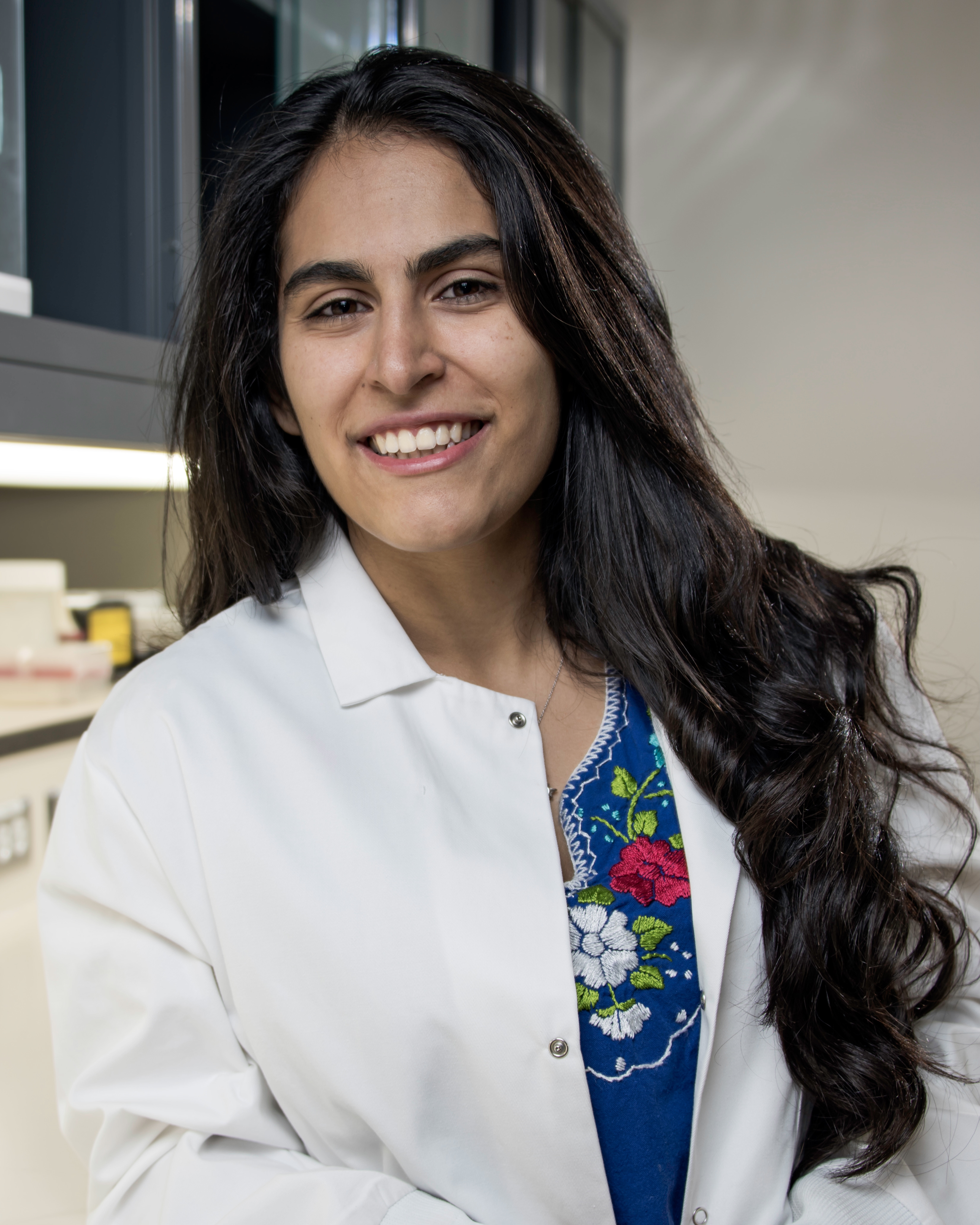 majocamo96 [at] gmail.com (María José Castellanos Montiel)
majocamo96 [at] gmail.com (María José Castellanos Montiel)
Étudiante au doctorat
"My fascination for the human brain is what inspires me to work at The Neuro. At The Neuro, great minds come together to do research."
"Mi fascinación por el cerebro es lo que me inspira a trabajar en el Neuro. En el Instituto Neurologico de Montreal, se juntan grandes mentes para hacer investigación."
Regarder notre vidéo soulignant le travail de Mariá
Lisez la biographie de María
Je suis née et j'ai grandi à Mexico, où j'ai terminé une majeure en Biologie à l'Université nationale autonome du Mexique (UNAM). Au cours de mes études de premier cycle, j'ai eu l'opportunité de faire un stage (suffisamment excitant pour me faire rester deux ans) dans un laboratoire spécialisé sur les cellules souches. Le projet sur lequel je travaillais nécessitait l'utilisation de cellules souches pour modéliser la jonction des neurones musculaires et moteurs, les acteurs clés impliqués dans le mouvement de notre corps. D'aussi loin que je me souvienne, j'ai toujours aimé le sport. Pour cette raison, j'ai toujours été fasciné par les processus qui nous permettent de courir, de nager ou de frapper une balle. Je suis venue à Montréal pour commencer mes études supérieures et j'ai actuellement le grand plaisir d'étudier les motoneurones et le muscle. Je suis heureuse de savoir que je peux contribuer à faire avancer les connaissances pour aider les personnes à mobilité réduite.
Publications sélectionnées
- Castellanos-Montiel MJ, Chaineau M, Franco-Flores AK, Haghi G, Carrillo-Valenzuela D, Reintsch WE, Chen CX-Q, Durcan TM. An optimized workflow to generate and characterize iPSC-derived motor neuron (MN) spheroids. Cells. 2023;12, 545.
- Lépine S, Castellanos-Montiel MJ, Durcan TM. TDP-43 dysregulation and neuromuscular junction disruption in amyotrophic lateral sclerosis. Transl Neurodegener. 2022;11(1):56.
- Deneault E, Chaineau M, Nicouleau M, Castellanos Montiel MJ, Franco Flores AK, Haghi G, Chen CX, Abdian N, Shlaifer I, Beitel LK, Durcan TM. A streamlined CRISPR workflow to introduce mutations and generate isogenic iPSCs for modeling amyotrophic lateral sclerosis. Methods. 2022;203:297-310.
- Castellanos-Montiel MJ, Velasco I, Escobedo-Avila I. Modeling the neuromuscular junction in vitro: an approach to study neuromuscular junction disorders. Ann N Y Acad Sci. 2021;1488(1):3-15.
- Castellanos-Montiel MJ, Chaineau M, Durcan TM. The Neglected Genes of ALS: Cytoskeletal Dynamics Impact Synaptic Degeneration in ALS. Frontiers in Cellular Neuroscience. 2020;14(380).
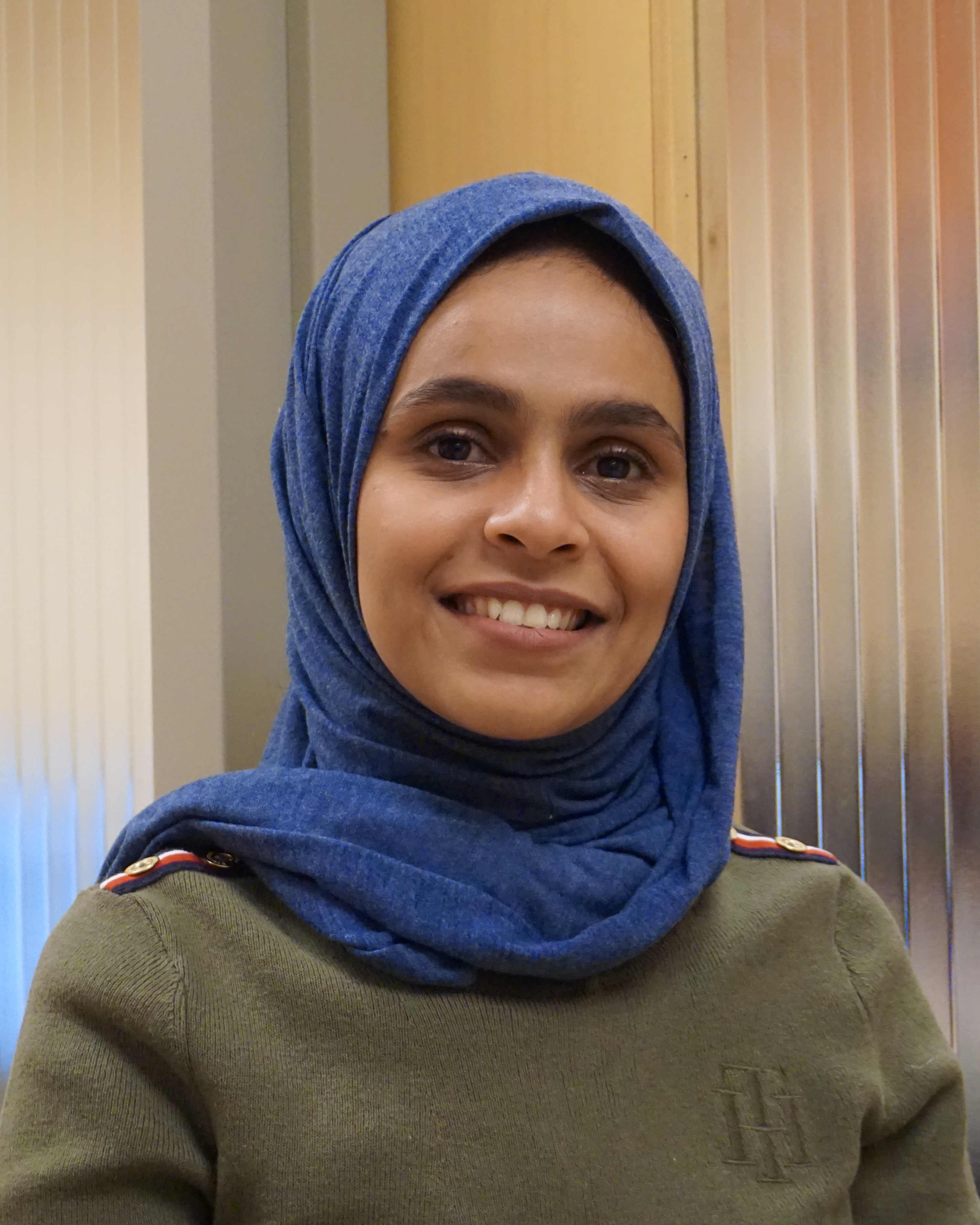 Aeshah Alluli
Aeshah Alluli
Assistante de recherche
"Understanding mindsets is a window into exploring novel paths of neurodegenerative disorders, which might help us discover therapeutic reliefs for patients."
"يعد فهم العقليات نافذة لاستكشاف مسارات جديدة للاضطرابات التنكسية العصبية، والتي قد تساعدنا في اكتشاف وسائل الراحة العلاجية للمرضى."
Regardez la page LinkedIn d'Aeshah
Lisez la biographie d'Aeshah
J'ai obtenu mon diplôme de premier cycle en technologie de laboratoire médical de l'Université de Jazan chez moi en Arabie Saoudite en 2015. Après mon baccalauréat, j'ai obtenu une bourse du ministère de l'Éducation pour étudier à l'étranger et terminer mon diplôme d'études supérieures. Je suis venue au Canada en 2016 pour suivre d'abord des cours d'anglais qui m'aideraient dans mon aventure aux études supérieures. Je suis superMaman pour un adorable fils (Rakan). Il a neuf ans et m'a accompagné durant mon aventure au Canada. J'ai récemment obtenu ma maîtrise au Département de pathologie. Je suis si heureuse d'être membre de l'Université McGill, en particulier du Neuro. Mon objectif est d'en savoir plus sur les domaines de recherche les plus récents car cela m'aidera beaucoup dans ma future carrière.
 lenore.beitel [at] mcgill.ca (Lenore K. Beitel)
lenore.beitel [at] mcgill.ca (Lenore K. Beitel)
Project Manager
"It’s great working with bright, motivated people who use state-of-the-art scientific techniques and equipment to understand human neurological diseases, with the goal of discovering treatments for these diseases."
Lenore's work with the EDDU benefits patients because by "starting with patients’ blood cells, we can make different types of human brain cells, such as those damaged by Parkinson’s disease (PD) or ALS (Lou Gehrig’s disease). We use these cell models to identify compounds (drugs) that could lead to new treatments for these neurological diseases."
View Lenore's PubMed.
Read Lenore's biography
Originally from Calgary, Alberta, I came to McGill to study science . . . and made Montréal my home. With both a B.Sc. (Honours) and Ph.D. in Biochemistry from McGill, I learned molecular biology and cell culture techniques along the way. As a Post-doctoral Fellow and Research Scientist at the Lady Davis Institute (Jewish General Hospital), I carried out research on the structure, function and genetics of the androgen receptor. Interestingly, mutations in the androgen receptor protein can lead to a neurodegenerative disease called spinal bulbar muscular atrophy (SBMA or Kennedy’s disease), cause androgen insensitivity syndrome (AIS), and are associated with prostate cancer. I believe science has a life cycle: we do the research, then write the papers, to get the funding, to do the research . . . Since joining the NeuroEDDU in 2017, my main job is to help my colleagues write and edit applications for funding and articles for publication. The Open Science policy at The Neuro means that the methods and research results published by the Neuro EDDU will be available for all. Fun facts: I enjoy decorating cakes, photographing flowers and travelling.
Selected publications
- X-Q Chen, C., Deneault, E., Abdian, N., You, Z., Sirois, J., Nicouleau, M., Shlaifer, I., Villegas, L., Boivin, M. N., Gaborieau, L., Karamchandani, J., Beitel, L. K., Fon, E. A., & Durcan, T. M. (2022). Generation of patient-derived pluripotent stem cell-lines and CRISPR modified isogenic controls with mutations in the Parkinson's associated GBA gene. Stem cell research, 64, 102919. https://doi.org/10.1016/j.scr.2022.102919
- Chen, C. X., Abdian, N., Maussion, G., Thomas, R. A., Demirova, I., Cai, E., Tabatabaei, M., Beitel, L. K., Karamchandani, J., Fon, E. A., & Durcan, T. M. (2021). A Multistep Workflow to Evaluate Newly Generated iPSCs and Their Ability to Generate Different Cell Types. Methods and protocols, 4(3), 50. https://doi.org/10.3390/mps4030050
- Mohamed, N. V., Larroquette, F., Beitel, L. K., Fon, E. A., & Durcan, T. M. (2019). One Step Into the Future: New iPSC Tools to Advance Research in Parkinson's Disease and Neurological Disorders. Journal of Parkinson's disease, 9(2), 265–281. https://doi.org/10.3233/JPD-181515
- Beitel, L. K., Alvarado, C., Mokhtar, S., Paliouras, M., & Trifiro, M. (2013). Mechanisms mediating spinal and bulbar muscular atrophy: investigations into polyglutamine-expanded androgen receptor function and dysfunction. Frontiers in neurology, 4, 53. https://doi.org/10.3389/fneur.2013.00053
- Gottlieb, B., Beitel, L. K., Nadarajah, A., Paliouras, M., & Trifiro, M. (2012). The androgen receptor gene mutations database: 2012 update. Human mutation, 33(5), 887–894. https://doi.org/10.1002/humu.22046
- Beitel, L. K., Elhaji, Y. A., Lumbroso, R., Wing, S. S., Panet-Raymond, V., Gottlieb, B., Pinsky, L., & Trifiro, M. A. (2002). Cloning and characterization of an androgen receptor N-terminal-interacting protein with ubiquitin-protein ligase activity. Journal of molecular endocrinology, 29(1), 41–60. https://doi.org/10.1677/jme.0.0290041
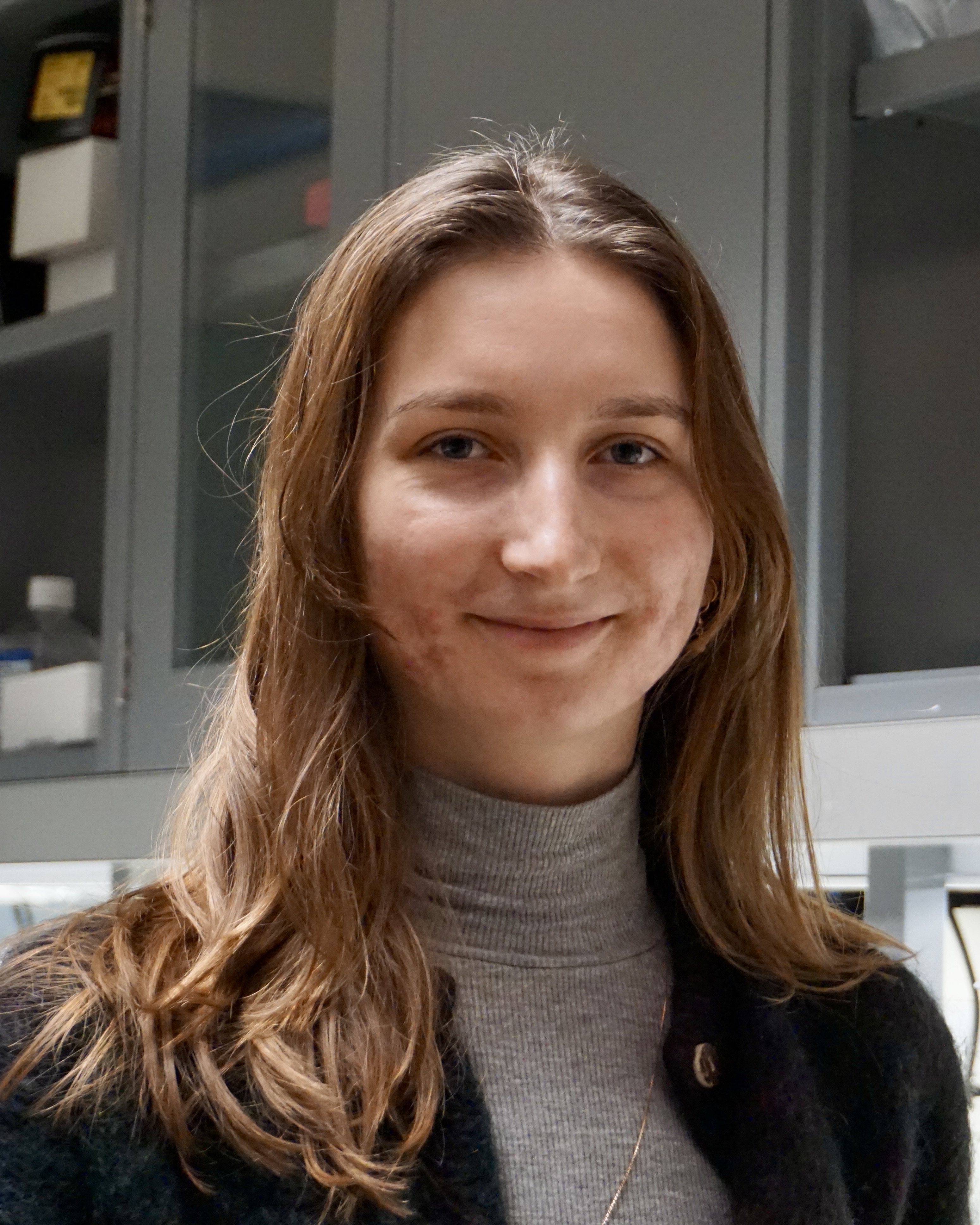 gabriela.blaszczyk [at] mail.mcgill.ca (Gabriela Blaszczyk)
gabriela.blaszczyk [at] mail.mcgill.ca (Gabriela Blaszczyk)
Étudiante au doctorat
"I believe that it is highly important to continue developing disease models and translatable tools to accelerate disease understanding and treatment development. Here at the Neuro, we have access to world-class knowledge and state of the art technology and techniques which creates a perfect environment for this goal."
Regardez la page LinkedIn de Gabriela
Lisez la biographie de Gabriela
Je viens de Toronto, en Ontario, et j'ai terminé mon baccalauréat en Sciences ici à McGill en Immunologie. J'ai toujours été intéressé par la recherche translationnelle et la modélisation des maladies. J'ai commencé mon projet avec la PDMPP à l'été 2021 en tant qu'étudiante de premier cycle, en me concentrant sur la glie et la façon dont elle est affectée par les maladies auto-immunes telles que la sclérose en plaques (SP). J'ai également eu l'opportunité de travailler aux côtés d'experts en modélisation de maladies sur le développement de protocoles améliorés pour la génération d’oligodendrocytes à partir d’IPSC. En septembre 2022, j'ai décidé de continuer à travailler sur ce projet pour ma Maîtrise tout en apprenant de nouvelles techniques de pointe et tout ce qu'il y a à savoir sur les glias, ces cellules sous-représentées.
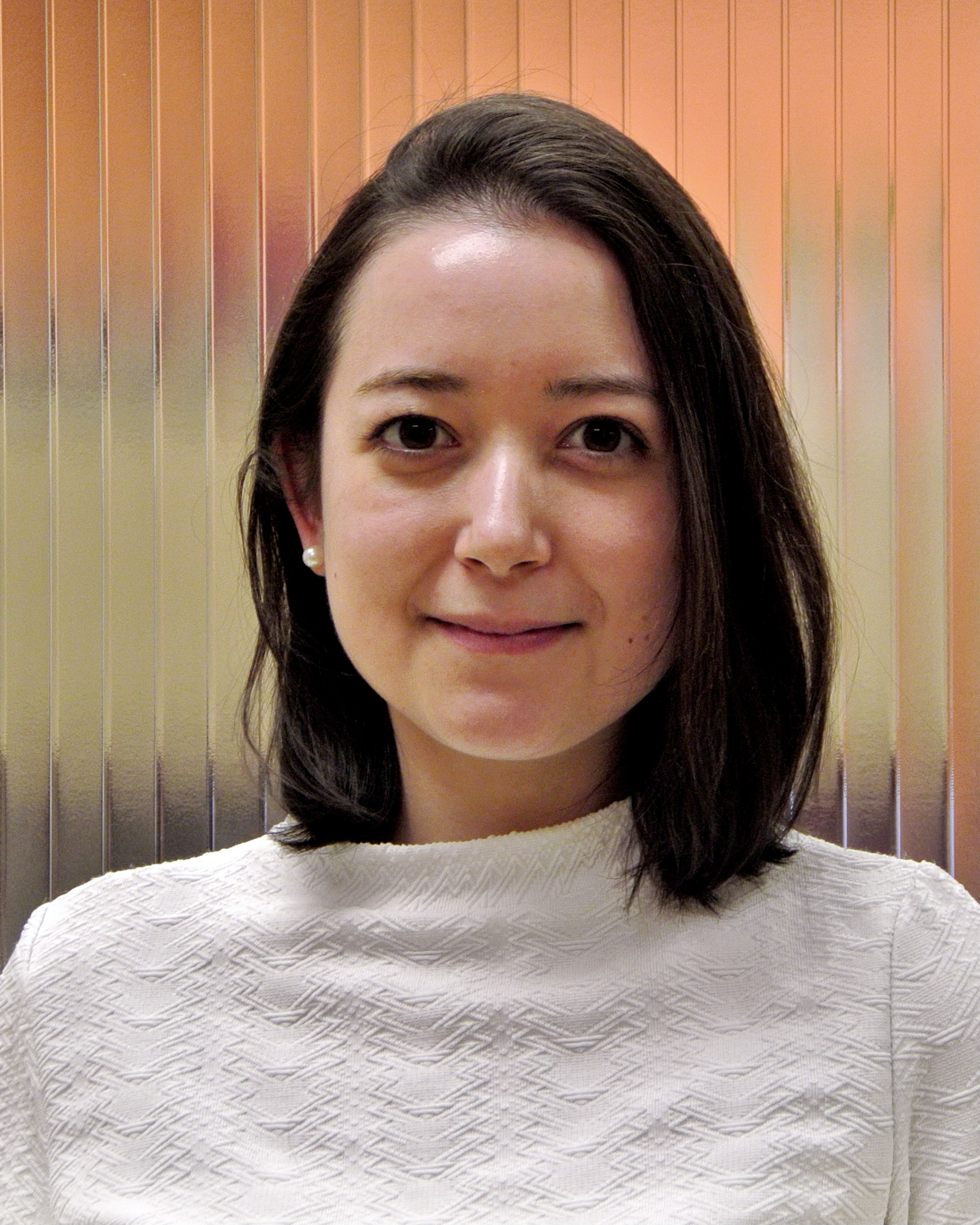 marie-france.dorion [at] mail.mcgill.ca (Marie-France Dorion)
marie-france.dorion [at] mail.mcgill.ca (Marie-France Dorion)
Étudiante au doctorat
"The Neuro promotes interlaboratory collaborations and is an excellent place for graduate students like myself to grow."
"Le Neuro est un lieu qui promeut la collaboration scientifique et qui offre un excellent soutien à l’apprentissage. Je me vois progresser à chaque jour."
Regardez la page LinkedIn de Marie-France
Regarder notre vidéo soulignant le travail de Marie-France
Lisez la biographie de Marie-France
Après avoir complété une formation de maîtrise en Science Pharmaceutique à l’Université de Montréal, j’ai joint la plateforme de découverte de médicaments en phase précoce et l’unité de neuroimmunologie du Neuro en 2019 en tant qu’étudiante au doctorat. Sous la supervision des Drs. Thomas Durcan et Luke Healy, je travaille sur le rôle des microglies dans la maladie de Parkinson. En employant des iPS-microglies, j’espère pouvoir contribuer à mieux comprendre l’implication de la neuroinflammation dans la maladie de Parkinson et à découvrir des cibles thérapeutiques.
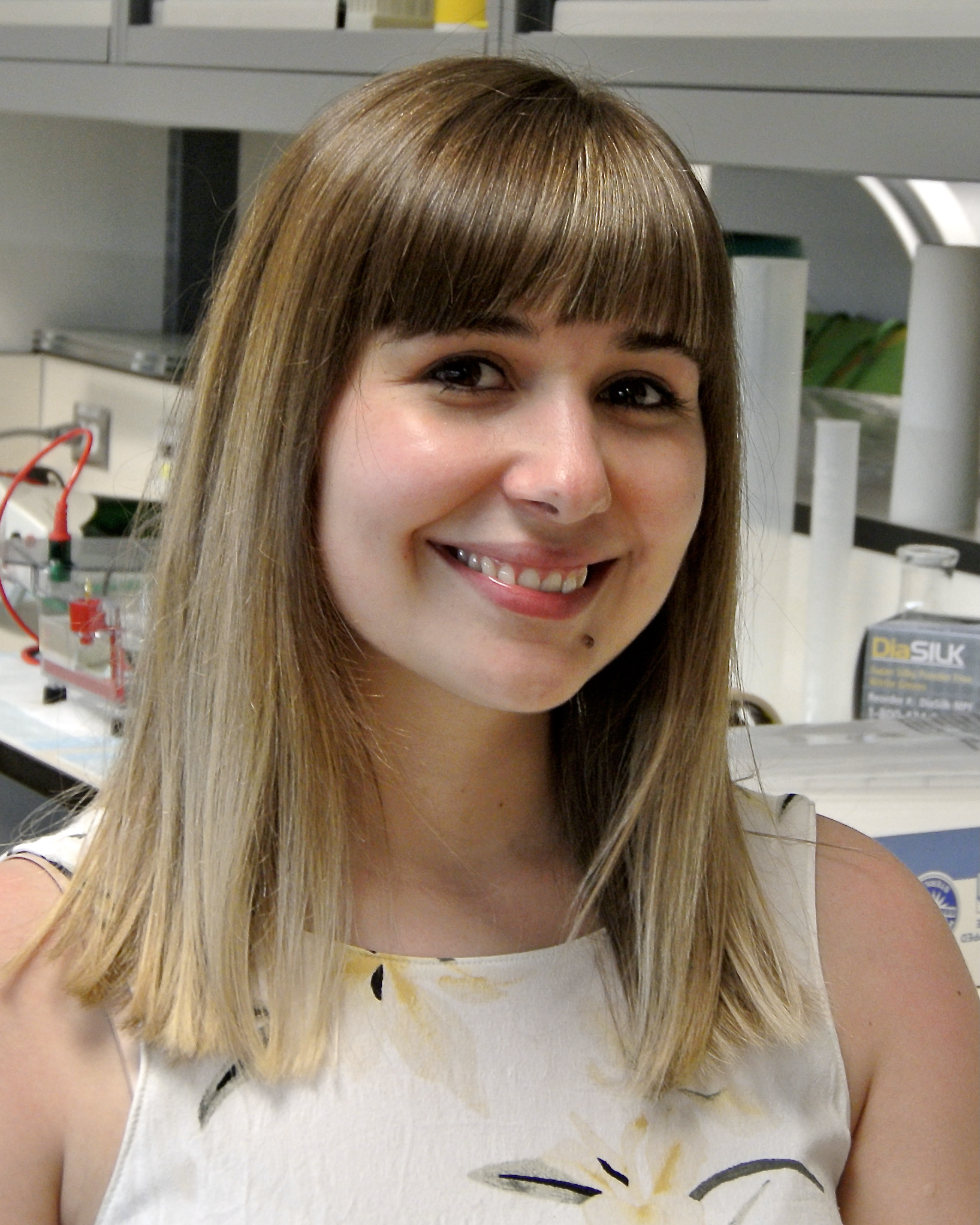 sarah.lepine2 [at] mail.mcgill.ca (Sarah Lépine)
sarah.lepine2 [at] mail.mcgill.ca (Sarah Lépine)
Étudiante au doctorat
"Important questions remain unresolved in the field of neuroscience, and filling these knowledge gaps could significantly improve medical practice and patient care. At The Neuro, I feel my work could make a real difference in the lives of patients."
"De grandes questions demeurent non résolues dans le domaine des neurosciences et combler ces lacunes pourra significativement améliorer la pratique médicale. Au Neuro, je sens que mon travail pourrait faire une réelle différence dans la vie des patients."
Regardez la page LinkedIn de Sarah
Regarder notre vidéo soulignant le travail de Sarah
Lisez la biographie de Sarah
Depuis l’école secondaire, je rêve d’une carrière en recherche. J'ai débuté ma formation dans le programme de techniques de laboratoire du Cégep de Saint-Hyacinthe. J'ai ensuite complété un baccalauréat en biologie cellulaire et moléculaire à l'Université de Sherbrooke où j'ai eu l'opportunité d'explorer mes intérêts de recherche lors de plusieurs stages. J'étudie actuellement la médecine et la neuroscience dans le programme conjoint MDCM & PhD de l’Université McGill pour devenir clinicienne-chercheuse. J'ai d'abord rejoint la PDMPP du Neuro en tant que stagiaire et je complète maintenant mon PhD sous la supervision de Dr Thomas Durcan. Mon projet de doctorat vise à mieux comprendre les processus cellulaires qui sont altérés dans les motoneurones exprimant des mutations associées à la sclérose latérale amyotrophique (SLA).
Publications sélectionnées
- Michell-Robinson, M.A., Lépine, S. (2021, January 14). Reader Response: Association of Age at Onset and First Symptoms with Disease Progression in Patients with Metachromatic Leukodystrophy [Letter to the Editor]. Neurology, 96(2):e255-e266. Comment URL: https://n.neurology.org/content/96/2/e255
- Hintermayer, M.*, Lépine, S.*, Chen, O.* (2021) Chapter 5 : Standardized Testing – The CASPer. In M.J. Eisenberg & A.L. Cox (Eds.), The Essential MD-PhD Guide (1st Edition, pp.33-39). McGraw Hill.
- M'Callum, M., Raggi, C., Lépine, S., Legault, L., McGraw, S., & Paganelli, M. (2018). Improving the quality of stem cell-derived hepatocytes for cell therapy: Role of pluripotency state in determining lineage commitment of human induced pluripotent stem cells. Cytotherapy, 20(5), S112. Doi: 10.1016/j.jcyt.2018.02.333
- Shrednick, M., Usongo, V., Lépine, S., Janvier, X., Archambault, M., & Gentilini, E. (2018). Characterization of Staphylococcus aureus strains isolated from mastitis bovine milk in Argentina, J Dairy Res, 85(1):57-63. Doi:10.1017/S0022029917000851
- Raggi, C., Mangahas, C., M’Callum, M., Raad, S., Lépine, S., Pham, T.Q., & Paganelli, M. (2017). Induced pluripotent stem cells (iPSC) from small volume peripheral blood samples for in vitro modeling and cell therapy of pediatric liver diseases. Dig Liver Dis, 49(4):e251-e252. doi:10.1016/j.dld.2017.09.026
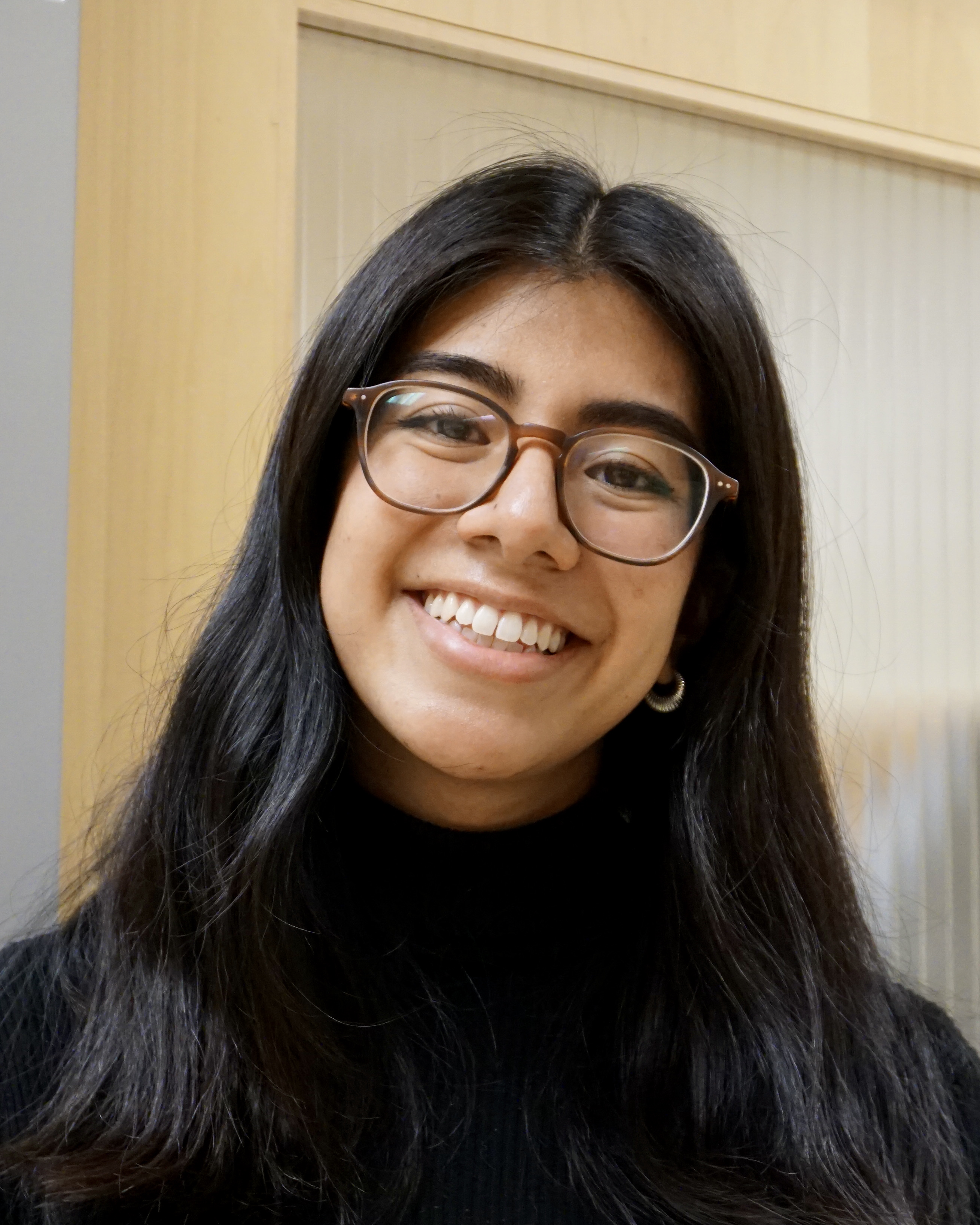 dulce.carrillovalenzuela [at] mcgill.ca (Dulce Carrillo Valenzuela)
dulce.carrillovalenzuela [at] mcgill.ca (Dulce Carrillo Valenzuela)
Research Assistant
"Being here gives me the opportunity not only of learning and getting professional development, but also the possibility that the work that I do has a positive impact in the lives of patients and in the advancement of science. "
"El cerebro siempre me ha parecido impresionante. Decidí venir al Neuro ya que quería aprender más sobre los procesos que ocurren en el cerebro y las enfermedades que lo afectan. Estar aquí me da la oportunidad no solo de aprender y desarrollarme como profesional, sino también la posibilidad de que el trabajo que haga tenga un impacto positivo en la vida de los pacientes y en el avance de la ciencia. Además, aquí estoy rodeada de personas con mucho talento que me inspiran a dar lo mejor de mí."
View Dulce's Linkedin
Read Dulce's biography
I am from Mexico and arrived in Canada a few years ago to do my bachelor´s degree at McGill, majoring in Biochemistry. My journey at the EDDU started during my last summer as an undergraduate. I was in the ALS team helping with the projects being developed using motor neurons. This was my first real life research experience, and I enjoyed it so much that I decided to stay once the new semester started and work on my own project. Now I just graduated and was given the opportunity to continue here at the EDDU, this time as part of the Neurodevelopment team. I am excited to continue learning from this amazing team and look forward to what the future will bring.
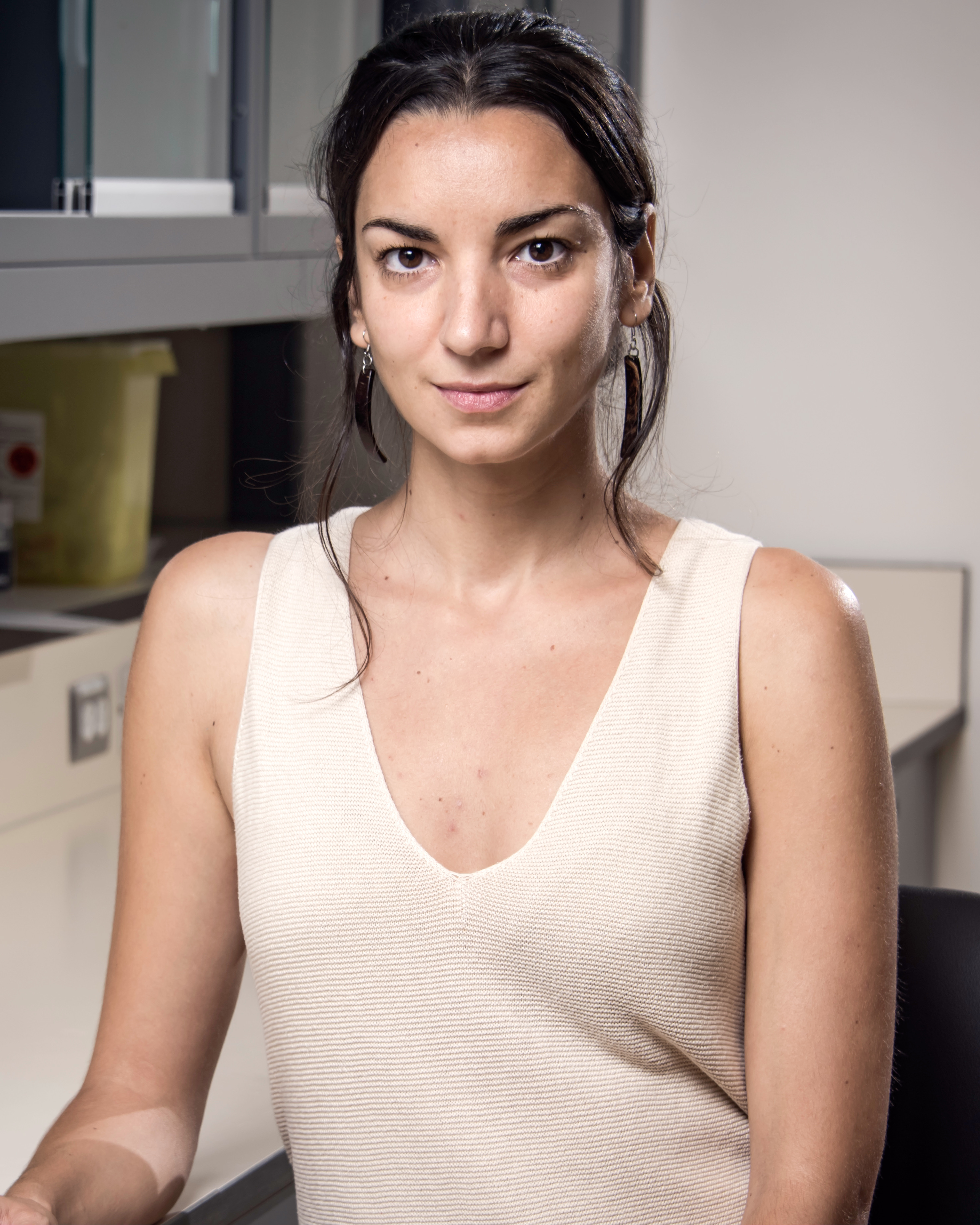 maria.lacalleaurioles [at] mcgill.ca (Maria La Calle Aurioles)
maria.lacalleaurioles [at] mcgill.ca (Maria La Calle Aurioles)
Research Associate
"The Neuro is a benchmark institution in the field of neuroimaging and neurodegenerative diseases. I wanted to discover the environment that has inspired so much creativity and high-quality science."
"The Neuro es una institución de referencia en el campo de la neuroimagen y enfermedades neurodegenerativas. Quería descubrir el ambiente que ha inspirado tanta creatividad y ciencia de alta calidad."
Read Maria's biography
I am a research associate in the Neurodegenerative Disorders Group (Neural Survival) at the Montreal Neurological Institute, McGill University. I received my BSc from Universidad Autónoma de Madrid and my PhD in Biomedical Sciences from Universidad Complutense de Madrid, in collaboration with the Biomedical Imaging and Instrumentation Group (BiiG), Madrid, Spain. In 2014, I joined the Neuro as a postdoctoral fellow in Dr. Hamel’s Laboratory of Cerebrovascular Research and, in 2019, I became part of Dr. Durcan’s lab and member of the Neuro's EDDU. During my early career, I focused my work on the vascular and disconnection hypotheses in Alzheimer’s disease trying to comprehend the role of vascular dysfunction and white matter inflammation in this multifaceted disease, working on clinical and preclinical research projects. Now I am involved in the fascinating field of iPSCs and “mini brains”, hoping to find some targetable mechanisms for therapies in Parkinson’s disease.
Selected publications
- Lecrux, C., Sandoe, C. H., Neupane, S., Kropf, P., Toussay, X., Tong, X. K., Lacalle-Aurioles, M., Shmuel, A., & Hamel, E. (2017). Impact of Altered Cholinergic Tones on the Neurovascular Coupling Response to Whisker Stimulation. The Journal of neuroscience: the official journal of the Society for Neuroscience, 37(6), 1518–1531. https://doi.org/10.1523/JNEUROSCI.1784-16.2016
- Lacalle-Aurioles, M., Navas-Sánchez, F. J., Alemán-Gómez, Y., Olazarán, J., Guzmán-De-Villoria, J. A., Cruz-Orduña, I., Mateos-Pérez, J. M., & Desco, M. (2016). The Disconnection Hypothesis in Alzheimer's Disease Studied Through Multimodal Magnetic Resonance Imaging: Structural, Perfusion, and Diffusion Tensor Imaging. Journal of Alzheimer's disease : JAD, 50(4), 1051–1064. https://doi.org/10.3233/JAD-150288
- Lacalle-Aurioles, M., Mateos-Pérez, J. M., Guzmán-De-Villoria, J. A., Olazarán, J., Cruz-Orduña, I., Alemán-Gómez, Y., Martino, M. E., & Desco, M. (2014). Cerebral blood flow is an earlier indicator of perfusion abnormalities than cerebral blood volume in Alzheimer's disease. Journal of cerebral blood flow and metabolism: official journal of the International Society of Cerebral Blood Flow and Metabolism, 34(4), 654–659. https://doi.org/10.1038/jcbfm.2013.241
- Lacalle-Aurioles, M., Alemán-Gómez, Y., Guzmán-De-Villoria, J. A., Cruz-Orduña, I., Olazarán, J., Mateos-Pérez, J. M., Martino, M. E., & Desco, M. (2013). Is the cerebellum the optimal reference region for intensity normalization of perfusion MR studies in early Alzheimer's disease?. PloS one, 8(12), e81548. https://doi.org/10.1371/journal.pone.0081548
- Martino, M. E., de Villoria, J. G., Lacalle-Aurioles, M., Olazarán, J., Cruz, I., Navarro, E., García-Vázquez, V., Carreras, J. L., & Desco, M. (2013). Comparison of different methods of spatial normalization of FDG-PET brain images in the voxel-wise analysis of MCI patients and controls. Annals of nuclear medicine, 27(7), 600–609. https://doi.org/10.1007/s12149-013-0723-7
 Narges.fatemiyan [at] mcgill.ca (Narges Fatemiyan)
Narges.fatemiyan [at] mcgill.ca (Narges Fatemiyan)
Assistante de Recherche
"Thinking about novel ideas and discovering new ways of treatment in the field of Neuroscience using stem cells had been always one of my greatest passions. I am proud to work at one the most prestigious neuroscience centers in the world where I have been given the opportunity to fulfill my long term goals in this field of research.""
"فکر کردن در مورد ایده های جدید و کشف راه های جدید درمان در زمینه نوروساینس با استفاده از سلول های بنیادی همیشه یکی از بزرگترین علایق من بوده است. من مفتخرم که در یکی از معتبرترین مراکز علوم اعصاب در جهان کار می کنم، جایی که به من فرصت داده شده است تا اهداف بلندمدت خود را در این زمینه تحقیقاتی برآورده کنم"
Regardez la page LinkedIn de Narges
Lisez la biographie de Narges
En tant que personne toujours passionnée par la science, j'ai obtenu mon baccalauréat dans le domaine de la génétique de la biologie cellulaire et moléculaire et en 2019, j'ai déménagé au Canada pour poursuivre ma maîtrise dans ce domaine de recherche à l'Université du Manitoba. Alors que j'ai fait face à différents défis au milieu de mon parcours, je suis fière d'avoir fini par rejoindre la PDMPP à l'Université McGill et de faire partie de l'équipe SLA. En tant qu'assistante de recherche au Neuro, je travaille sur les cellules souches pluripotentes humaines (iPSC) pour générer différentes cellules neuronales et aider à découvrir de nouveaux traitements pour les patients souffrant de troubles neurodégénératifs.
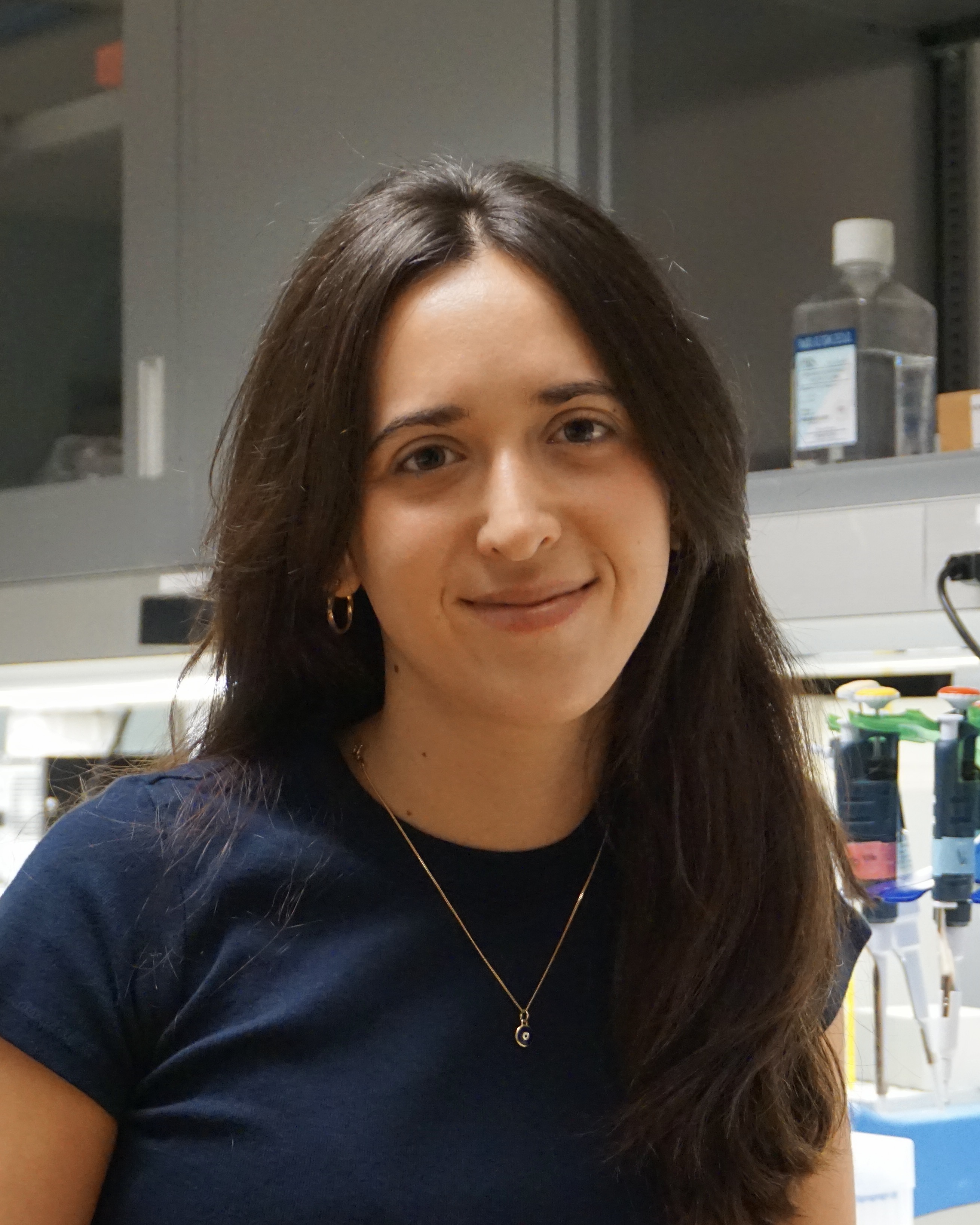 lale.gursu [at] mail.mcgill.ca (Lale Gursu)
lale.gursu [at] mail.mcgill.ca (Lale Gursu)
Assistante de recherche
"Working at The Neuro offers the chance to learn from and work with a broad and diverse team of bright individuals in order to accelerate the discovery of treatments for patients with neurodegenerative diseases."
"The Neuro'da çalışmak, nörodejeneratif hastalıkları olan hastalara yönelik tedavilerin keşfini hızlandırmak için parlak bireylerden oluşan geniş ve çeşitli bir ekipten öğrenme ve onlarla çalışma şansı sunuyor."
Regardez la page biographie de Lale
Lisez la biographie de Lale
Je suis né et j'ai grandi à Istanbul et je suis venue à Montréal pour faire mon baccalauréat à l'Université McGill en Pharmacologie. J'ai rejoint la PDMPP en tant qu'étudiante de premier cycle à l'été 2021 pour travailler avec l'équipe SLA. À ce jour, je suis toujours impliquée dans l'équipe au niveau de différents projets. J'ai obtenu mon diplôme à McGill en 2022 et j'ai eu l'opportunité de continuer ici à la PDMPP, je travaille avec des cellules dérivées de patients et je génère des neurones pour des études sur la SLA.
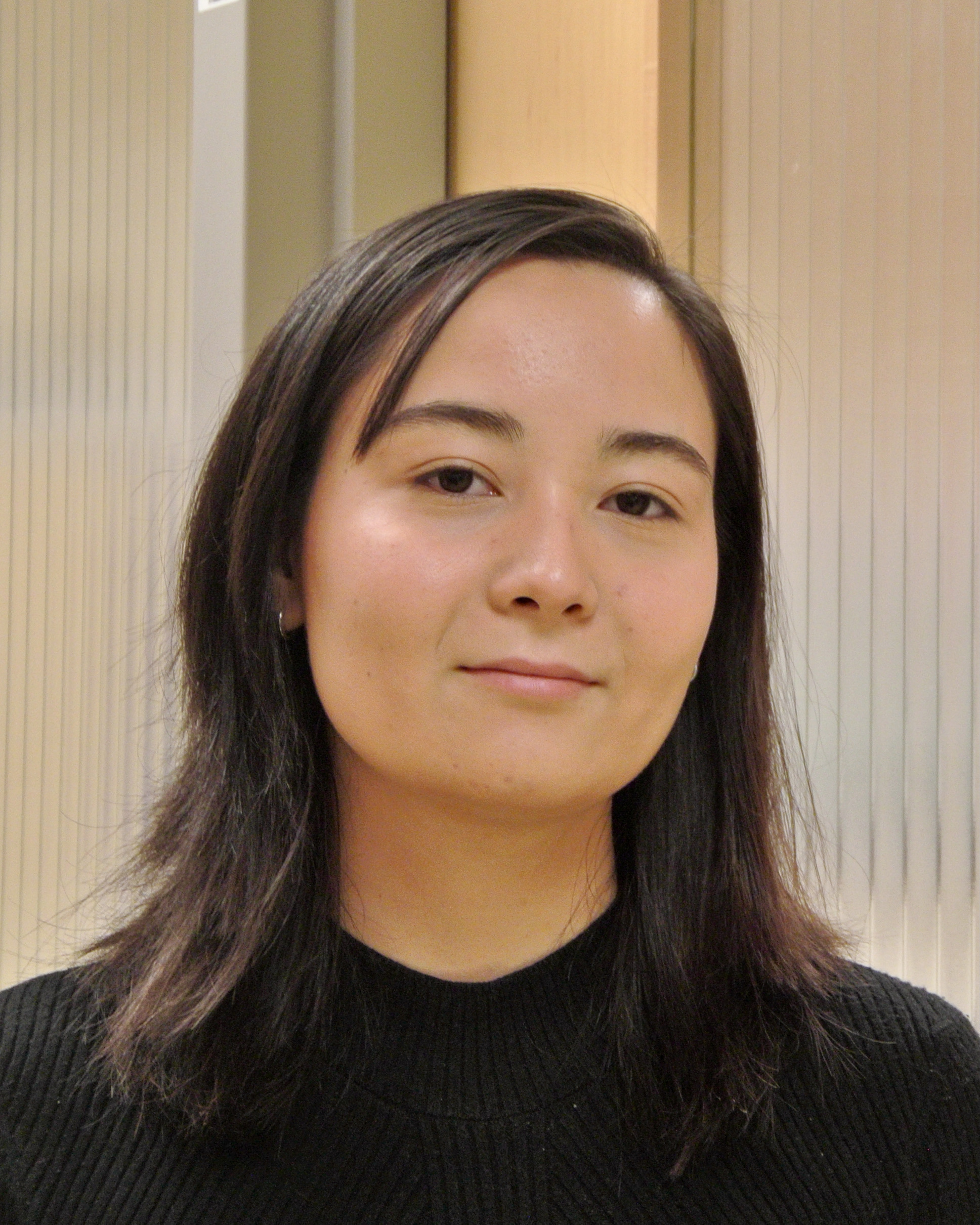 Anelya.gandy [at] mcgill.ca (Anelya Gandy)
Anelya.gandy [at] mcgill.ca (Anelya Gandy)
Étudiante à la maîtrise
"It’s a unique learning opportunity to work in a research-driven environment, use state-of-the-art techniques, and develop valuable skills to collaboratively investigate disease mechanisms and drug discovery tools for neurodegenerative diseases. I am inspired to grow professionally and contribute to the EDDU team, which I thank for the training and support."
"Это уникальная возможность учиться и работать в среде научного исследования, использовать современные технологии, и развить ценные навыки для совместного исследования механизмов болезни и поиска новых методов лечения нейродегенеративных заболеваний. Я вдохновлена возможностью расти профессионально и внести свой вклад в нашу научную команду, которую я благодарю за обучение и поддержку."
Regardez la page LinkedIn d'Aneyla
Lisez la biographie d'Anelya
En tant que graduée de l'Université McMaster au B.Sc. en Biologie et Psychologie, Neurosciences et Comportement, et vu mon intérêt pour l'application des technologies des cellules souches dans la modélisation et la découverte de médicaments pour les maladies neurodégénératives, j’ai décidé de continuer mes études au Neuro. Je suis très heureuse de rejoindre l'équipe PDMPP en tant qu'assistante de recherche au laboratoire du Dr Durcan et je poursuivrai mon parcours professionnel en tant qu’étudiante à la maîtrise dans le programme IPN en janvier 2022.
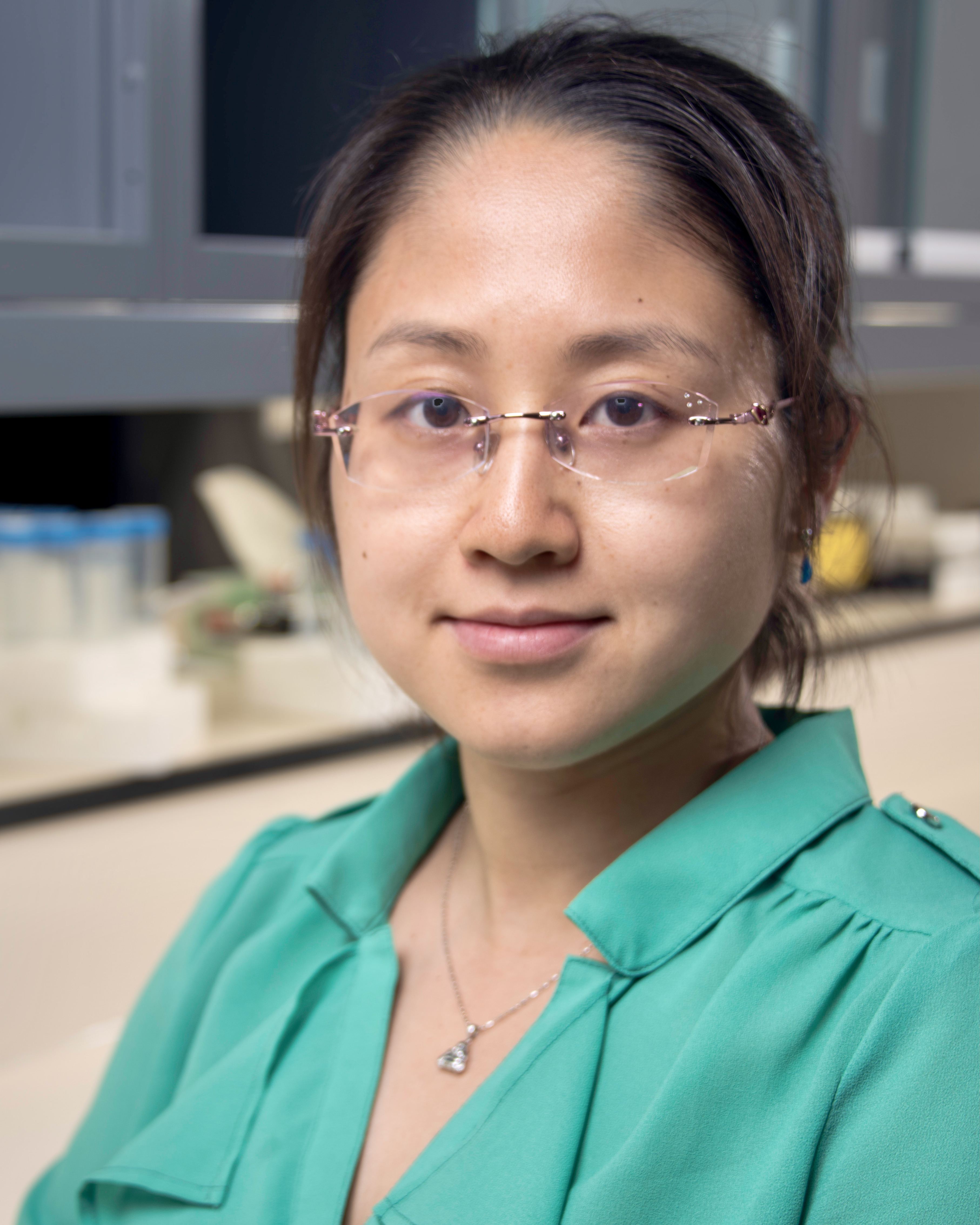 chanshuai.han [at] mcgill.ca (Chanshuai Han)
chanshuai.han [at] mcgill.ca (Chanshuai Han)
Research Associate
"The Neuro gives me a sense of belonging and purpose. Working at The Neuro is not just a job, it is a joy."
"在Neuro,我找到了归属感和使命感;在这里,工作是一种快乐。"
Read Chanshuai's biography
Since the beginning of my doctoral research, my long-term goal has been to elucidate the mechanisms of neurological diseases and to seek possible cures. After completing PhD at the Institute of Biophysics, Chinese Academy of Sciences, I joined The Neuro as a postdoctoral fellow in Dr. Peter McPherson’s lab in 2012, where my research focused on membrane trafficking and neurodevelopmental disorders. I have been working with stem cells since 2016. I joined the Neuro's EDDU as a research associate in 2017. I work in the group of Discovery Assays and Screens, and I serve as the leader of Parkinson’s disease/synucleinopathies team. I am specialized in using iPSC-derived neurons to develop assays for Parkinson’s disease-related drug discovery and using cerebral organoid cultures to model neurodevelopmental disorders.
Selected publications
- Han, C., Chaineau, M., Chen, C. X., Beitel, L. K., & Durcan, T. M. (2018). Open Science Meets Stem Cells: A New Drug Discovery Approach for Neurodegenerative Disorders. Frontiers in neuroscience, 12, 47. https://doi.org/10.3389/fnins.2018.00047
- Han C, Alkhater R, Froukh T, et al. Epileptic Encephalopathy Caused by Mutations in the Guanine Nucleotide Exchange Factor DENND5A. Am J Hum Genet. 2016;99(6):1359-1367. doi:10.1016/j.ajhg.2016.10.006
- Han C, Lu Y, Wei Y, Wu B, Liu Y, He R. D-ribosylation induces cognitive impairment through RAGE-dependent astrocytic inflammation. Cell Death Dis. 2014;5(3):e1117. Published 2014 Mar 13. doi:10.1038/cddis.2014.89
- Tong Z*, Han C*, Qiang M, et al. Age-related formaldehyde interferes with DNA methyltransferase function, causing memory loss in Alzheimer's disease. Neurobiol Aging. 2015;36(1):100-110. doi:10.1016/j.neurobiolaging.2014.07.018. (*Equal contribution)
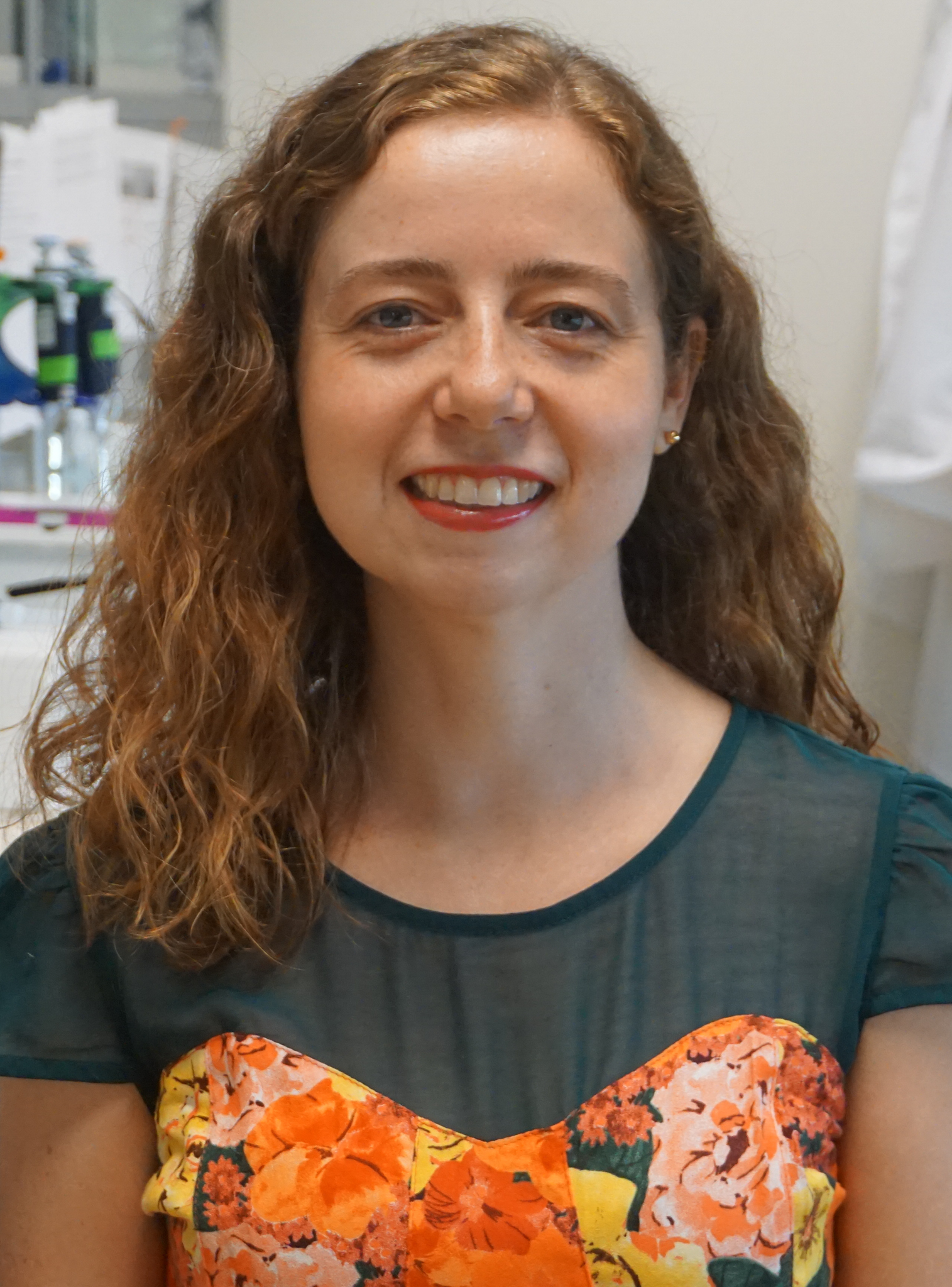 paula.istilli [at] mcgill.ca (Paula Istilli)
paula.istilli [at] mcgill.ca (Paula Istilli)
Assistante de projet: Formation et sensibilisation
"Being part of the Neuro's EDDU team has been an enriching experience. It is gratifying to know that my small contribution helps to spread new research and advances in the field of science focused on the development of treatments for neurological disease."
"Fazer parte da equipe da Neuro's EDDU tem sido uma experiência enriquecedora. É gratificante saber que minha pequena colaboração ajuda a divulgar novas pesquisas e avanços no campo da ciência focados no desenvolvimento de tratamentos para doenças neurológicas."
Regardez la page LinkedIn de Paula
Lisez la biographie de Paula
Je suis née au Brésil et j'ai toujours été passionnée par les voyages et la découverte de nouvelles cultures. La majeure partie de ma carrière s'est déroulée dans l'hôtellerie et le service client, mais j'ai récemment décidé de changer de voie et de m’orienter vers le marketing . Ayant décidé d'étudier le marketing numérique et le français à Montréal, j'ai rejoint l'équipe de formation et sensibilisation en mai 2023 et je suis ravie de partager nos nouvelles recherches et découvertes avec toute personne intéressée.
 david.kalaydjian [at] mail.mcgill.ca (David Kalaydjian)
david.kalaydjian [at] mail.mcgill.ca (David Kalaydjian)
Graduate Student
"The Neuro is a world-renowned research institute with countless people taking part in a common pursuit. Science, in general, is all about the search to know the unknown and I feel as if neuroscience research is the last frontier, and we know so little about it. I want to be a part of a future where we know more, and I hope to have the privilege of being able to continue my journey far past a Graduate Degree and pursue a PhD in order to one day possibly have a lab to myself to inspire and teach other students like me or take my skills and experience into the private sector to continue the amazing work they provide."
Read David's biography
I was born and raised right here in Montréal. My undergraduate studies were done at McGill in Pharmacology & Therapeutics during which time I had a research project at The Neuro with the main goal of developing a method to use suicide gene therapy for chordoma, a rare type of tumour that forms along the spinal cord. Currently, I am a graduate student in the IPN program at McGill. My project focuses on the role of inflammation in Parkinson’s Disease and its link with the gut-brain axis through the use of iPSC-derived midbrain organoids and probiotic-derived secretomes. I’ve loved the sciences for as long as I could remember. For this, I have my parents to thank – who are in the medical field – and the innate nature of science itself, as its purpose is to understand how the world works whether we can see it or not. The building blocks to advance research and science will be the cooperation between different colleagues and teams and this is what Open Science is all about. In my spare time, I enjoy watching and/or playing any and all sports, studying chess strategy, and reading.
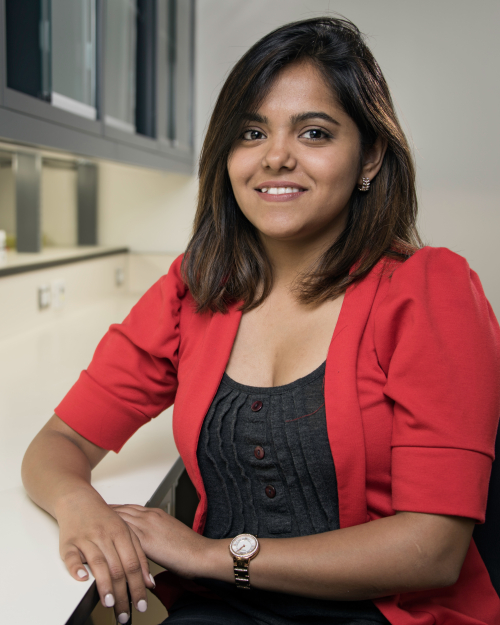 meghna.mathur [at] mail.mcgill.ca (Meghna Mathur)
meghna.mathur [at] mail.mcgill.ca (Meghna Mathur)
Research Assistant
"My grandmother, who I have always been really close to, was diagnosed with Parkinson's disease when I was in undergrad. Since I saw her in that state, I really wanted to work towards finding a cure for such neurodegenerative diseases. That is why when I had the opportunity to work at one of the world’s leading research institutes, I chose to work in this field. This motivates and inspires me to work at The Neuro everyday."
View Meghna's Linkedin
Read Meghna's biography
I am a Research Assistant in the Organoids and Tissue-Engineering group and currently leading the node of Organoids Maintenance and Quality Control. In 2015, I obtained my Biotechnology Engineering degree from India. I gained research experience at the Defence Research and Development Organisation, India and Panacea Biotech Ltd. In 2017, I obtained my MSc Biotechnology from McGill University. During my master’s, I interned with Dr. Nguyen-Vi Mohamed to set up and develop the organoids platform with the support of Dr. Thomas Durcan at the EDDU. Fascinated by my internship project, I joined the EDDU in 2018 to focus on generating different types of organoids from human induced pluripotent stem cells to study neurodegenerative and neurodevelopmental disorders. Part of my work involves optimization and troubleshooting different protocols to generate a more uniform model. During this time, I published in the MNI open research journal, discussing the method to generate human midbrain organoids from iPSC. In addition, I coordinate organoid generation training and oversee maintaining, tracking and managing resources for organoids. Apart from research, I love theatre. I used to perform street plays in India so if I use my street play voice, you'll be able to hear me clearly, even at a two-block distance.
Selected publications
- Mohamed NV, Mathur M, da Silva RV et al (2021) Generation of human midbrain organoids from induced pluripotent stem cells. MNI Open Res.
- Mohamed NV, Lépine P, Lacalle-Aurioles M, Sirois J, Mathur M, Reintsch W, Beitel LK, Fon EA, Durcan TM.( 2021) Microfabricated disk technology: rapid scale up in midbrain organoid generation. Methods, doi: https://doi.org/10.1016/j.ymeth.2021.07.008
- Mohamed N.V, Julien Sirois, Janani Ramamurthy, Meghna Mathur, Paula Lepine, Eric Deneault, Gilles Maussion, Michael Nicouleau, Carol X.-Q. Chen, Narges Abdian, Vincent Soubannier, Eddie Cai, Harris Nami, Rhalena Thomas, Mahdieh Tabatabaei, Lenore K. Beitel, Jason Karamchandani, Tilo Kunath, Edward A. Fon, Thomas M. Durcan. (2021) Midbrain organoids with an SNCA gene triplication model key features of synucleinopathy. Brain Comm. Preprint available: https://www.biorxiv.org/content/10.1101/2021.04.12.439480v1
- Imanbekova, Meruyert; Suarasan, Sorina; Rojalin, Tatu; Mizenko, Rachel; Hilt, Silvia; Mathur, Meghna; Lepine, Paula; Nicouleau, Michael; Mohamed, Nguyen-Vi; Durcan, Thomas; Carney, Randy; Voss, John; Wachsmann-Hogiu, Sebastian, “Identification of amyloid beta in small extracellular vesicles via Raman spectroscopy”, Nanoscale Advances journal. Doi : 10.1039/D1NA00330E
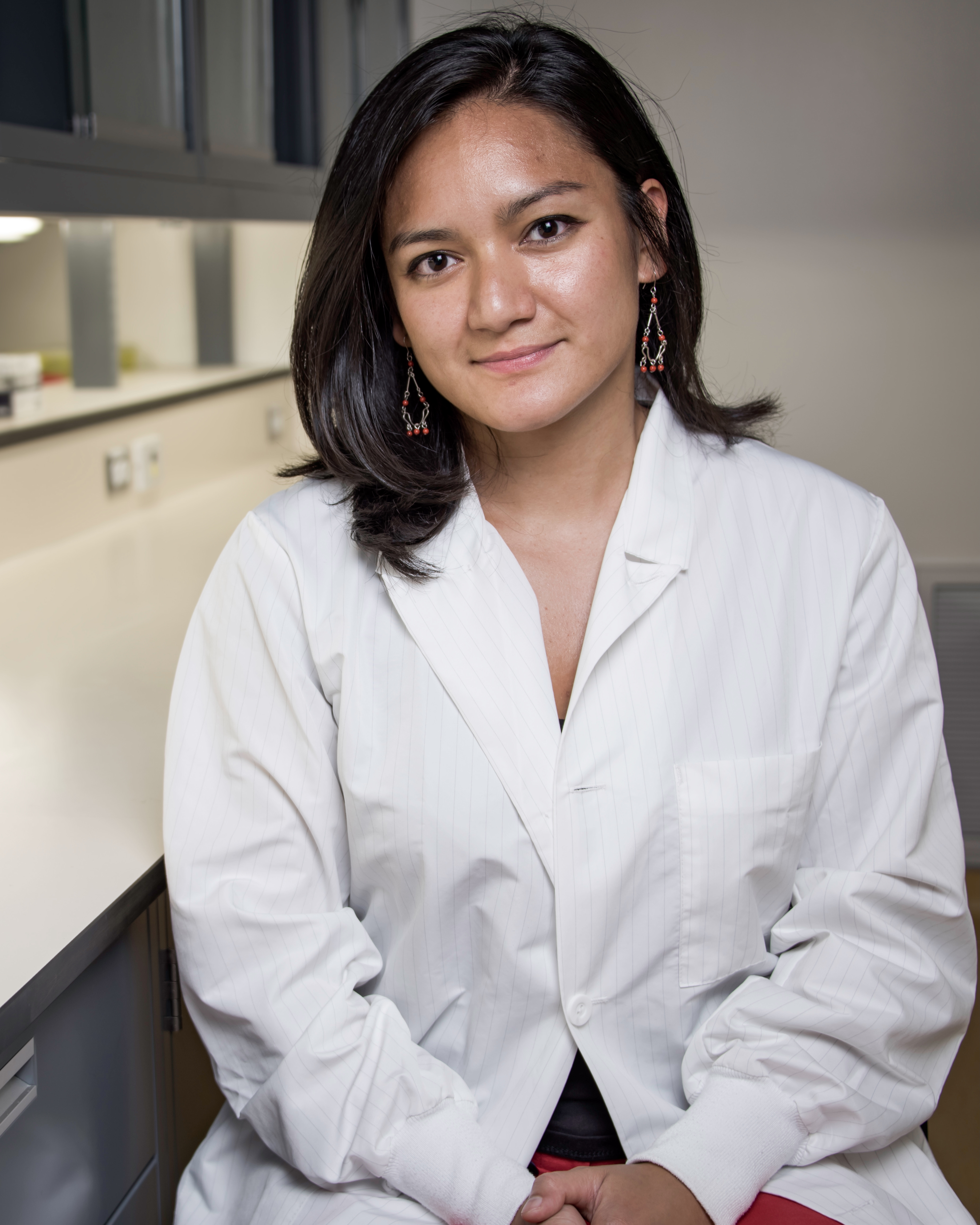 vi.m [at] me.com (Nguyen-Vi Mohamed)
vi.m [at] me.com (Nguyen-Vi Mohamed)
Post-Doctoral Fellow
"The iPSC unit at the Neuro is unique. I really wanted to work with human material coming from patients. That is the reason why I joined the platform."
"Le Neuro possède une unité unique de cellules souches pluripotentes induites. C'est cela qui m'a attirée à rejoindre le Neuro. Je souhaitais vraiment travailler avec du matériel de recherche directement issu des patients."
Read Nguyen-Vi's biography
Dr. Nguyen-Vi Mohamed did her Ph.D at University of Montreal, on tau pathology spreading in Alzheimer’s disease. Interested by the similarities that shared misfolded proteins in Alzheimer’s disease and Parkinson’s disease (PD), she joined Dr. Fon’s laboratory for her postdoc. She implemented the brain organoids technology at the Montreal Neurological Institute (The Neuro) in order to investigate the pathological mechanisms leading to the spreading of Parkinson’s disease within the brain.
Selected publications
- Mohamed N.V, Paula Lépine, Maria la Calle, Julien Sirois, Meghna Mathur, Wolfgang Reintsch, Lenore K. Beitel, Edward A. Fon, Thomas M. Durcan. (2021) Microfabricated disk technology: rapid scale up in midbrain organoid generation. In press in Methods. Preprint available: https://www.biorxiv.org/content/10.1101/2021.05.31.446446v1
- Imanbekova, Meruyert; Suarasan, Sorina; Rojalin, Tatu; Mizenko, Rachel; Hilt, Silvia; Mathur, Meghna; Lepine, Paula; Nicouleau, Michael; Mohamed, Nguyen-Vi; Durcan, Thomas; Carney, Randy; Voss, John; Wachsmann-Hogiu, Sebastian. (2021) Identification of amyloid beta in small extracellular vesicles via Raman spectroscopy. Nanoscale Advances journal. Doi : 10.1039/D1NA00330E
- Mohamed N.V, Julien Sirois, Janani Ramamurthy, Meghna Mathur, Paula Lepine, Eric Deneault, Gilles Maussion, Michael Nicouleau, Carol X.-Q. Chen, Narges Abdian, Vincent Soubannier, Eddie Cai, Harris Nami, Rhalena Thomas, Mahdieh Tabatabaei, Lenore K. Beitel, Jason Karamchandani, Tilo Kunath, Edward A. Fon, Thomas M. Durcan. (2021) Midbrain organoids with an SNCA gene triplication model key features of synucleinopathy. Brain Comm. Preprint available: https://www.biorxiv.org/content/10.1101/2021.04.12.439480v1
- Mohamed N.V, Meghna Mathur, Ronan V. Da Silva, Lenore K. Beitel, Edward A. Fon, Thomas M. Durcan. (2019) Generation of human midbrain organoids from induced pluripotent stem cells. MNI Open Science Journal. https://doi.org/10.17605/OSF.IO/GF39H
- Mohamed N.V, Larroquette F., et al. (2019) One step into the future: new iPSC tools to advance research in Parkinson’s disease and neurological disorders. Journal of Parkinson’s disease.
 barbara.morquette [at] mcgill.ca (Barbara Morquette)
barbara.morquette [at] mcgill.ca (Barbara Morquette)
Research Associate
"As far as I can remember, I have always been fascinated by the intricate beauty of the nervous system. The Neuro is an institution involving researchers and physicians working toward finding solutions to neurological diseases, and it aims to rapidly make new fundamental discoveries available to those who need them the most: patients. The Neuro is a place where I can continue doing what I love most: being part of an interdisciplinary team of experts, working with cutting-edge technologies, and contributing to translational research that will help shed light on neurological disease mechanisms, and ultimately, improve the health of patients."
Read Barbara's biography
Growing up in a medical environment, I became aware of health issues and of the necessity of new discoveries to continually improve our living conditions and those of our loved ones facing diseases. From this, the desire to pursue a career in basic research made its way. Originally from Haiti, I started my biomedical studies at the Université de Montréal. After my master’s degree in the field of osteoarthritis (OA), I pursued my PhD in Neuroscience at the CR-CHUM under the supervision of Dr. Adriana Di Polo. There, I studied the molecular mechanisms underlying morphological changes of acutely injured adult retinal neurons. Subsequently, I continued my research as a post-doctoral fellow at The Neuro in the lab of Dr. Alyson Fournier where I sought to understand the influence of the inflammation on neurodegeneration and axonal repair in Multiple Sclerosis. I am currently continuing my journey in neuroscience as a Research Associate at the EDDU. Here, I hope to contribute in deciphering the mechanisms underlying neurodevelopmental disorders by using cutting edge human-derived organoids (mini-brains).
Selected publications
- Morquette B*, Juźwik CA*, Drake SS, Charabati M, Zhang Y, Lécuyer MA, Galloway DA, Dumas A, de Faria Junior O, Paradis-Isler N, Bueno M, Rambaldi I, Zandee S, Moore C, Bar-Or A, Vallières L, Prat A, Fournier AE. MicroRNA-223 protects neurons from degeneration in experimental autoimmune encephalomyelitis. Brain. 2019 Oct 1;142(10):2979-2995. * co-first authors
- Girouard MP, Simas T, Hua L, Morquette B, Khazaei MR, Unsain N, Johnstone AD, Rambaldi I, Sanz RL, Di Raddo ME, Gamage KK, Yong Y, Willis DE, Verge VMK, Barker PA, Deppmann C, Fournier AE. Collapsing Response Mediator Protein 4 (CRMP4) Facilitates Wallerian Degeneration and Axon Regeneration following Sciatic Nerve Injury. eNeuro. 2020 Mar 2;7(2):ENEURO.0479-19.2020.
- Juźwik CA, Drake S, Lécuyer MA, Johnson RM, Morquette B, Zhang Y, Charabati M, Sagan SM4, Bar-Or A, Prat A, Fournier AE. Neuronal microRNA regulation in Experimental Autoimmune Encephalomyelitis. Sci Rep. 2018 Sep 7;8(1):13437
- Andrew Kaplan, Barbara Morquette, Antje Kroner, SooYuen Leong, Carolin Madwar, Sara L. Banerjee, Jack Antel, Nicolas Bisson, Samuel David, Alyson E. Fournier. Small molecule stabilization of 14-3-3 protein-protein interactions stimulate axon regeneration. Neuron. 2017 Mar 8;93(5):1082-1093
- Morquette B, Morquette P, Agostinone J, Feinstein E, McKinney AR, Kolta A, Di Polo A, (2015). REDD2-Mediated Inhibition of mTORC1 Promotes Dendrite Retraction Induced by Axonal Injury in Vivo. Cell death and differentiation (Nature publishing group) Apr;22 (4):612-25
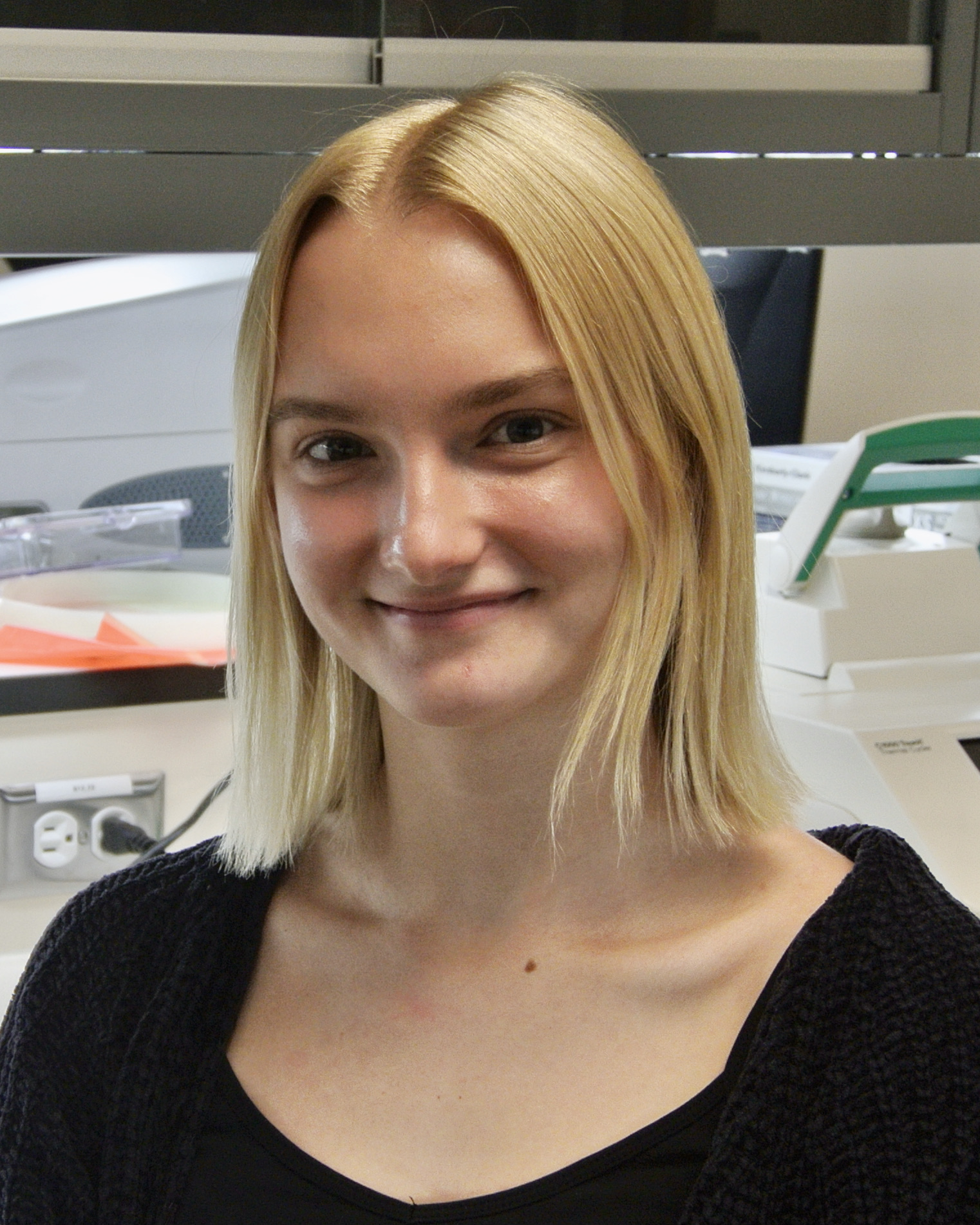 sophia.penner [at] mail.mcgill.ca (Sophia Penner)
sophia.penner [at] mail.mcgill.ca (Sophia Penner)
Communications and Outreach Assistant
"Working at the Neuro's EDDU alongside so many brilliant scientists is a privilege. I am always learning new and exciting things about the brain, and I am grateful to my colleagues here for inviting me into the EDDU community."
View Sophia's Linkedin
Read Sophia's biography
I am originally from New Zealand, but have grown up in Toronto and moved to Montreal in 2019 to do my undergrad at McGill. I am majoring in Cognitive Science, which is the interdisciplinary field between neuroscience, psychology, philosophy, computer science and linguistics. I am fascinated by human cognition and I believe that integrating knowledge from all of these different fields will help me develop a deeper understanding of the mind. I started working at the EDDU in the summer of 2021 as an assistant on the Communications and Outreach team alongside my wonderful colleague Luisa Pimentel. I am in charge of managing the EDDU’s website, data portal, and our new collections of iPSC protocol videos on YouTube, as well as filming and editing content for the lab. My work helps to promote Open Science by making the EDDU’s research available online in many different languages so that researchers around the world can access it. I am lucky to be able to witness the amazing research being done at the EDDU, and I look forward to sharing more of it with the world! Besides working at the EDDU, I enjoy playing ultimate frisbee, camping, snowboarding, and spending time in Parc la Fontaine with a good book.
 luisa.pimentel [at] mail.mcgill.ca (Luisa Pimentel)
luisa.pimentel [at] mail.mcgill.ca (Luisa Pimentel)
Coordonnatrice de projet: Programmes de formation et sensibilisation
"I believe that the democratization of knowledge is an essential factor in accelerating the discovery of new treatments for neurological diseases in order to benefit the largest number of patients and contribute to international scientific progress."
"Eu acredito na democratização do conhecimento como um fator essencial para acelerar a descoberta de novos tratamentos para doenças neurológicas, a fim de beneficiar o maior número possível de pacientes e contribuir para o avanço científico internacional."
Regardez la page Linkedin de Luisa
Lisez la biographie de Luisa
Je suis originaire de Rio de Janeiro, au Brésil, où j'ai découvert le domaine fascinant des neurosciences. J'ai déménagé au Canada pour poursuivre mes études sur la maladie d'Alzheimer et au cours de ma 10e année à Montréal, j'ai rejoint la PDMPP en tant qu'assistante de recherche pour travailler dans les domaines passionnants des iPSC et de l'édition de gènes par CRISPR. En avril 2021, j'ai relevé un nouveau défi : je suis devenue coordonnatrice de projet de la PDMPP pour les programmes de formation et de sensibilisation. Dans mon rôle actuel, je suis responsable de la création de contenu pour les initiatives de formation et de sensibilisation à la PDMPP ainsi que de l'organisation d'événements de formation et de sensibilisation. Nous proposons à la fois des activités de science ouverte destinées aux scientifiques d'iPSC et d'autres conçues pour le grand public. Travailler à la PDMPP, c'est avoir accès à une technologie de pointe tout en faisant partie d'une équipe collaborative qui travaille à faire progresser la découverte de médicaments. Comme je crois fermement au principe de "donner en retour", c'est un plaisir de faire partie de l'initiative de Science Ouverte et de construire des partenariats au profit des patients du monde entier. Je suis également très heureuse de collaborer avec des scientifiques au Brésil. Je suis ravie de faire partie des avancées futures des neurosciences. Afin de rester sur la bonne voie avec mes objectifs à la PDMPP, je pratique le yoga quotidiennement et je médite presque tous les jours.
Publications sélectionnées
- Maussion Gilles, Rocha Cecilia, Pimentel Luisa, Beitel Lenore and Durcan Thomas (2021) Human induced pluripotent stem cell-based studies; a new route toward modeling autism spectrum disorders. In book: iPSCs for Modeling Central Nervous System Disorders (pp.37-81), doi: 10.1016/B978-0-323-85764-2.00007-7
- Pimentel LS; Allard S; Weinreb O; Danik M; Hanzel CE; Youdim M and Cuello AC. (2015) The Multi-target Drug M30 Shows Pro-cognitive and Anti-inflammatory Effects in a Rat Model of Alzheimer's Disease. Journal of Alzheimer’s Disease.
- Hanzel CE; Pichet-Binette A; Pimentel LS; Iulita MF; Allard S; Ducantenzeiler A; Do Carmo S and Cuello AC (2014) Neuronal driven pre-plaque inflammation in a transgenic rat model of Alzheimer’s disease. Neurobiol Aging. doi:: 10.1016/j.neurobiolaging.2014.03.026.
- Castro NG; Costa RS; Pimentel LS; Danuello, A; Romeiro NC; Viegas-Junior C; Barreiro EJ; Fraga CAM; Bolzani VS; Rocha MS. (2008) CNS-selective noncompetitive cholinesterase inhibitors derived from the naturalpiperidine alkaloid (-)-spectaline. Eur J Pharmacol.
- Viegas-Junior C; Bolzani VS; Pimentel LS; Castro NG; Cabral RF; Costa RS; Rocha MS; Young MCM; Barreiro EJ; Fraga CAM. (2005) New Acetylcholinesterase Inhibitors Designed from Natural Piperidine Alkaloids. Bioorg Med Chem.
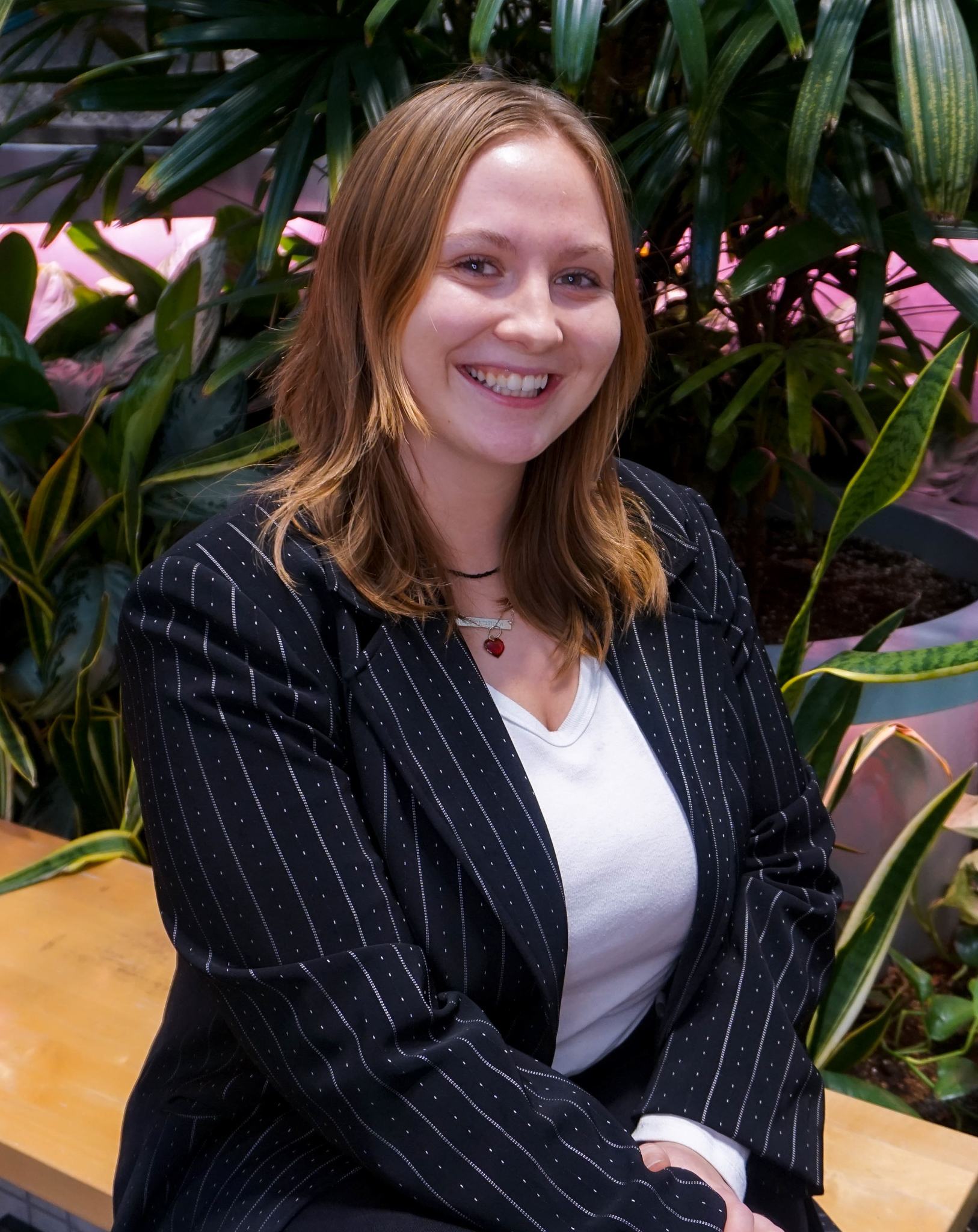 alexandria.schneider [at] mcgill.ca (Alexandria Schneider )
alexandria.schneider [at] mcgill.ca (Alexandria Schneider )
Assistante de recherche
"The brain continues to be one of the most elusive and exciting organs to study, and it has been a long-standing goal of mine to further our understanding of the brain and the diseases that threaten it. I am grateful to work at The Neuro where I am surrounded by scientists who have that same drive. Everyone at the EDDU is always learning ways to better their research through collaboration with our institution, its affiliates, and other academic and research centres. I am very proud to be a part of the community of hard-working researchers, physicians, and workers that make the Neuro the monumental research and treatment facility that it is."
"J’ai toujours été fasciné par les opportunités et les défis que représente la recherche en neurosciences, et je suis tres reconnaissante de travailler au Neuro ou je suis entourée de scientifiques qui ont le meme objetcif . Je suis tres fiere de faire partie de cette communauté de chercheurs qui font du Neuro une entité de recherche majeure oeuvrant pour la recherche et la découverte de traitement des maladies neurodégénératives.""
Regardez la page LinkedIn d'Alexandria
Lisez la biographie d'Alexandria
Je suis née à Belleville, en Ontario, et j’avais tres envie de poursuivre mes études scientifiques dans une grande ville. J'ai déménagé à Montréal pour étudier à McGill et j'ai obtenu mon diplôme de premier cycle en biochimie en 2023. J'ai rejoint l'EDDU à l'été 2022 en tant que stagiaire dans l'équipe iPSC et CRISPR. Depuis, j'ai travaillé pour l'équipe SLA, en tant qu'aide de laboratoire, et plus récemment, je travaille dans notre nouveau laboratoire satellite à l'IRCM (Institut de recherches cliniques de Montréal) où nous expérimentons le développement d'autres tissus dérivés de l'iPSC. Je suis heureuse de contribuer à l'engagement de l'EDDU en faveur de la science ouverte. Cela signifie que les recherches que nous menons ici sont accessibles aux scientifiques du monde entier, créant ainsi un réseau de collaboration dont la priorité est l'amélioration de la santé des patients.
Publications sélectionnées
- Transcriptome-based screening in TARDBP/TDP-43 knock-in motor neurons identifies the NEDD8-activating enzyme inhibitor MLN4924 Sarah Lépine, Gilles Maussion, Alexandria Schneider, Angela Nauleau-Javaudin, María José Castellanos-Montiel, Georgina Jiménez Ambriz, Dan Spiegelman, Narges Abdian, Anna Krystina Franco-Flores, Ghazal Haghi, Lale Gursu, Mathilde Chaineau, Thomas Martin Durcan bioRxiv 2024.01.30.578100; doi: https://doi.org/10.1101/2024.01.30.578100
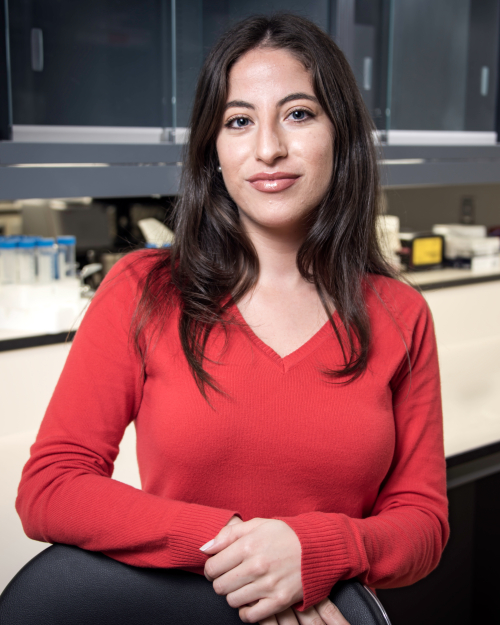 lorenza.villegas [at] mail.mcgill.ca (Lorenza Villegas)
lorenza.villegas [at] mail.mcgill.ca (Lorenza Villegas)
Research Assistant
"Diversity, knowledge, and modern methods of science are the things that make us grow as humans. I respect the individuality of human beings, and at The Neuro we apply these concepts to be able to progress with medicine in the constant search for a cure for neurological diseases, and to make the world a better place. That is what keeps me going."
"La diversidad, el conocimiento, y los métodos modernos de la ciencia son las cosas que nos hacen crecer como humanos. Yo respeto a la individualidad de los seres humanos, y en el Neuro aplicamos estos conceptos para poder progresar con la medicina en la búsqueda constante para una cura para las enfermedades neurológicas, y poder hacer el mundo un lugar mejor. Eso es lo que me hace seguir todos los días."
View Lorenza's Linkedin
Read Lorenza's biography
Originally from Bogota, Colombia, I am a U.S citizen with a bachelor’s degree in Psychology and Behavioral Neuroscience. I arrived in 2017 to McGill University’s Integrated Program of Neuroscience to obtain my master’s degree in neuroscience. I did my research thesis at the EDDU which involved using CRISPR/Cas9 technology on cell lines to understand the protein interaction of Spinocerebellar Ataxia Type 3 and its parkinsonian phenotype. Throughout my academic career, I’ve matured intellectually and learned more specific and complex biological concepts of the brain. I have now evolved into a research assistant carrying out the oversight of the laboratory’s reagents and contributing as a helping hand with labmate’s projects. I am proud to say I ma contributing to scientific progress and making an impact in the scientific community and the world.
 chanshuai.han [at] mcgill.ca (Chanshuai Han)
chanshuai.han [at] mcgill.ca (Chanshuai Han)
Research Associate
"The Neuro gives me a sense of belonging and purpose. Working at The Neuro is not just a job, it is a joy."
"在Neuro,我找到了归属感和使命感;在这里,工作是一种快乐。"
Read Chanshuai's biography
Since the beginning of my doctoral research, my long-term goal has been to elucidate the mechanisms of neurological diseases and to seek possible cures. After completing PhD at the Institute of Biophysics, Chinese Academy of Sciences, I joined The Neuro as a postdoctoral fellow in Dr. Peter McPherson’s lab in 2012, where my research focused on membrane trafficking and neurodevelopmental disorders. I have been working with stem cells since 2016. I joined the Neuro's EDDU as a research associate in 2017. I work in the group of Discovery Assays and Screens, and I serve as the leader of Parkinson’s disease/synucleinopathies team. I am specialized in using iPSC-derived neurons to develop assays for Parkinson’s disease-related drug discovery and using cerebral organoid cultures to model neurodevelopmental disorders.
Selected publications
- Han, C., Chaineau, M., Chen, C. X., Beitel, L. K., & Durcan, T. M. (2018). Open Science Meets Stem Cells: A New Drug Discovery Approach for Neurodegenerative Disorders. Frontiers in neuroscience, 12, 47. https://doi.org/10.3389/fnins.2018.00047
- Han C, Alkhater R, Froukh T, et al. Epileptic Encephalopathy Caused by Mutations in the Guanine Nucleotide Exchange Factor DENND5A. Am J Hum Genet. 2016;99(6):1359-1367. doi:10.1016/j.ajhg.2016.10.006
- Han C, Lu Y, Wei Y, Wu B, Liu Y, He R. D-ribosylation induces cognitive impairment through RAGE-dependent astrocytic inflammation. Cell Death Dis. 2014;5(3):e1117. Published 2014 Mar 13. doi:10.1038/cddis.2014.89
- Tong Z*, Han C*, Qiang M, et al. Age-related formaldehyde interferes with DNA methyltransferase function, causing memory loss in Alzheimer's disease. Neurobiol Aging. 2015;36(1):100-110. doi:10.1016/j.neurobiolaging.2014.07.018. (*Equal contribution)





